Visitor information
- Go Belgrade , ☏ +381 11 26 35 622 , information from the Tourist Organisation of Belgrade.

Getting there and away :
- Bus 72 runs every 30 mins to Zeleni Venac, close to the inter-city bus station and Republic Square. The fare is RSD 50, pay the driver (and get some small notes at the currency exchange). It's a 40-50 min ride into town, zigzagging through the shopping malls of the western burbs. Buses run daily 05:00-23:30. The bus runs from outside Departures, so from Arrivals you need to go upstairs. At Zeleni Venac the stop for the 72 is the furthest uphill, or most easterly, on the main platform with all the fast food outlets.
- Bus 600 runs every 30-40 mins to Cetnral Train Station (Beograd Centar-Prokop). The fare is RSD 50.
- Minibus A1 runs between the airport and Slavija Square, stopping at Fontana (Novi Beograd) and the main bus station. The buses are comfortable and air-conditioned. The fare is RSD400, pay the driver. The also accept euros, while the amount demanded is only €4 (which by December 2022 doesn't make much sense). The trip takes 30 minutes. This bus also runs at night, with a short break from around 02:00-04:00.
- By taxi – If you prefer taxis, read the precautions described below. The fare from the airport is fixed - most taxi companies have a price list in multiple languages. The price is around RSD3000 to the center and New Belgrade and RSD4000 to the suburbs, and includes luggage. You can order a taxi by phone or simply go to the designated taxi booth, obtain a slip which has your destination written down and hand the slip to the taxi driver.
This is the best overland option from western Europe while the railway is being dug up. There are buses at least daily to Budapest (6-7 hours), Sarajevo (7 hours), Sofia (11 hours) and Thessaloniki (10 hours via Niš and Skopje). Buses connect Belgrade to all the main cities of Serbia: some speed along the motorway, others wend and wind through small towns en route, so check: the next departure might not be the quickest option. Quality of coaches is variable. They stop every 3 or 4 hours for a rest break - keep a close watch on your belongings at these stops, and on arrival be intensely suspicious of taxi touts and supposed luggage porters.
Local buses don't use BAS, but the bus stands adjacent south. There are no gates or charges to enter this area.
Routes to Centre station include:
- Budapest Keleti: 8-9 hours, two daytime trains and one overnight. Departures are around 08:00, 12:00 and 22:00 in both directions (no longer in operation).
- Change in Budapest from most destinations further west, and from Eastern Europe. But there is one direct train a day from Vienna (12 hr) via Budapest. There's also one from Zürich (23 hr), via Zagreb (7 hr), Ljubljana (9 hr), Villach (12 hr) and Innsbruck (18 hr).
- Trains from Novi Sad run about twice every hour, taking 36-57 minutes depending on the type of express train. Timetables are available on SrbijaVoz website . Regional train tickets cost RSD393 and Soko non-stop train tickets cost RSD483. Be careful that the ticket seller may charge you an extra RSD120 for sitting on the upper deck of the Soko train. The Soko trains are rarely full and train conductors do not check if you're sitting in your assigned seat.
- An overnight train "Lovcen" runs to and from Bar (11 hours) via Podgorica and offers a car transport service (note that the cars can only be loaded at the Zemun station, which is the terminus station for these trains. The day train "Tara" runs only during the summer season.
Southbound trains for Thessaloniki, Athens and Istanbul no longer run and probably won't until Belgrade-Niš is upgraded to high-speed rail.
Coming from north or south use the E-75 highway. The Ibarska magistrala (Ibar highway, M-22) approaches from Montenegro and the southwest. From the west (eg Zagreb and Ljubljana) use E-70. There are also major roads from Vršac and Zrenjanin .
Highways have toll stations, which are moderately priced. Serbia's only toll highways are parts of E-70 and E-75, which as A3 goes through the middle of Belgrade. If you're heading for Bulgaria or Greece via Niš, the signs will lead you onto A1 the southern bypass. But except in rush hour, it's just as quick to stay on A3 through the city. A1 is a modern but undivided highway, and you're sure to fetch up behind a slow truckload of watermelons, as heavy goods vehicles are required to use this road and avoid city centre.
Cruises along the Danube sometimes call at Belgrade, but there are no point-to-point ferries.
Belgrade is on European bicycle route Eurovelo 6 which connects the Atlantic Ocean and Black Sea. The route across Serbia is from Budapest via Osijek and Novi Sad to Belgrade, continuing east to Vidin.


Festivals and events
- 44.79676 20.43636 5 Belgrade Fair ( Beogradski Sajam ), Bulevar vojvode Mišića 14 ( southwest of the centre hosts trade fairs ). throughout the year, check website for those open to the public. . ( updated Feb 2020 )
- Street of Open Heart is a carnival held on 1 January, 12:00 to 23:00, on Makedonska and Svetogorska streets.
- Guitar Art Festival , March
- FEST , International Film Festival, March
- Belgrade Tango Encuentro [dead link] , April–May
- Ring Ring , Festival of new and improvised music, May
- Belgrade Burger Fest, end of May - beginning of June
- Belgrade Early Music Festival , 18 May–June, no information for 2023, might be canceled
- Belgrade Beer Festival , June (2023) or August (pre-2023) in Ušće park
- BITEF Belgrade International Theater Festival, September
- BEMUS , Belgrade Music Festival, October
- Belgrade Jazz Festival , October
- Green Fest [dead link] International green culture festival, November
- No Sleep Festival of electronic, house & retro music in November
- Watch football: Belgrade hosts internationals and has five clubs playing soccer in SuperLiga, the country's top tier.
- Basketball: Štark Arena and Pionir Hall are the main venues for basketball and other indoor sports.
- Tennis is played at the Novak Tennis Center [dead link] (Serbia Open), as well as in Kombank Arena (Davis Cup matches).
Serbian courses for foreigners are organized in several places including:
- Concord [dead link]
- Institute for Foreign Languages
- Serbian Language and Culture Workshop
The University of Belgrade [dead link] admits foreign students, as do various private institutions of higher education.

For information on the Serbian currency, see Serbia#Buy . Menjačnica Mićko (Vuka Karadzica street #4), changes all currencies, including rare ones.
Most stores operate late hours during work days, while on Saturdays they normally close around 15:00 and most of them are not open on Sundays. However, shopping malls are open late every day, including weekends.
Clothes and accessories
Import taxes make clothes and shoes in Serbia very expensive. Many items from common European chains can be found for 20% less in Budapest. Still, Belgrade has many flagship stores , mostly located on Knez Mihailova Street and the Terazije square, or the pedestrian zone, representing assorted high-fashion brands.
Almost all of the major European brands are present, including H&M, Guess, New Yorker, Zara, Bershka, Hugo Boss, Springfield, Stradivarius, Mango, Diesel, Liu Jo, C&A, and Pull & Bear. More expensive clothes & accessories (such as Diane Von Furstenberg, Lanvin, Marni, D&G, Valentino, Marc Jacobs, YSL, Mulberry and many others) can be usually found either at the Kralja Petra street (Dorćol) in Distante Fashion center, as well as in XYZ stores that are located in Ušće Shopping Center and Delta City.
Local department store chains include Artisti and Land.
Local Belgrade designers are present in the Choomich (Belgrade Design District) shopping center.
The biggest bookstores in Belgrade selling beside Serbian also foreign (mostly English) books are in the city center. Vulkan is at the beginning and Plato is at the end of Knez Mihailova street. The shopping malls also have large bookstores. There are also some shops that sell newspapers and magazines in English, German, French, Italian, Russian and other foreign languages.
- Delfi , ☏ +381 11 2645-783 . Inside Student Cultural Center (SKC), Kralja Milana 48, M–Sa 09:00-20:00, Su 12:00-21:00
- Vulkan , corner of Sremska and Knez Mihajlova , ☏ +381 11 2639-060 . M–Sa 00:00–22:00, Su 12:00–22:00 .
- Plato , Knez Mihailova 48 , ☏ +381 11 2625-834 .
International newspapers and magazines
Newsstands and bookstores in the city sell foreign newspapers and magazines. These include Delfi, Plato Press (near Studentski trg), Tell Me (next to the Plato store) and Inmedio (three locations - Delta City, Usce Center, Zira Center). Newspapers and magazines can be found in various international languages like English, Spanish, Italian, French, Russian, German and others.
Farmer's market
Depending on the season, an amazing assortment of fruit and vegetables can be found in farmer's markets, including watermelons, olives, wild mushrooms, and fresh figs. Take the time to explore the stalls, and compare the quality and prices of the produce. Most produce at the farmer's markets in Belgrade is organic and fresh from the farmers' gardens brought over daily from the villages surrounding the city.
- 44.813242 20.457605 1 Pijaca Zeleni Venac ( The farmer's market at Zeleni Venac ) ( close to the Hotel Moscow ). - This is not the largest, but it is the cheapest in the city. Contained in a newly-built complex, it makes for an enjoyable Saturday morning experience, with the lively hustle and bustle of people milling about and stall-owners trying to attract customers. ( updated May 2022 )
City centre north of the Museum of Illusions
- 44.817107 20.457412 2 KMN , Zmaj Jovina 11 . Amazing selection of domestic cousine, very configurable, very tasty and affordable. Staff is very friendly and very well organised so queue clears up quickly. A lot of vegetarian options ( updated Aug 2022 )
- 44.816845 20.455653 3 Roll Bar café&restaurant , Obilićev venac 1 . Excellent quality, considerable portions. Recommendation for imperial chicken and feta chicken. ( updated Aug 2022 )
- 44.815025 20.458043 4 Mikan Restaurant , Maršala Birjuzova 14 . Very good typical Serbian restaurant with traditional dishes. Great food, friendly staff, nice atmosphere and good prices. ( updated Aug 2022 )
- 44.815851 20.461758 5 Pizzeria Trg , Makedonska 5 . Delicious pizza and pancakes ( updated Aug 2022 )
- 44.816114 20.462723 6 Skadarlijske kobasice , Skadarska 4 . Dishes with excellent sausages ( updated Aug 2022 )
Bars and nightlife
Belgrade is famous for its bars and clubs and vies with Budapest's techno scene, clubs are open until dawn in many parts of the city and even during weekdays parties can be found
- Three Carrots Irish pub , Kneza Miloša ( near corner with Kralija Milana ). M-F 10:00-00:00, Sa Su 12:00-00:00 . Cheerful place with food & music. ( updated May 2019 )
- Black Turtle , Kosančićev venac 30 ( near Kalemegdan ), ☏ +381 11 3286-656 . Su-Th 09:00-00:00, F Sa 09:00-01:00 . Chain pub run by Black Turtle brewery, several other outlets in city. Off-beat beers, eg mixed with lemon and blueberry syrup, as well as memorable river view at summer sunset if you can grab an outdoor table. ( updated May 2019 )
- Ferijalni i hostelski savez Srbije - Youth Hostel Association of Serbia ( Hostelling International Serbia ), Dom Omladine, Makedonska 22/2 ( down town ), ☏ +381 64 112 1040 , [email protected] . FHSS - Youth hostel association Serbia is the biggest hostel network in Serbia, representative for Hostelling International.
- 44.816441 20.458189 1 Hostel 360 ( Belgrade Hostel ), Knez Mihailova 21 ( On the main pedestrian street ), ☏ +381 11 3284 523 , [email protected] . Check-in: 14:00 , check-out: 12:00 . Roof garden, barbeques, and a shared kitchen. Coffee, tea and laundry are free. From €28 for single, €36 for double . ( updated Jan 2023 )
- 44.8225 20.4311 2 ArkaBarka Floating Hostel , Ušće bb, Blok 14, Novi Beograd ( On the Danube River, near Park Prijateljstva Block 14 ), ☏ +381 64 9253507 , [email protected] . A floating house on the Danube, with an on-board cafe-bar, sauna. Breakfast included. Dorm bed from €18, Private single from €37 . ( updated Jan 2023 )
- 44.8187 20.45511 3 Hostel Che , Kralja Petra 8 ( near Archangel Michael church ), ☏ +381 11 2637793 , +381 63 8379461 (cell phone) , [email protected] . Check-out: 11:00 . Clean, cozy place. They have free sheets, towels, laundry, games, books, Wi-Fi, welcome drink, coffee, and tea. Dorm from €16, private room from €35 ppn . ( updated Jan 2023 )
- 44.822161 20.43377 4 San Art Floating Hostel & Apartments , Usce bb, Novi Beograd ( On Danube ), ☏ +381 63238278 . Check-in: 14:00 , check-out: 11:00 . Is it a chalet, is it a houseboat? Clean, well-run, friendly hostel near river confluence. Traditional breakfast. Double room from €39 . ( updated Jan 2023 )
- 44.79848 20.4753 5 Sun Hostel , Novopazarska 25 ( Vracar, near St Sava ), ☏ +381 65 4489575 , [email protected] . Check-in: 14:00 , check-out: 12:00 . Well-run hostel, clean and spacious, with dorms, apt & private rooms. Comfy, a/c, safe-lockers backpack size, free internet, friendly staff. Dorm bed from €22, Private double from €44 . ( updated Jan 2023 )
- 44.80583 20.4896 6 Fair and Square Hostel , Svetog Nikole 68 ( Zvezdara, near Vukov Spomenik ), ☏ +381 11 42 31 787 , [email protected] . Check-in: 14:00-23:30 , check-out: 9:00-11:00 . Comfy rooms, large kitchen and public area as well as patio, two hostel pets a dog and a cat, murals and artwork in public areas. Dorm bed from €12, Double private from €23 . ( updated Jan 2023 )
- 44.8159 20.45178 7 Balkan Soul Hostel , Kosančićev venac 11a ( In Kosancicev Venac, up some steps from the Sava River near the Brankov bridge ), ☏ +381 60 6600685 , [email protected] . Check-in: 14:00 , check-out: 11:00 . Small but very social and cozy hostel with a well-equipped shared guest kitchen and lounge. Rooms have good air conditioning and wi-fi. ( updated Jan 2023 )
Emergencies
In case of an emergency, call 192 (police), 193 (fire) or 194 (ambulance). Always carry the phone number and an address of your embassy with you. In case of injury or illness, the place to go is the Urgentni centar (Emergency center), Pasterova 2 of the Clinical Center of Serbia. Be aware that not all medical facilities have personnel that speak English or other foreign languages. Consult the embassy of your country if possible.
Pharmacies on duty 24/7:
- Prvi maj , Kralja Milana 9, +381 11 3344-923
- Sveti Sava , Nemanjina 2, +381 11 2643-170
- Zemun , Glavna 34, +381 11 2618-582
- Dom Zdravlja Novi Beograd , Palmira Toljatija 7
The international telephone code for Serbia is 381. Most cities in Serbia and mobile operators have 2-digit area code. There is only one area code for Belgrade and that is 11. Typical land-line phone number in Belgrade +381-11/xxx-xxxx. Typical mobile phone number is +381-6x/xxx-xxxx. From Serbian land line phone, use 00 prefix for international calls (e.g. 0031-20/xxx-xxxx for Amsterdam, Netherlands), and prefix 0 for calls inside Serbia but outside your area (e.g. 021/xxx-xxxx for Novi Sad, Serbia or 06x/xxx-xxxx for Serbian mobile). If you dial inside the same area, there is no need to use the prefix (just dial xxx-xxxx). From a mobile phone, you always have to dial the area code (011/xxx-xxxx for Belgrade land line phone, 0xx/xxx-xxx(x) for other Serbian land line phones or 06x/xxx-xxxx for Serbian mobile).
Basically all of Serbia is covered with mobile networks of all three operators. It is easy to buy and charge cheap pre-paid numbers at the kiosks around the city. If you use 064, 065 or 066 (MTS), pre-paid number, use *100# to check the credit, for 063, 062 and 069 (Telenor), use *121#, for 061 and 060 (Vip), use *123#.
There is a number of red-colored payphones across the city, operated by telephone cards available at the kiosks.
Free wireless access is available at Student park in Belgrade center and in many restaurants, bars and hotels. Mobile operators offers pre- and post-paid wireless Internet packages.
Pošta Srbije runs the national postal service. Postal office locations [dead link] can be found on their website.
Stay healthy
Belgrade's climate is generally temperate, so tourist visits are possible at any time of year. However, July and August can be uncomfortably hot, with temperatures reaching 40 °C (104 °F) on several days. Minimize your exposure to the sun on such days to avoid heat exhaustion. On the other hand, January and February are sometimes very cold. When it snows in winter, the streets are covered in sleet the next day, so be careful when walking. The Košava , a notorious Belgrade wind, may give you a cold more quickly than you would expect - take care and dress appropriately.
For runners, a sunrise or sunset run through Kalemegdan is a must-do. Running along the Ada lake in the mornings or evenings is a great experience too. Try to avoid running during the day, as it usually is both hot and very crowded.
There are a lot of stray animals roaming streets, particularly dogs. Whilst it is very rare that they demonstrate outward signs of illness or aggression, err on the side of caution and avoid coming in physical contact. These are nevertheless rarely seen in the city center.
Pharmacies – called 'apoteka' – are found throughout the city center. Look for lit green crosses on building façades. Some, such as the ones in Francuska or Kralja Milana streets, are open 24/7. These will carry a range of prescription medicines, as well as over-the-counter products like pain killers and vitamin supplements.
There are a few dozens gyms around the city, every neighborhood has at least a few. Prices range (so as quality) €20–80 per month, or a bit less for 12/16 visits.
In case you need to fix your umbrella you may do that in the last remaining umbrella service in town in Visnjiceva 4.
It is difficult to avoid tobacco smoke in restaurants, bars and clubs. However, other enclosed public places, including the malls, are smoke-free. Some hotels allow smoking in parts of the building.
Embassies and other diplomatic missions
- Novi Sad is a fine old city 100 km north of Belgrade, the standout being its Petrovaradin Fortress brooding over the Danube.
- The town near Novi Sad on the south bank of the Danube is historic Sremski Karlovci , with many museums, churches and galleries.
- The mountain west of it is Fruška Gora , with monasteries, vineyards and wildlife.
- South of Belgrade, near the town of Topola in Šumadija region, is Oplenac hill, with the Mausoleum of the Serbian Royal family.
- A little north of there near Aranđelovac is Orašac , cockpit of the First Serbian Uprising against the Turks.
- Vršac , 60 km northeast of Belgrade, is a notable wine-growing area.
- There are spas at Aranđelovac, Mladenovac and Mionica-Valjevo.
- Viminacium is the extensive remains of the Roman provincial capital of Moesia. It's 80 km southeast of Belgrade near Pozarevac in Podunavlje region.
- Leave the country by boarding the train Lovcen (433) at 8:20 PM to wake up in Bar (a coastal Montenegrin city) at 7:23 AM (with a border control happening in the middle of the night).
- Pages with broken file links
- Has custom banner
- Has map markers
- Airport listing
- Has caution box
- Has caution box with out of date warning
- Has mapframe
- Articles with dead external links
- See listing with no coordinates
- Do listing with no coordinates
- Buy listing with no coordinates
- Drink listing with no coordinates
- Sleep listing with no coordinates
- Has Geo parameter
- Usable cities
- Usable articles
- City articles
- All destination articles
- Pages with maps
Navigation menu

Borders Of Adventure
Leading Culture and Adventure Travel Blog by Becki Enright. Looking at the world with a different angle to change perceptions of misunderstood places, for the best in travel.

Misunderstood Destinations , Serbia
Serbia Travel Guide – The Balkan Country in Post Conflict Revival
Disclaimer: This post contains affiliate links to handpicked partners, including tours, gear and booking sites. If you click through or buy something via one of them, I may receive a small commission. This is at no extra cost to you and allows this site to keep running.
This Serbia travel guide shows you how to see a country in revival alongside the best places to visit in Serbia, whose nature wilderness and centuries-old past are far more reflective of its persona than the modern history we know.
Travel to Serbia might still raise a contentious debate. Over 18 years ago, ethnic conflicts were still tearing apart a region of Europe, formally known as Yugoslavia. An ethnic divide amongst six republics fighting for independence and control raged for ten years from 1991, leaving a chunk of the continent – a country of South Slavic nations established in the aftermath of World War I – dissolved and economically damaged.
Much of it remains misunderstood to potential travellers in the wake of relative peace.
Many countries involved in the conflict – in the now western Balkans region – include Bosnia and Herzegovina, Slovenia, Croatia, Montenegro, and North Macedonia. They have or are still healing from their wounds and welcoming visitors with open arms.
One of those is Serbia.
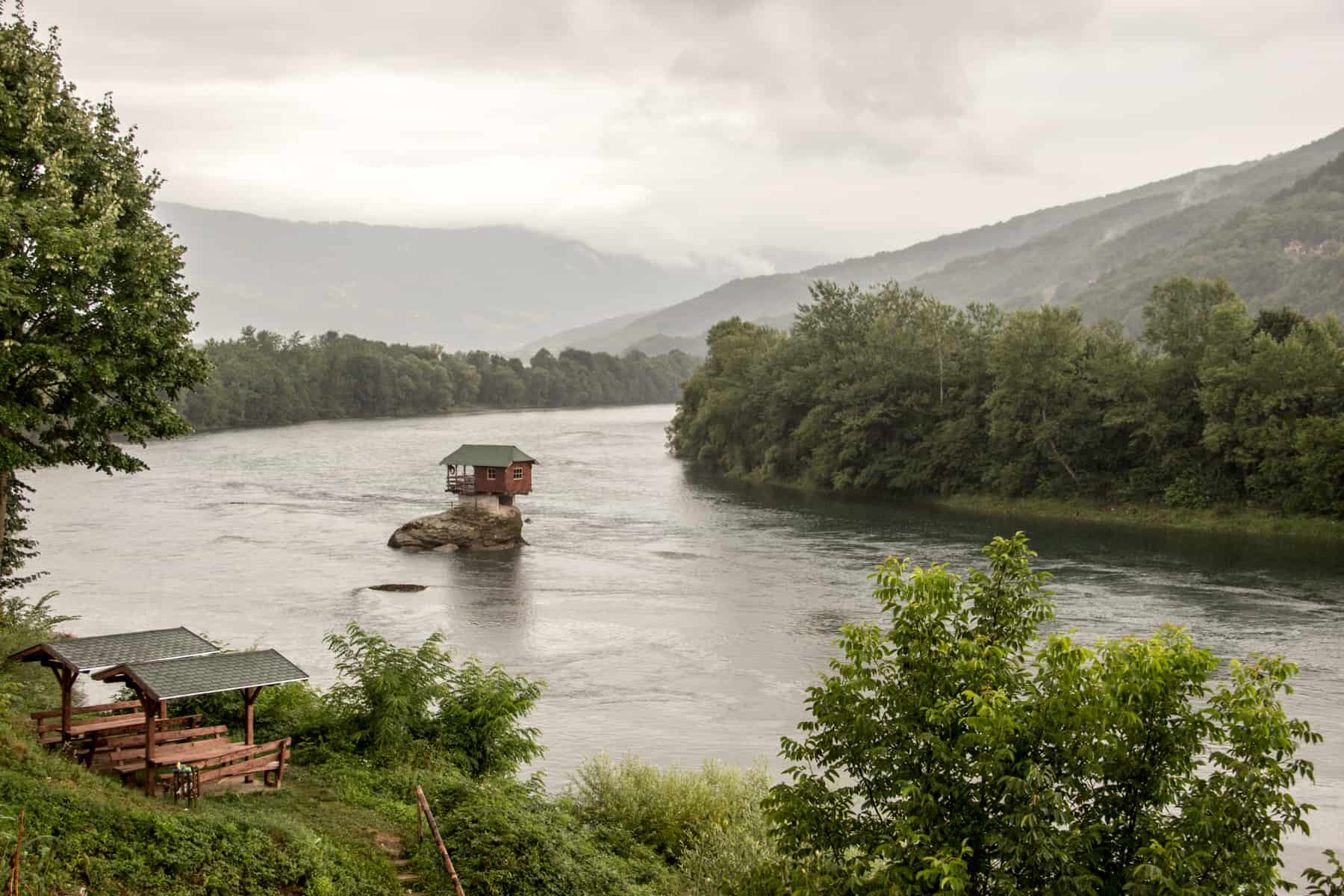
Understand the Complex History of Serbia
Why travel to serbia , getting to serbia, getting around serbia, not staying in official accommodation you need to register, best time to visit serbia, is serbia safe for tourists and visitors, belgrade – the reviving capital, novi sad – the capital of culture, valjevo and nature preserve, bajina bašta and tara national park, kadinjača memorial complex, ride the sargan eight railway to mokra gora, visit zlatibor and serbia’s mountainous region, uvac gorge and nature reserve, see žiča monastery – the history of serbian kings, novi pazar – see the religious diversity of serbia, visit topola – serbia’s wine region, guča – trumpet festival centre, what is serbian food like, can i enter kosovo from serbia, travelling to serbia with new eyes, serbia travel guide – what to know before you go.
Once a Kingdom on par with Rome and Constantinople, then occupied as part of the Ottoman Empire, it later co-founded Yugoslavia with other South Slavic peoples following World War I. Yet, the Yugoslav Wars in the 1990s and the devastation that followed are what many remember most of the region.
It’s no secret that during the early 1990’s – that saw the individual wars of independence and nationalism take place – Serbia exercised more power in the political decision making, thus becoming more heavily involved in the devastating Yugoslav Wars. It is something many could discuss and argue about for hours and which still is contentious today. Kosovo, a disputed territory of Serbia, still has yet to be formally recognised in Europe as an independent state.
That should be of no reflection on the Serbia of today, of the Serbian people rebuilding their country and mending the cracks, just like their neighbours. Many potential visitors can’t disconnect from the fact that the conflict only ended in 1999 (with a peace agreement in Kumanovo, Macedonia). Yet, it should be noted that also equals many years passed.
To see it differently. Under the glare of former headlines, Serbia is shouting about its stunningly beautiful country flanked by mountainous plains mixed with historically preserved towns and cities.
None of these things disappeared during the war. They were shrouded, ready to be unveiled when the time came for a new beginning – in a Serbia that, even if somewhat still politically fragmented, is both safe and open for exploration.
As an area of the continent now thriving and paving a solid path for tourism, more and more people are travelling here to understand it better and soon find there’s more to it than its troubled past.
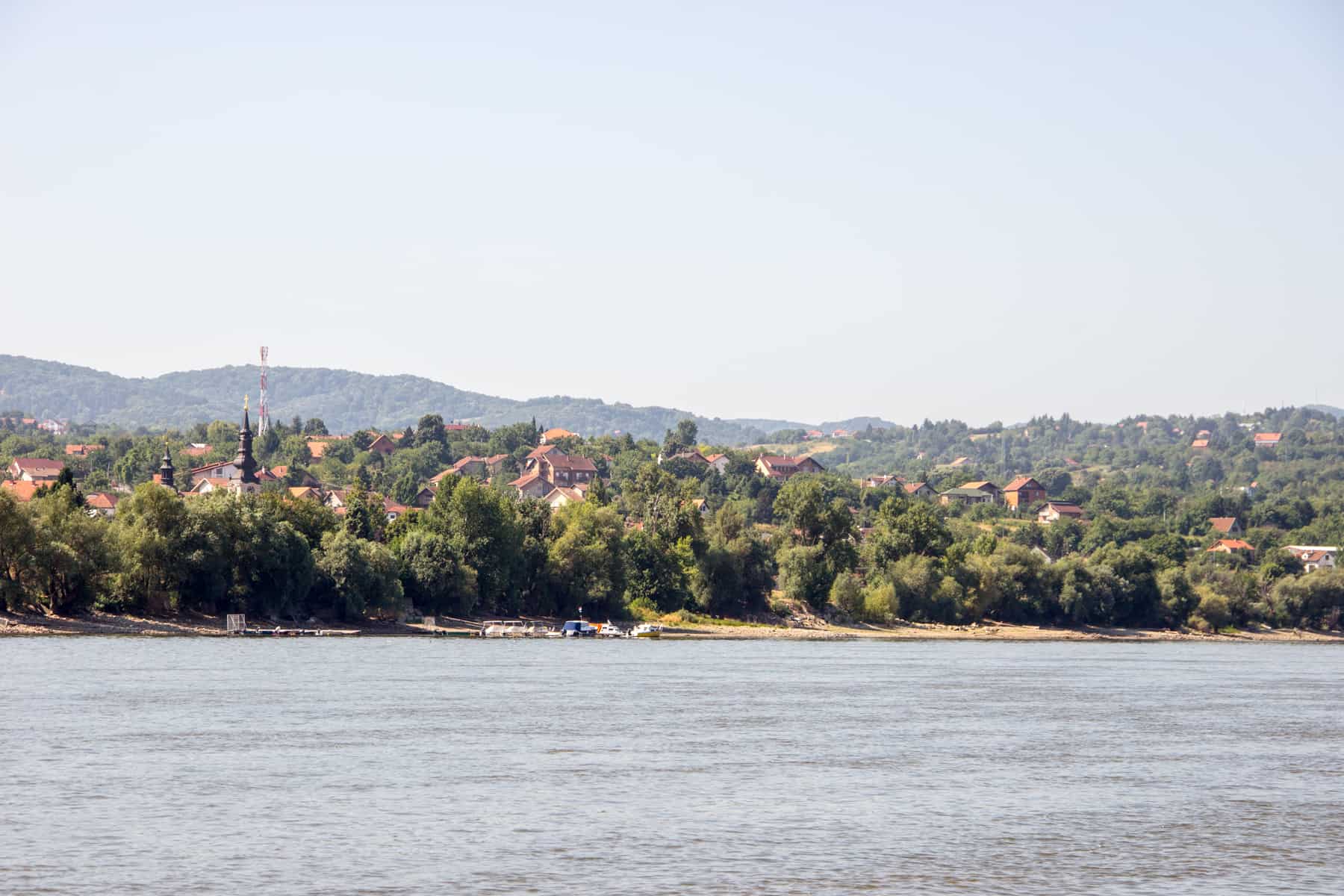
In Serbia: historically preserved urban hubs flanked by hills and low mountains.
Air Serbia has direct flights connecting a host of European, US and UK cities to Serbia’s capital, Belgrade. The main airport in Serbia is Belgrade Nikola Tesla Airport (BEG).
From the airport, you can take a 30-minute minibus A1 to Slavija Square (around 2 Euro) or bus 72 to Zeleni Venac Square (less than 1 Euro). A Taxi takes half the time but is more expensive, and will cost approximately 15 Euro. Make sure to use the official ‘Taxi Info’ service counters and get a paper receipt to give to the driver.
It is easy to move around Serbia from Belgrade city and map out a round trip that brings you back to the capital.
Long-distance buses and trains connect Belgrade to mainland European capitals, including Budapest, Vienna, Sofia, Bar, and Zagreb.
Visa for Serbia
Serbia is not yet a part of the EU, but there’s visa-free entry for visits of up to 90 days to the Republic of Serbia for those residing in or holding passports or valid visas from countries of the Schengen area and EU member states. Along with a host of other countries, Canada and the US can also enter Serbia without a visa.
You can check here if you need a visa for Serbia , based on what passport you hold.
Since car hire is easy to arrange from the airport and within Belgrade, and with highways connecting neighbouring countries, many travel around Serbia by car.
However, for those who don’t drive, there are excellent public transport options.
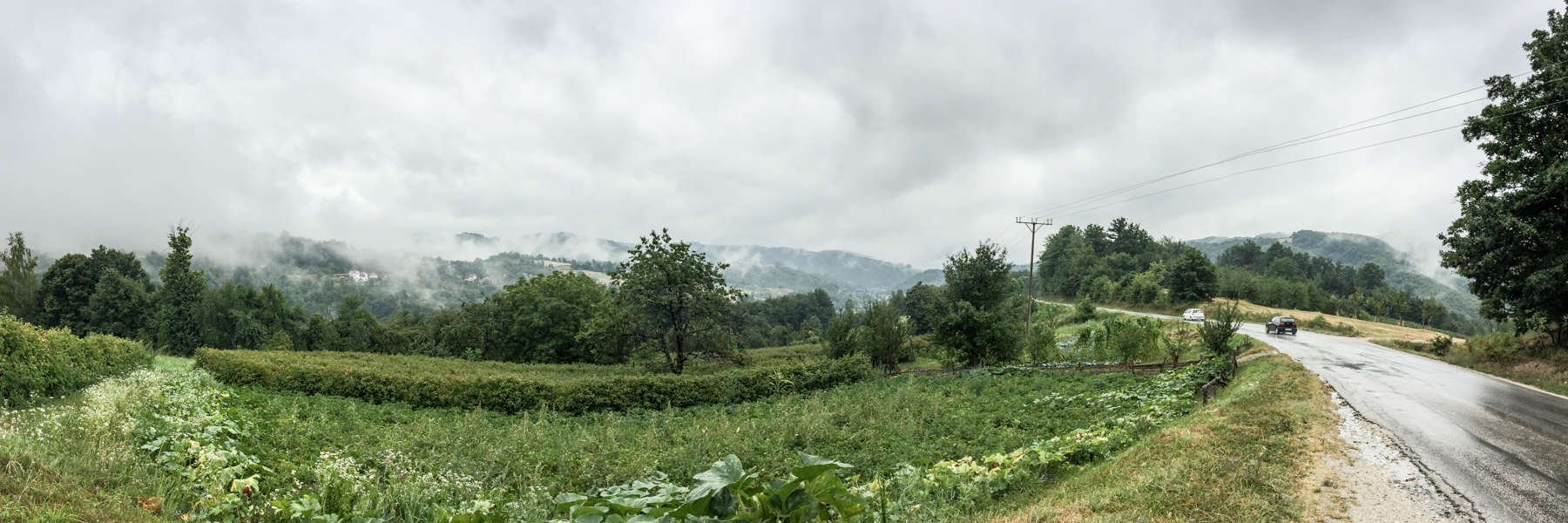
Serbia transport and road infrastructure.
Serbia by bus
There are various local bus companies that service connections between the cities, smaller towns, and nature areas. Lasta Beograd and Stup Vršac are two prominent bus companies in Serbia that get you to popular destinations and lesser-known sights and places of interest.
Belgrade is your base for Serbia travel and the well-established starting point for spending days and weeks travelling across a country with good transport and tourism infrastructure. Serbia is no post-conflict wild west, although you will find yourself getting lost within its untouched and little-known nature-filled hinterlands.
For example:
- Belgrade to Novi Sad by bus takes around 1 hour and 30 minutes and costs 5 Euro / 588 Serbian Dinar. >> Buy tickets.
- Novi Sad to Subotica (in the north) takes 1 hour 50 minutes and costs 7 Euro / 824 Serbian Dinar. >> Buy tickets .
- Belgrade to Nis (in the south) takes 3 hours and costs 11 Euro / 1294 Serbian Dinar. >> Buy tickets.
Give yourself a least an hour before departure to arrive and purchase tickets at Belgrade’s bus station in Savski Venac – it’s a large area with two terminals, and you’ll need some time to navigate and find your bus.
Serbia by Train
The train lines are more limited but connect Belgrade to Novi Sad and Subotica and Belgrade to Nis. The service is much better utilised by those holding Eurail passes.
CarGo in Belgrade
Uber doesn’t operate in Belgrade, but CarGo is the leading car ride app in Serbia that serves the same purpose and works the same way.
Serbia Tours
There’s not much in the way of dedicated Serbia tours, should you wish you have as much organised for you as possible and a guarantee of traveller camaraderie. G Adventures offers an overland tour that passes through Serbia – including Novi Sad and Belgrade – before continuing to Bosnia and Herzegovina and Croatia.
This Western Serbia Tour is a day trip from Belgrade, travelling out to the countryside to see the House on the Drina River, ride the Sargan Eight train and the famous wooden village. Discover Eastern Serbia on a tour that includes the 15th-century Manasija Monastery, the 80-million-year-old Resava cave, and the Gornjak Monastery that’s known for having Serbia’s oldest Serbian fresco paintings.
Things can be a little tricky if you’re staying with a local friend or an Airbnb. According to the Serbian tourism website , foreigner registration and who takes responsibility is broken down as follows.
“Serbian organisations and individuals providing accommodation to foreigners against payment, as well as locals hosting visiting foreigners, must register the foreigner’s stay with the local police station within 24 hours of the commencement of the accommodation arrangement, or of the foreign visitor’s arrival.
A foreigner not using official accommodation nor staying with a private individual must register his or her stay and change of address with the local police station within 24 hours of arriving at the place of residency or of the change of address. A place of residency is where a foreigner intends to stay for more than 24 hours.”
The shoulder seasons of March to May and September to October are the best time to visit Serbia. This time of the year sees more comfortable temperatures outside of the hot summer months of June to August – optimal when covering a lot of ground.
That’s not to say summer in Serbia should be avoided. In Serbia’s many gorges or higher elevations in the Carpathian and Balkan Mountains ranges, good time spent on or along the Danube River is a way of life to escape the urban heat. The famed EXIT music festival is also in July.
Serbia is considered a safe country to travel to and requires general caution and instinct like any other destination. Belgrade, in particular, feels just as vibrant and built up as any European capital. I never felt on guard in Serbia, nor did I encounter any issues as a female traveller. Mostly we were welcomed by locals, eager to show you the other side of their country.
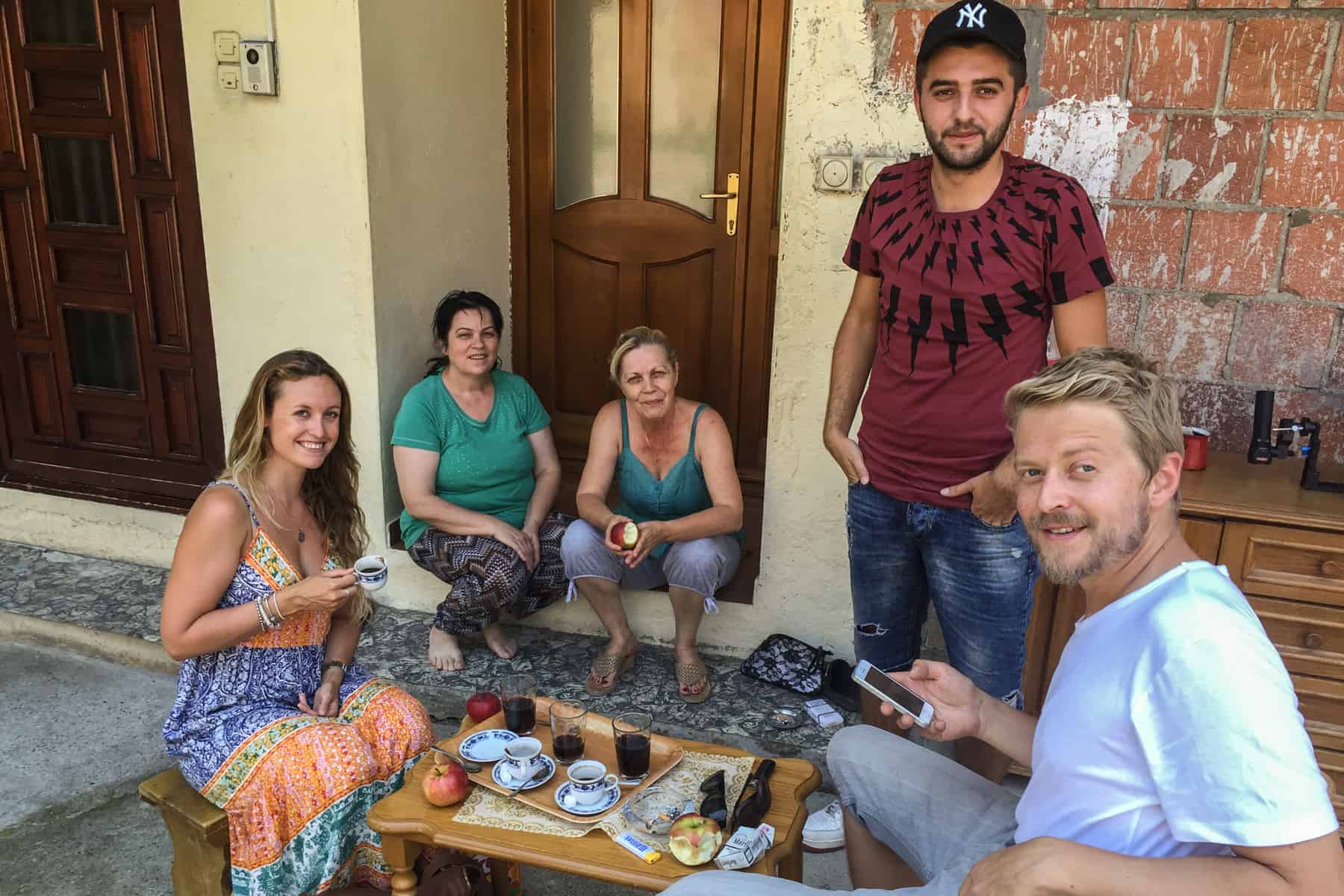
The warm welcome from locals in Serbia.
The only area where an opportunist took his chances (pretending to be a police officer) was Novi Pazar – a lesser-known town and not used to tourists. While unnerving for myself and my male friend who was with me, we caught on to the fact that other people at the coffee shop were a part of the act and insisted he come to the hotel with us if he wished to see our ID. He soon backed down.
The only part of Serbia associated with a higher level of caution is the towns and broader area on the border to Kosovo, where political tension is still present.
Best Places to Visit in Serbia – Where to Go
The Republic of Serbia is a large, landlocked landmass in the central Balkans, and choosing where to go can be hard to narrow down. Need some help? Below are some of my highlights and the best things to see in Serbia. Click the Google map for a better understanding of distance and get planning.
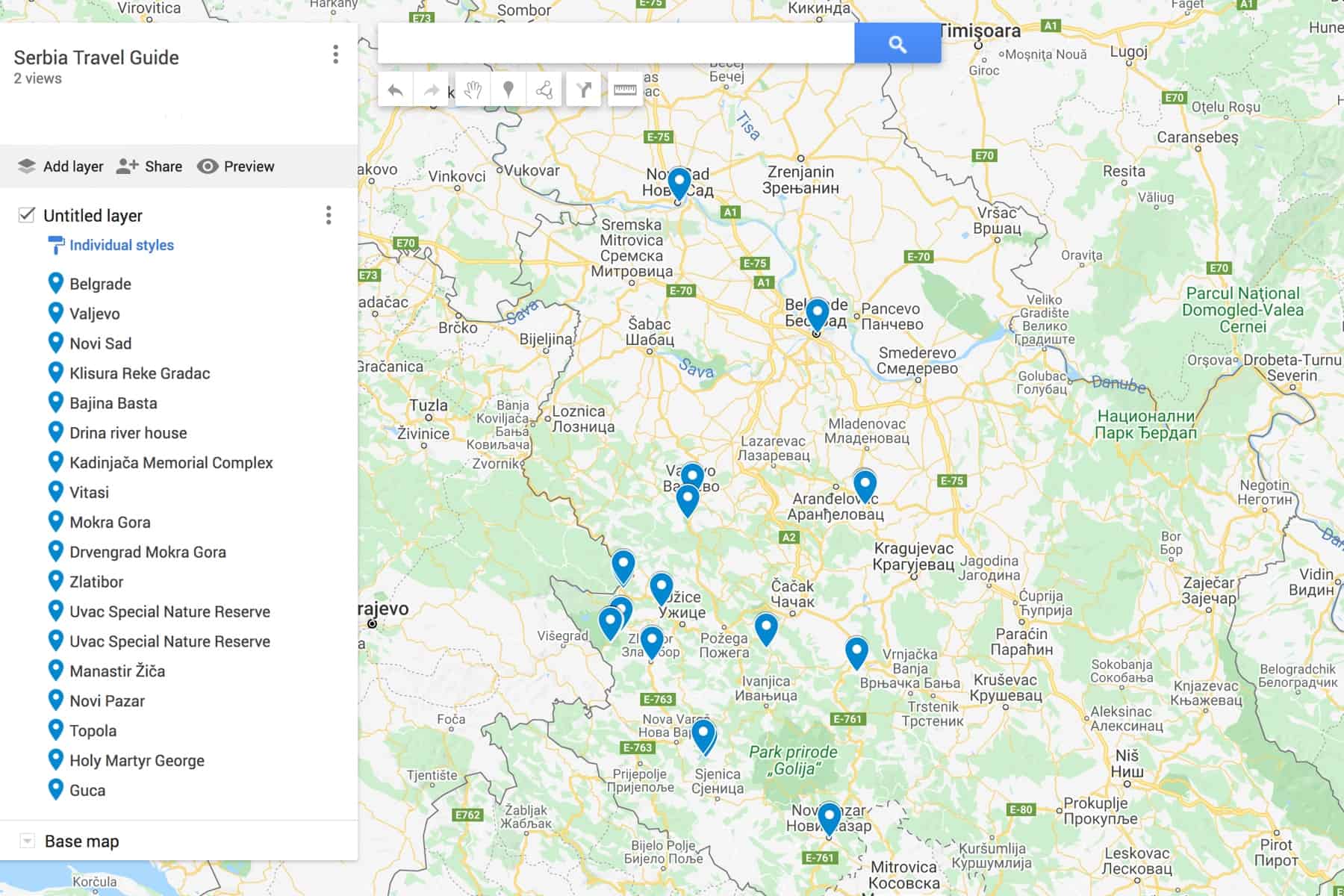
Like most visitors to Serbia, Belgrade was my first stop. My tip is to give yourself as much time here as possible – at least four days ideally. Not knowing what to expect outside the fortress and historical monuments, I was thrown headfirst into a cosmopolitan city of artistic revival that hummed amongst pastel coloured classicism. It was everything I was hoping it would still be as a focal Balkan capital. Belgrade is still tinged with structural damage and underlying economic issues, but it is the new Serbia’s vibrant, tenacious, and determined heart.
READ MORE: Travel to Belgrade – The Defiant Heart of a New Serbia
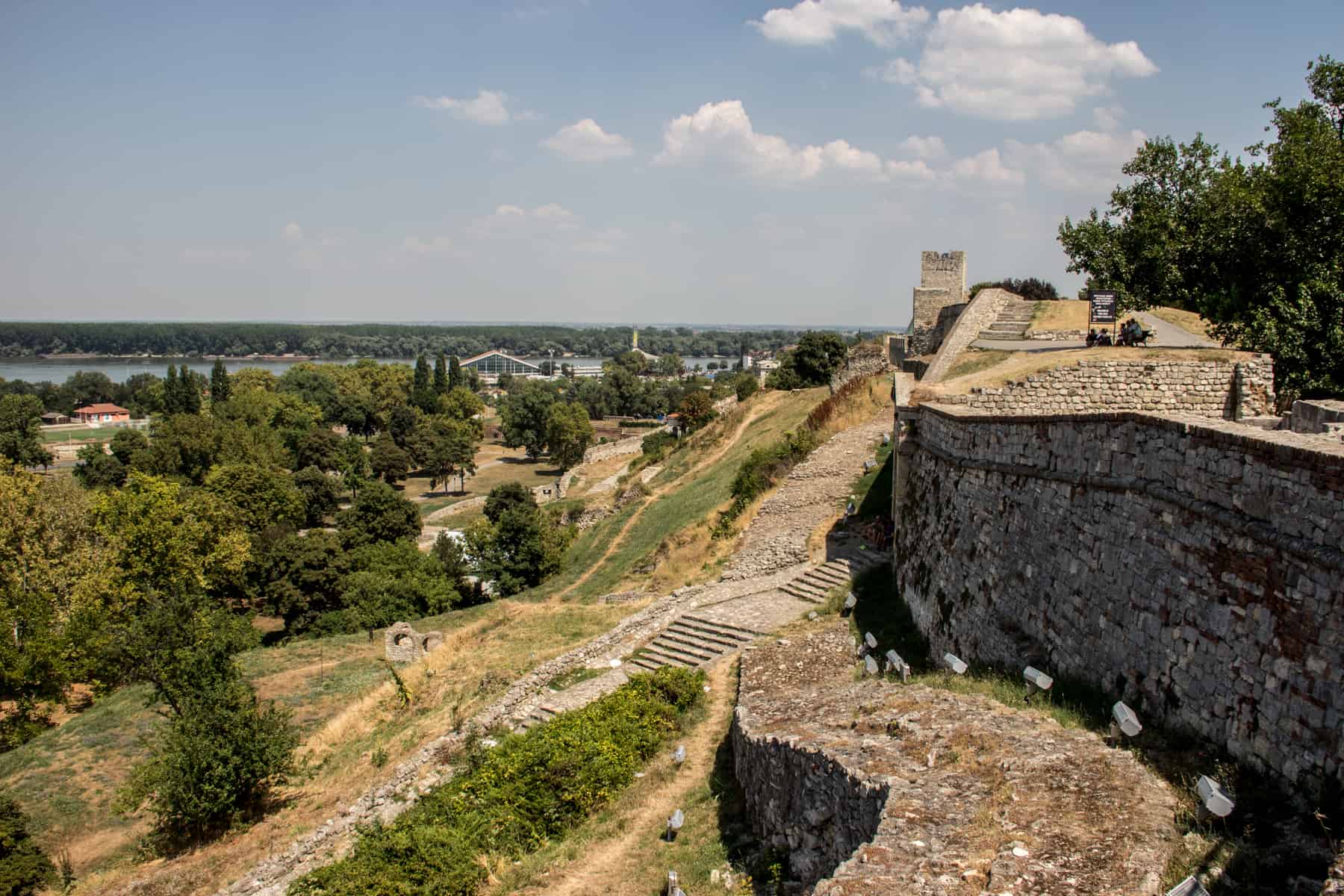
Climb Belgrade Fortress for history and city views.
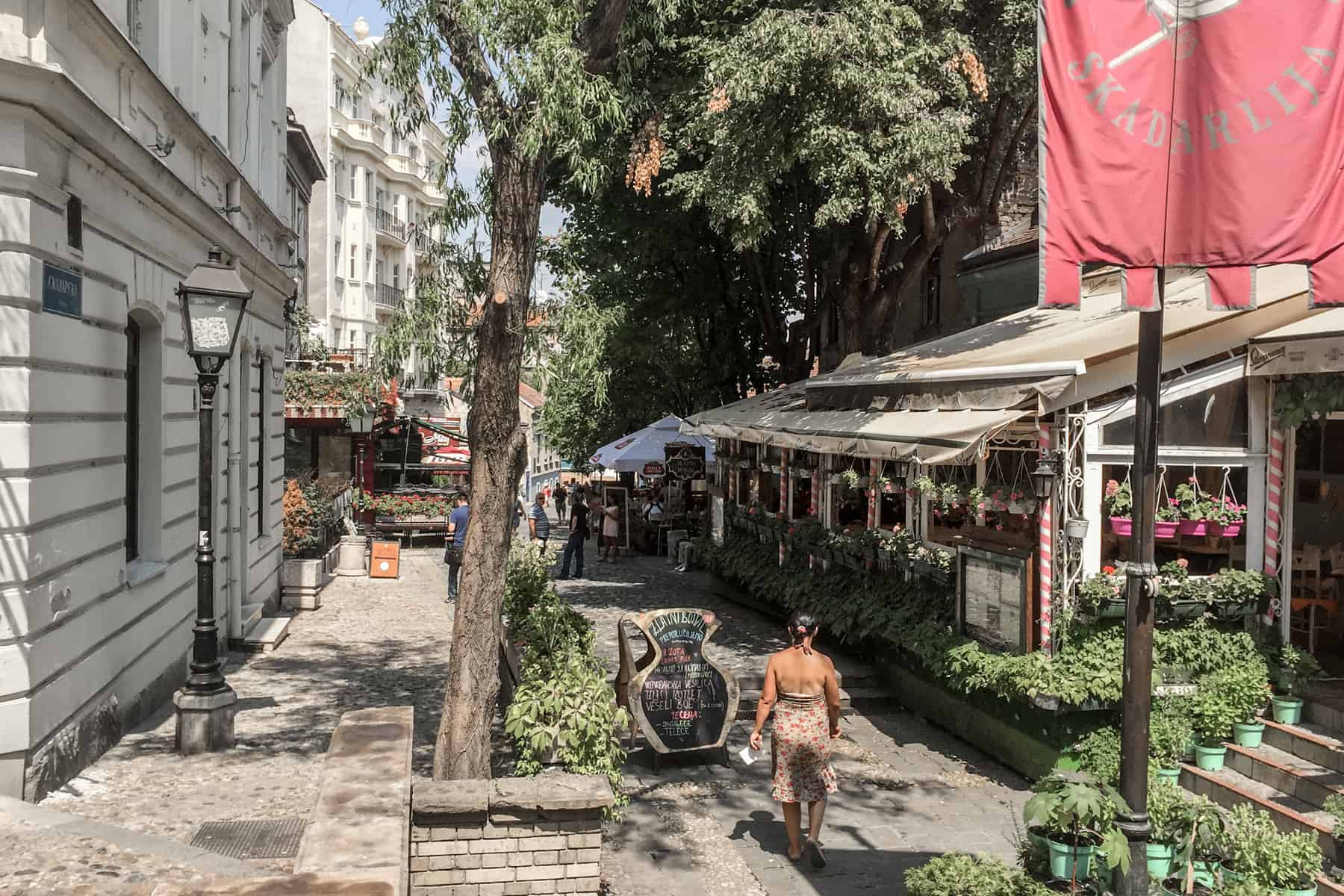
Strolls in old Belgrade.
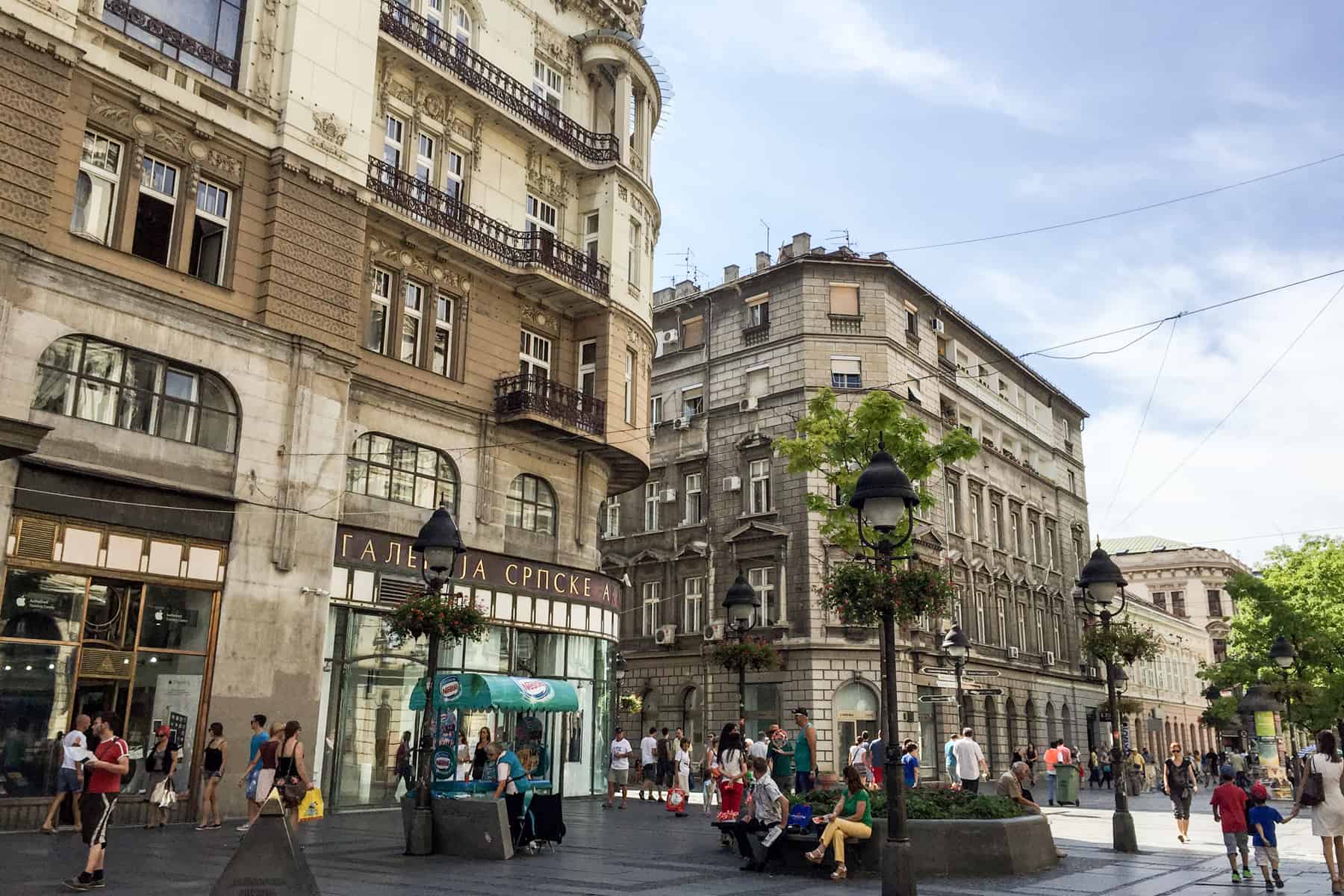
Classical architecture in Belgrade city centre.
Novi Sad’s preserved cultural heritage makes it a city showpiece like Belgrade, nominated as the European Capital of Culture 2021.
The elegantly detailed city centre, marked by the “Square of Freedom”, sits the City Hall, Catholic Cathedral of Mary’s Name, and the monument of Svetozar Miletic is a stroll for the senses. Houses and palaces in candy colours, side streets full of museums and art galleries, small passages (like Zmaj Jovina and Dunavska) invite you to explore before you land in the pumping café and bar-lined Laza Telečki street – the sundown meeting place.
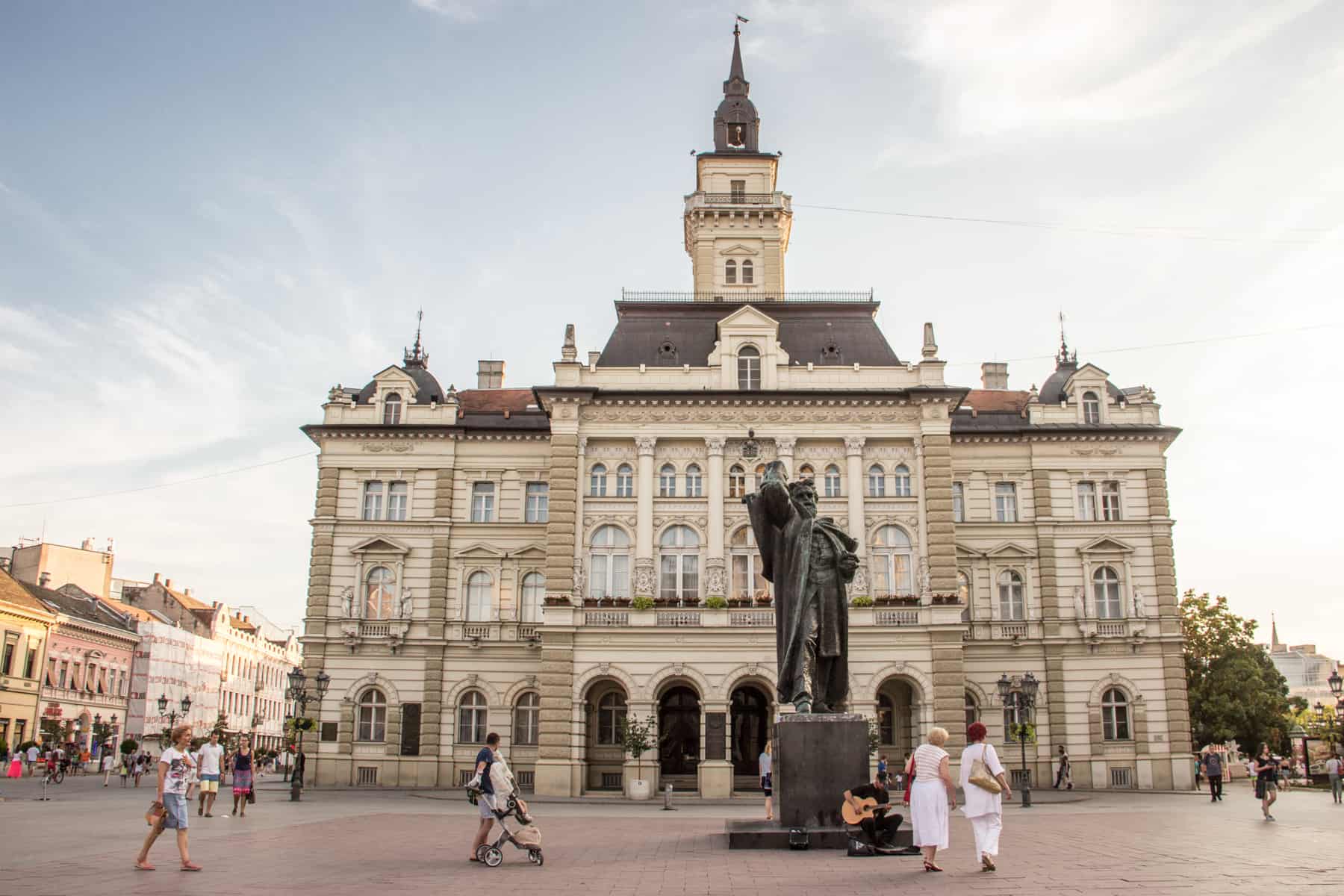
Svetozar Miletic Monument in Novi Sad’s Freedom Square.
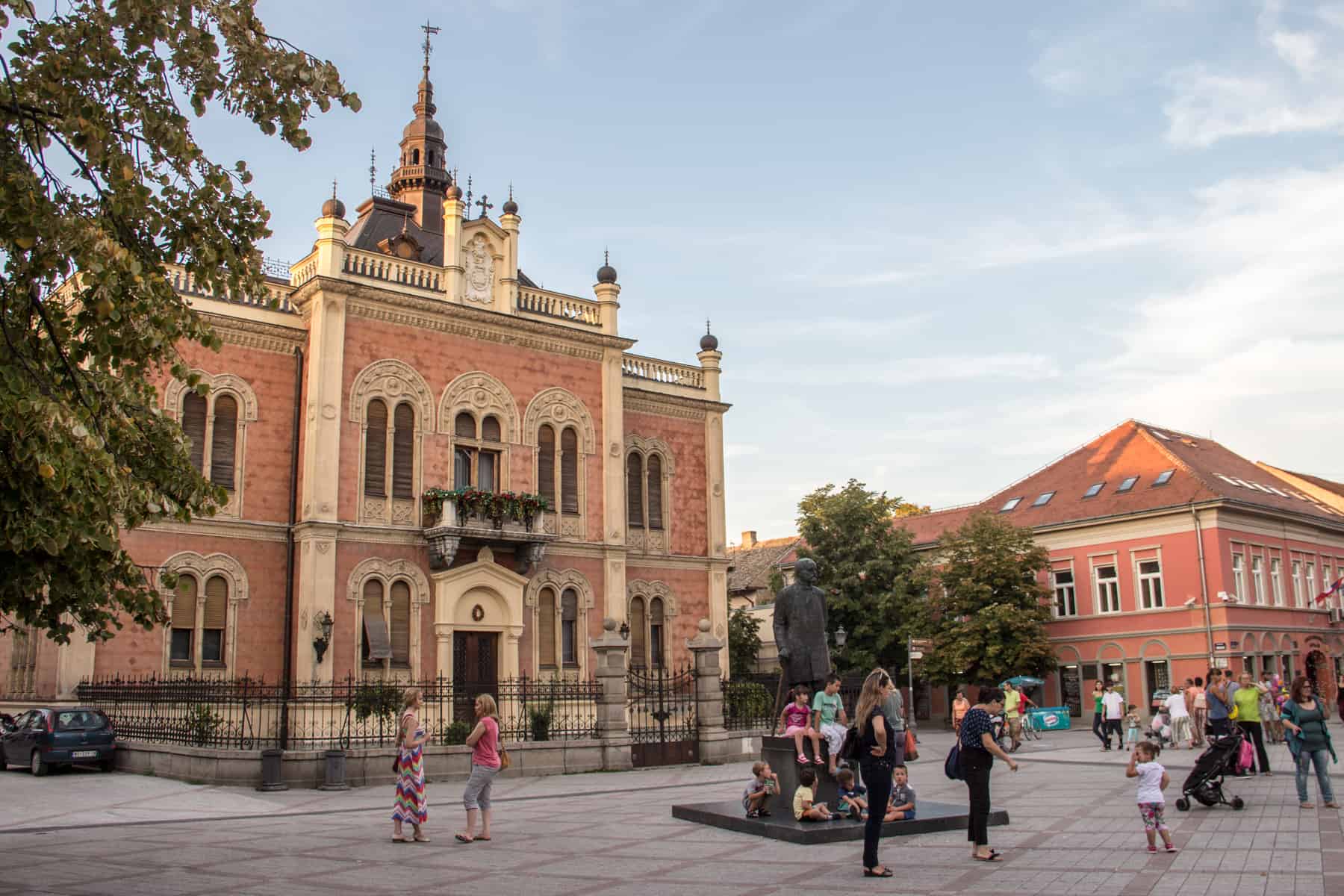
The stunning Orthodox Bishops Palace in Novi Sad Serbia.
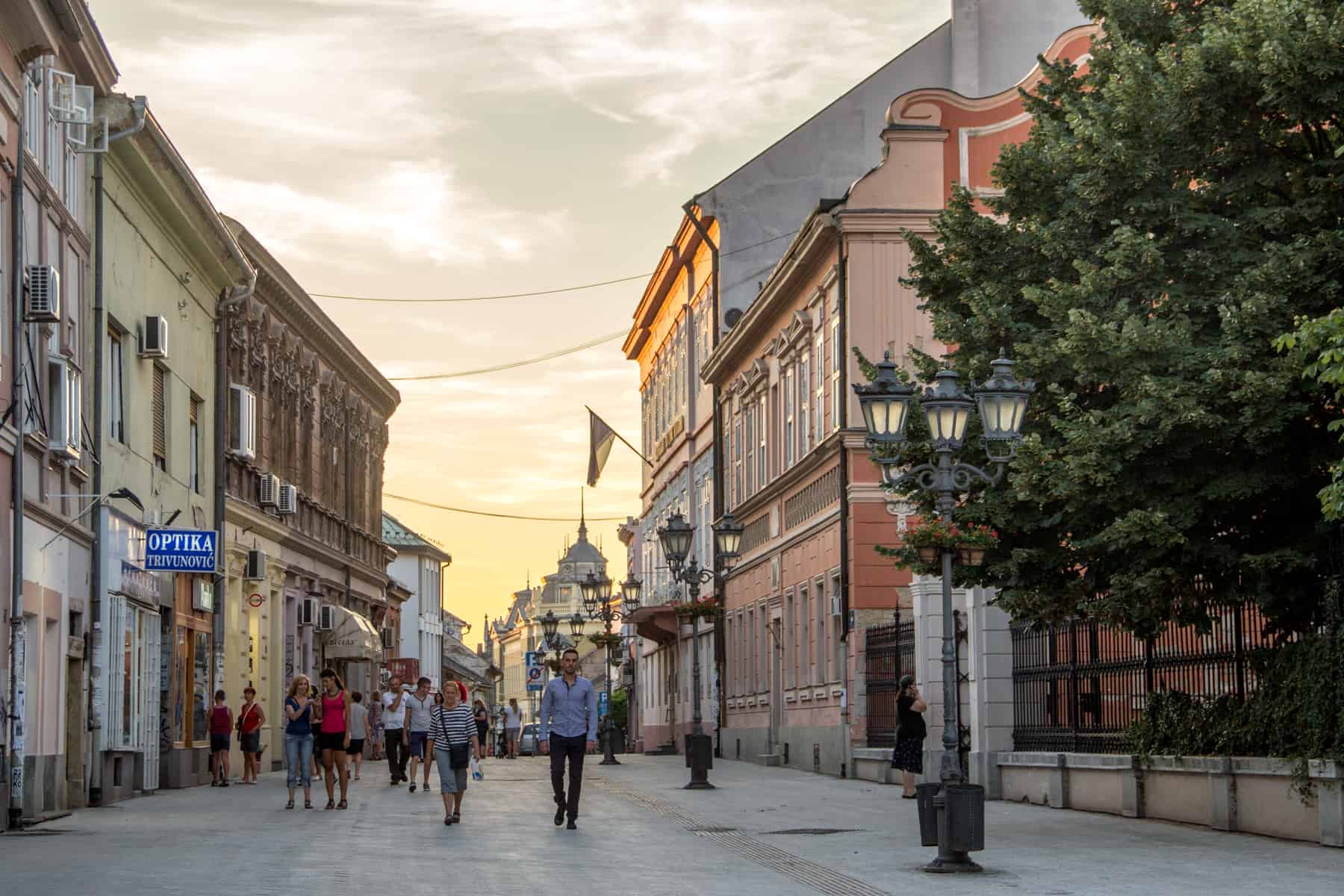
Sundown in Novi Sad city centre.
A highlight is the 18th-century Petrovaradin Fortress, divided into Upper and Lower towns. Climb up through the arched gateway passages to the symbolic clock tower with opposite time hands (large shows hours and small shows minutes). From here, you can look out over the Danube and get a bird’s-eye view of the grid streets of the Lower Fortress town, whose crumbling Baroque architecture retains stories of old in their fading facades.
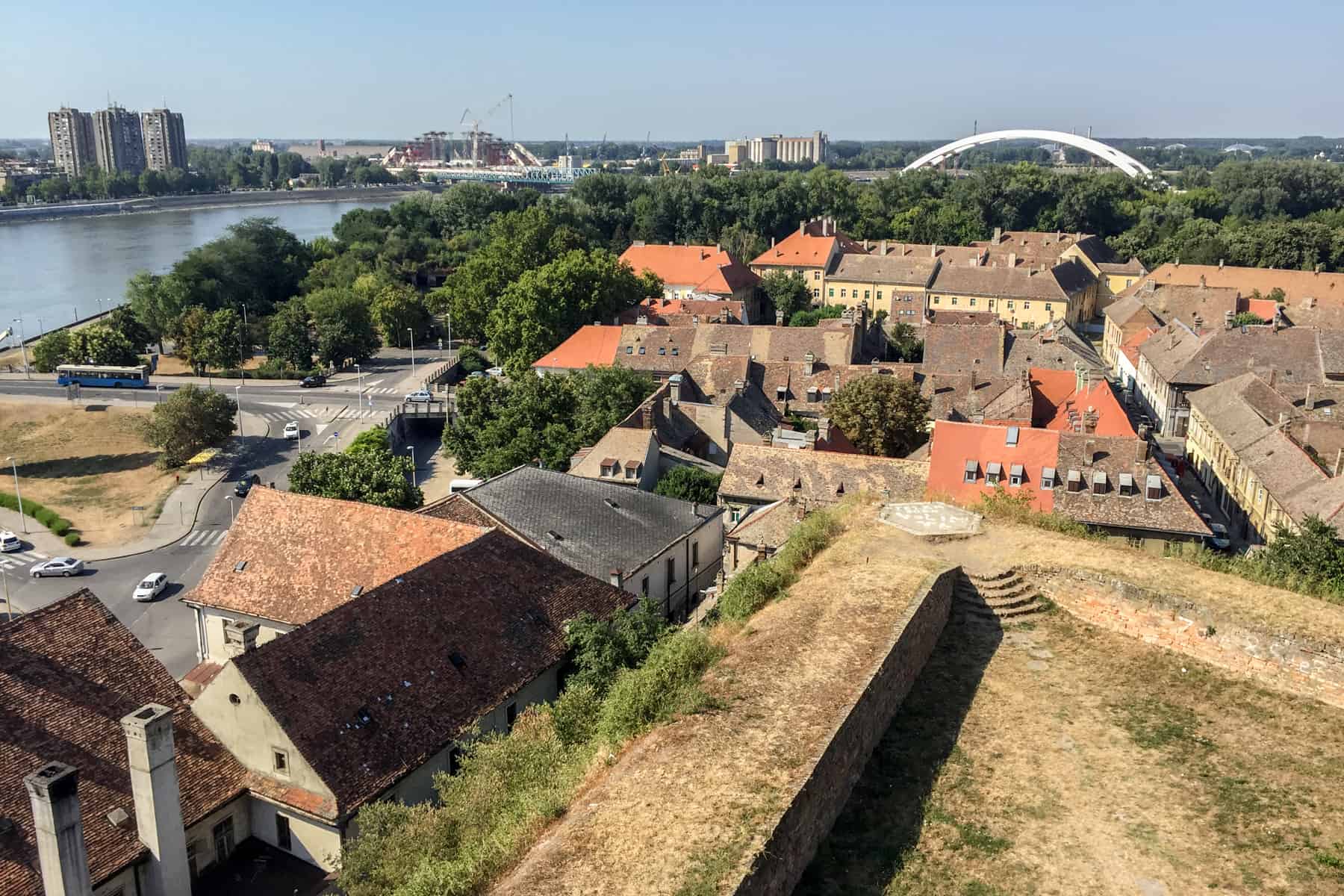
Clamber the Petrovaradin Fortress for city views across the river.
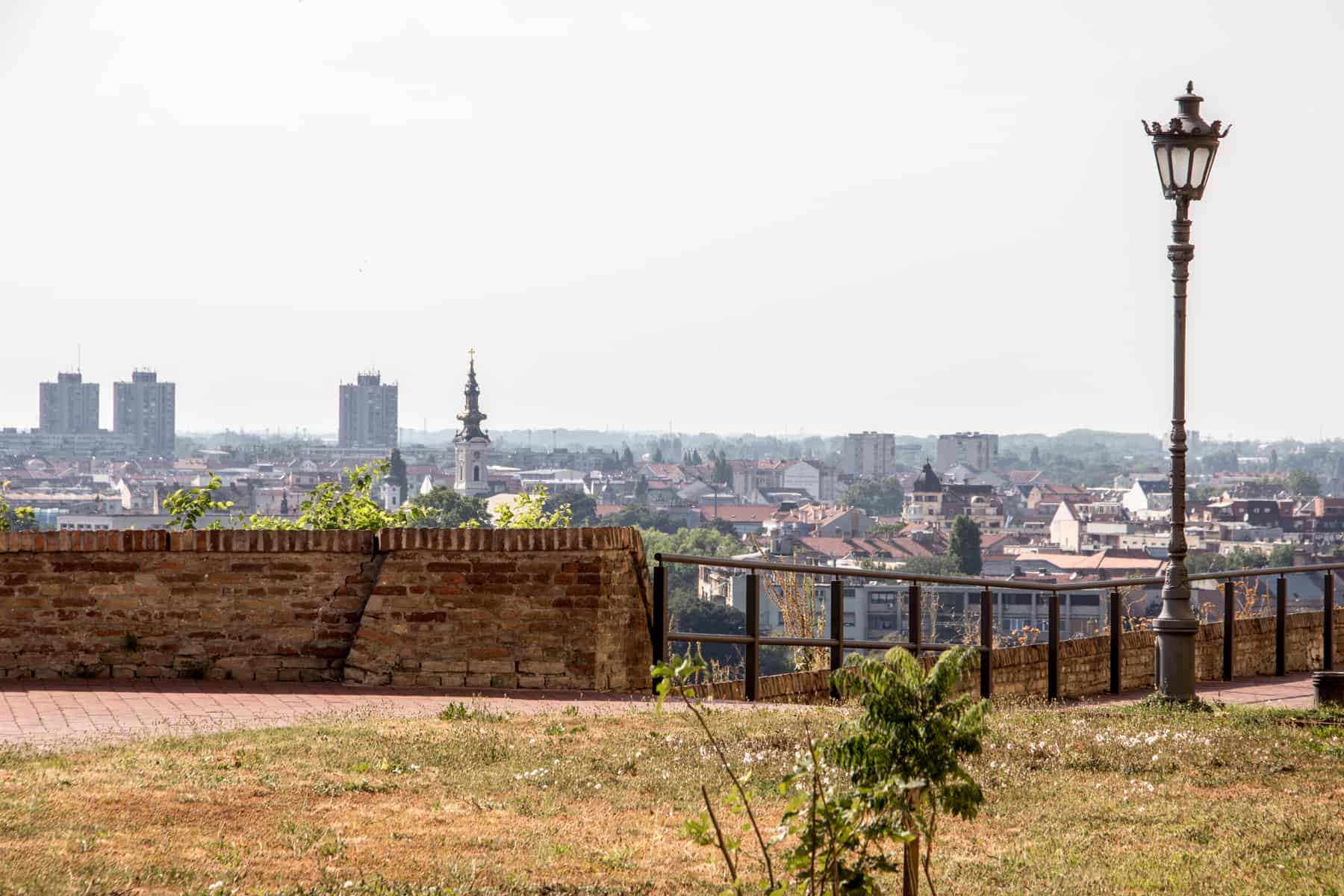
Picturesque Novi Sad.
Enjoying the great outdoors of Serbia should be factored into your visit in a country that is 75% mountainous and thus scattered with rolling green, protected nature parks, canyons, rivers and lakes. But where do you start?
READ MORE: Nature Attractions in Serbia – Pristine Land You Never Knew Existed.
I got off-track and wild in Valjevo – a city that is 90 minutes southwest of Belgrade. But the town wasn’t the main reason for visiting – the adjacent spindle of a nature reserve connected to it was. We trekked through the 50km long Gradac River Gorge (Klisura Reke Gradac) that runs through the steep slopes and high rock formations of the Canyon.
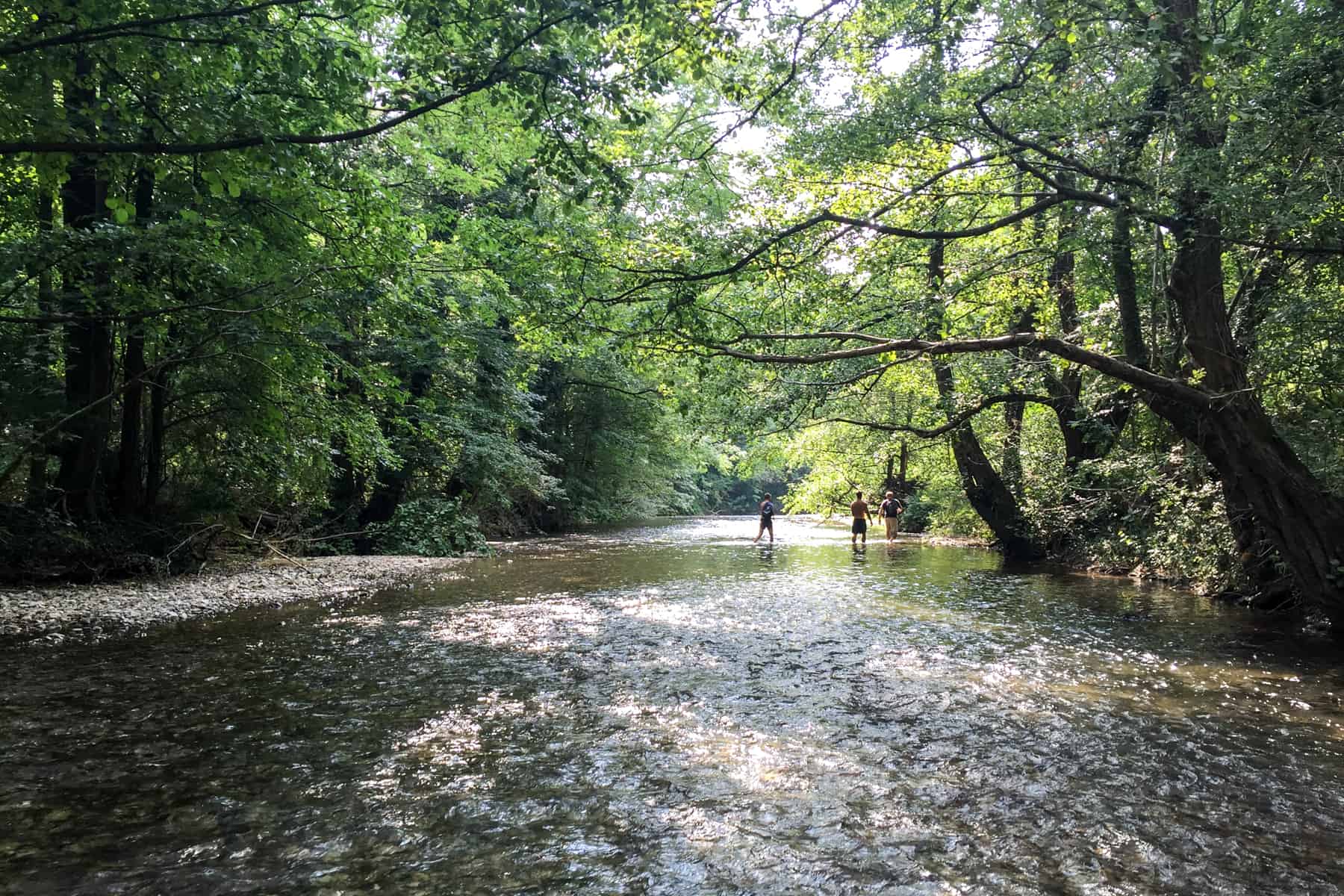
Trekking through the Gradac River Gorge in western Serbia.
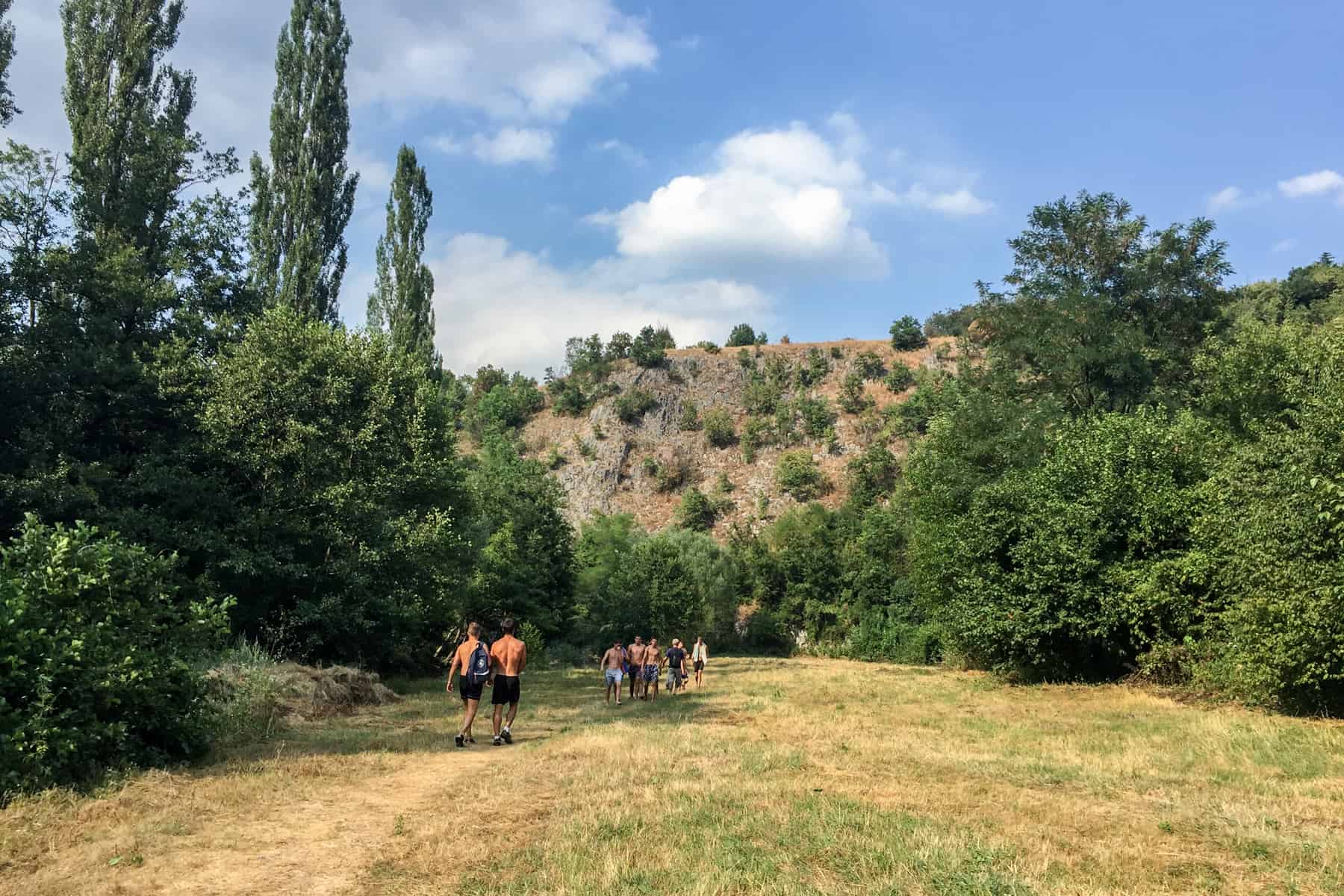
Canyon walls and walks.
Three hours south of Belgrade is Bajina Bašta – a village in south-western Serbia close to the border with Bosnia and Herzegovina. It’s also the perfect starting point to visit Tara National Park, where you can see the famous postcard-perfect scene House on the River Drina . Once a refuge for sailors and swimmers in an area of crashing waves, it’s become one of the main symbols of the area.

The House on the River Drina – one of Serbia’s most iconic places.
Kadinjača Memorial Complex is 90 minutes east of Tara National Park, on the highway that connects Bajina Bašta with Užice. It’s a striking memorial in honour of the Workers Battalion of Užice, who died here fighting against the Germans in November 1941 during the Battle of Kadinjača. It is both a burial ground and an exhibition space with the intent of piercing emotion. Huge, white stone sculptures sharply contrast with the low slope hills, and another stone stands isolated, depicting a large bullet hole.

The Kadinjača Memorial Complex is in honour of those who lost their lives during WWII.

The bullet hole sculpture at Kadinjača Memorial Complex in Serbia.
On the Southern fringes of Tara National Park, you can start an adventure that eliminates the need to take another bus. An alternative look at Serbia’s natural scenery includes riding the Sargan Eight narrow gorge railway further south to the Mokra Gora.
Mokra Gora is well known for Drvengrad – Serbia’s traditional wooden village and timber town elevated on a plateau between Tara National Park and the mountainous Zlatibor. Quaint and with bygone historical reference as a living village, Drvengrad was built as a film set for the Serbian drama Life is a Miracle by Emir Kusturica and was never deconstructed when the movie wrapped.
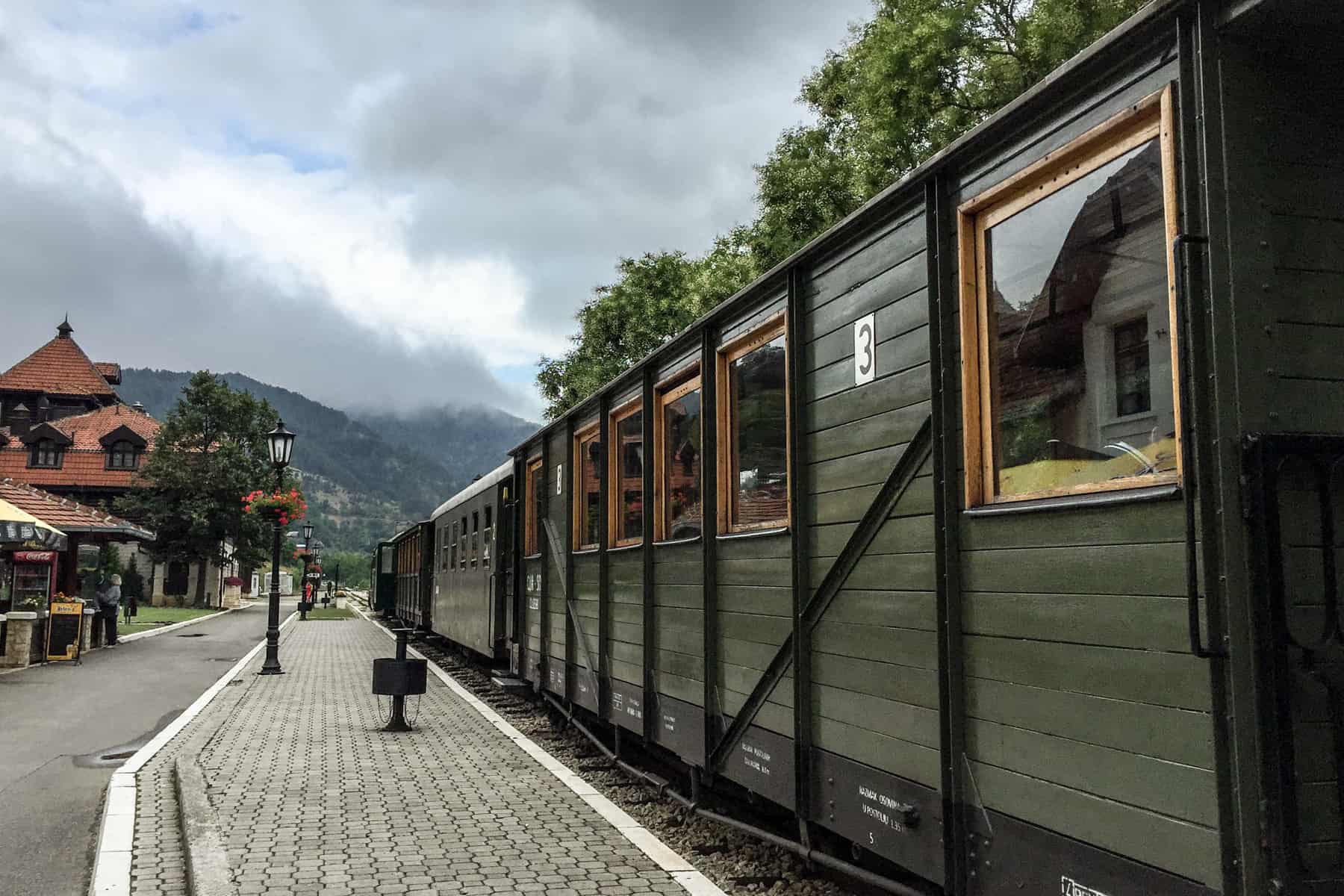
The timeworn splendor of riding the Sargan Eight narrow gorge railway.
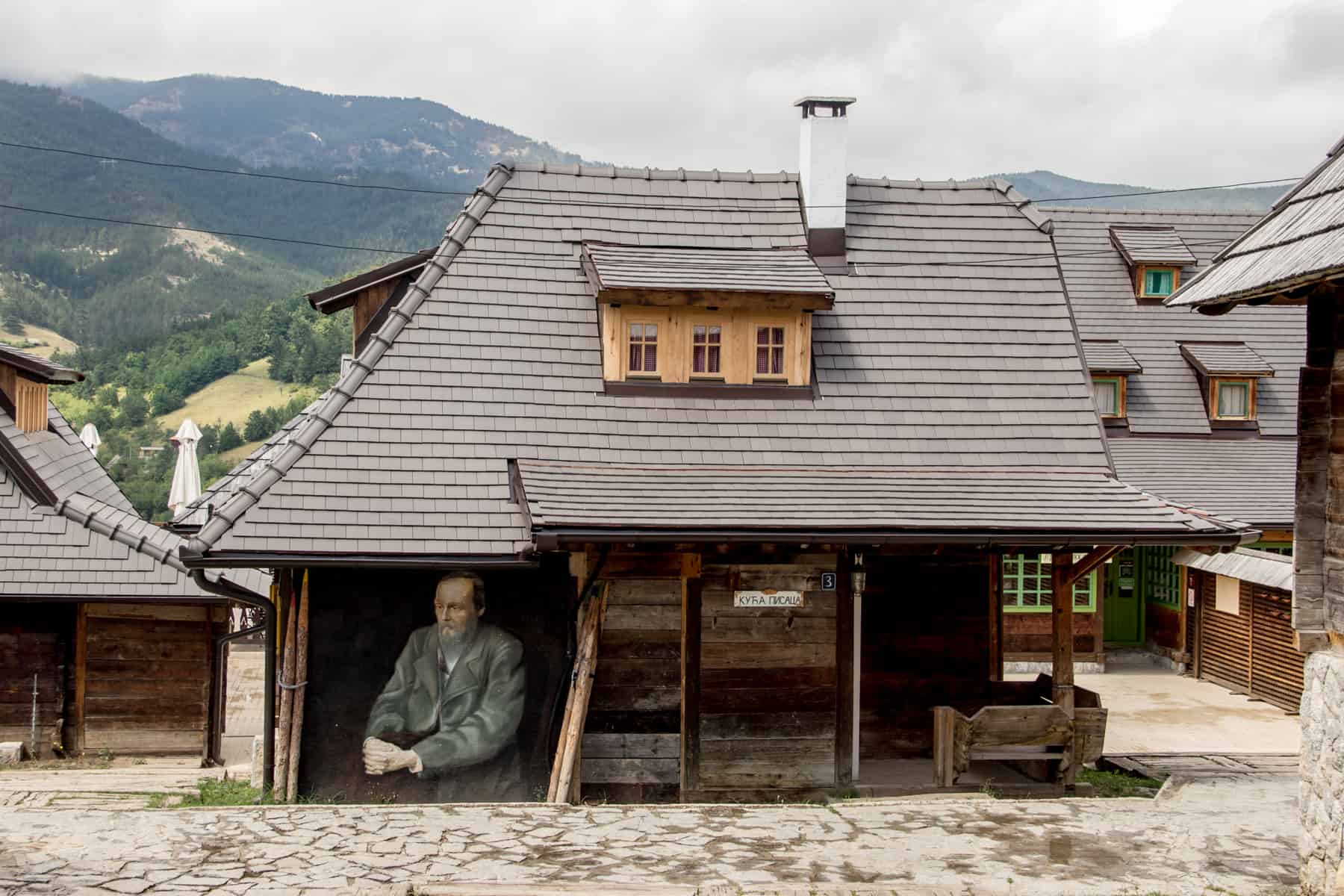
The film set props of Drvengrad – Serbia’s traditional wooden village.
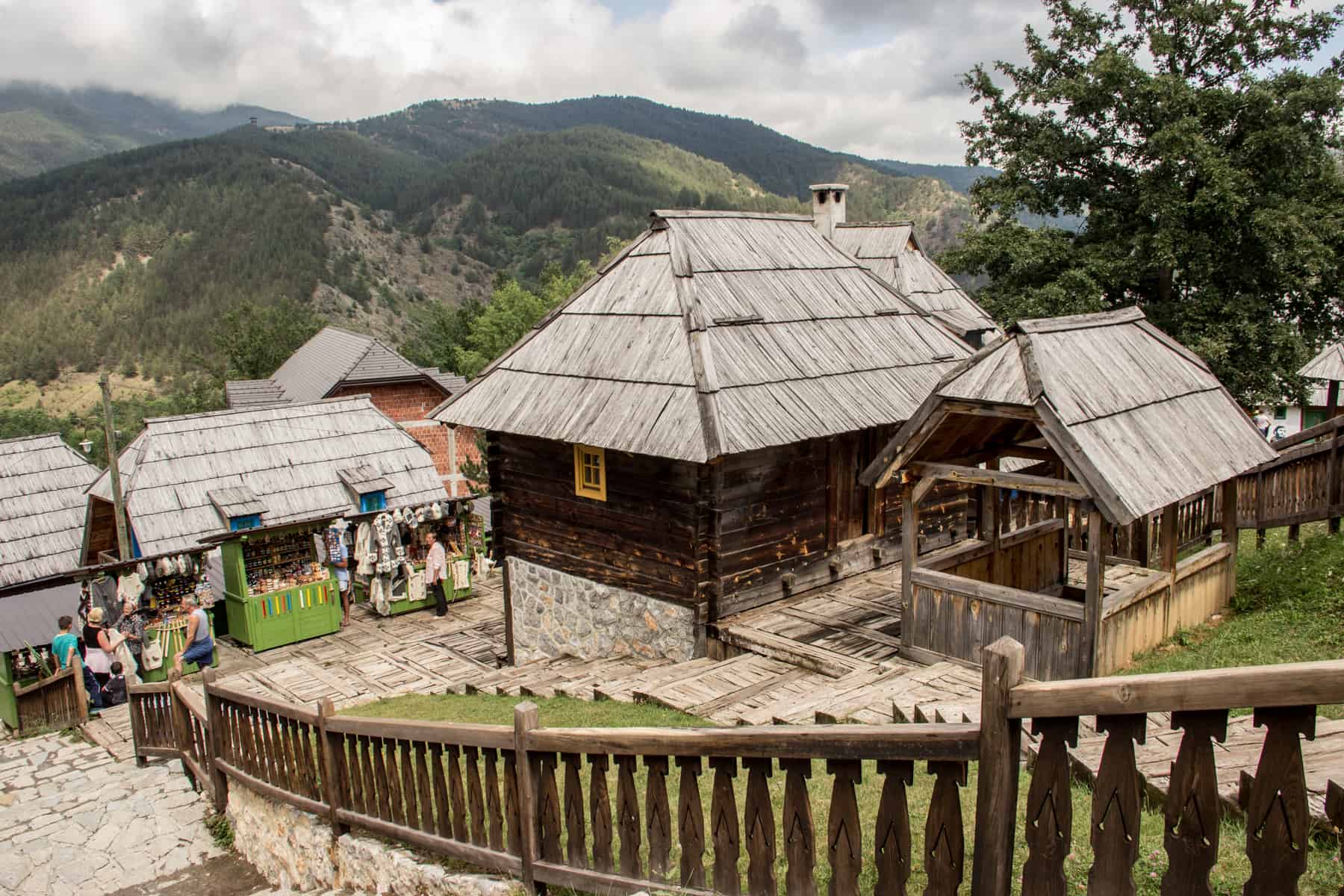
The remote timber town of Serbia.
Continue 30 minutes south from Mokra Gora and journey through the mountainous valleys and open-air spa region of Zlatibor, which is more than its ski resort reputation. In spring and summer, this area is a stunning circuit of hiking trails.
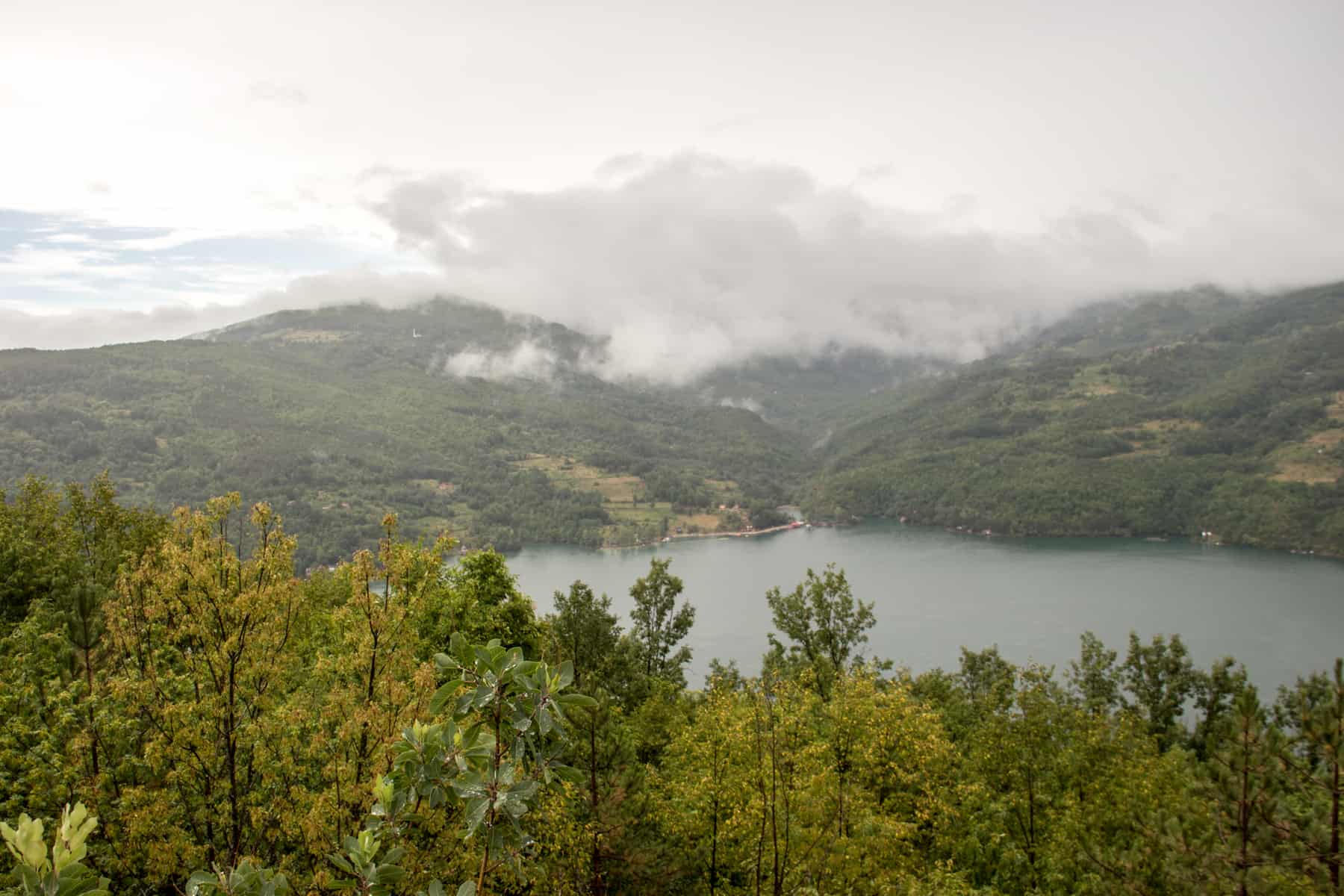
Views over Lake Ribnica in Zlatibor, Serbia.
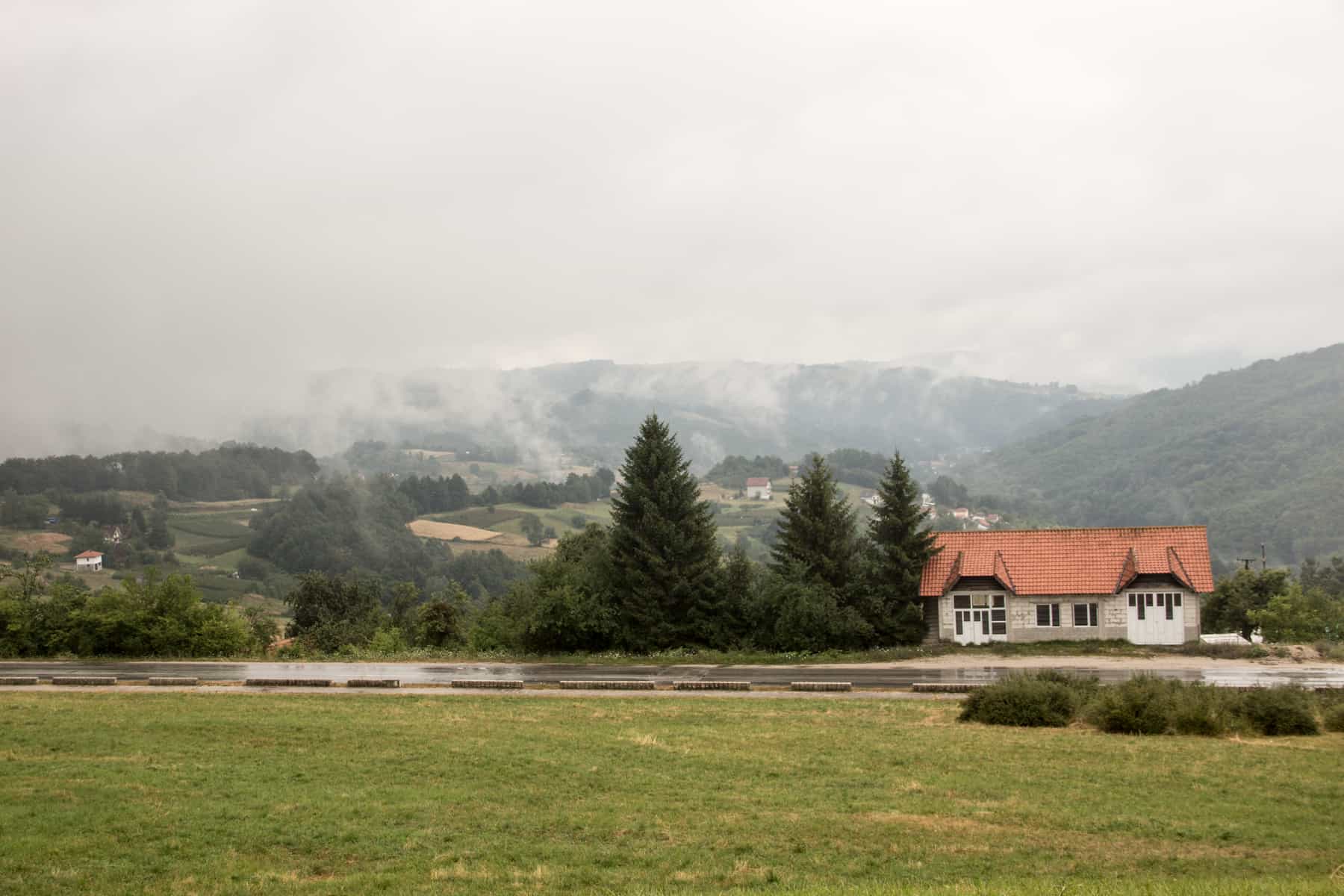
Escape to the Zlatibor region.
Continue further south from Zlatibor and visit the mountain park and biodiverse Uvac Special Nature Reserve. The highlight is winding through the magnificent bends of the Uvac Gorge on a slow motorboat.
If not on the path of a longer trip in Serbia, you can book an Uvac Nature Reserve tour from Belgrade, which includes a hike and a boat trip.
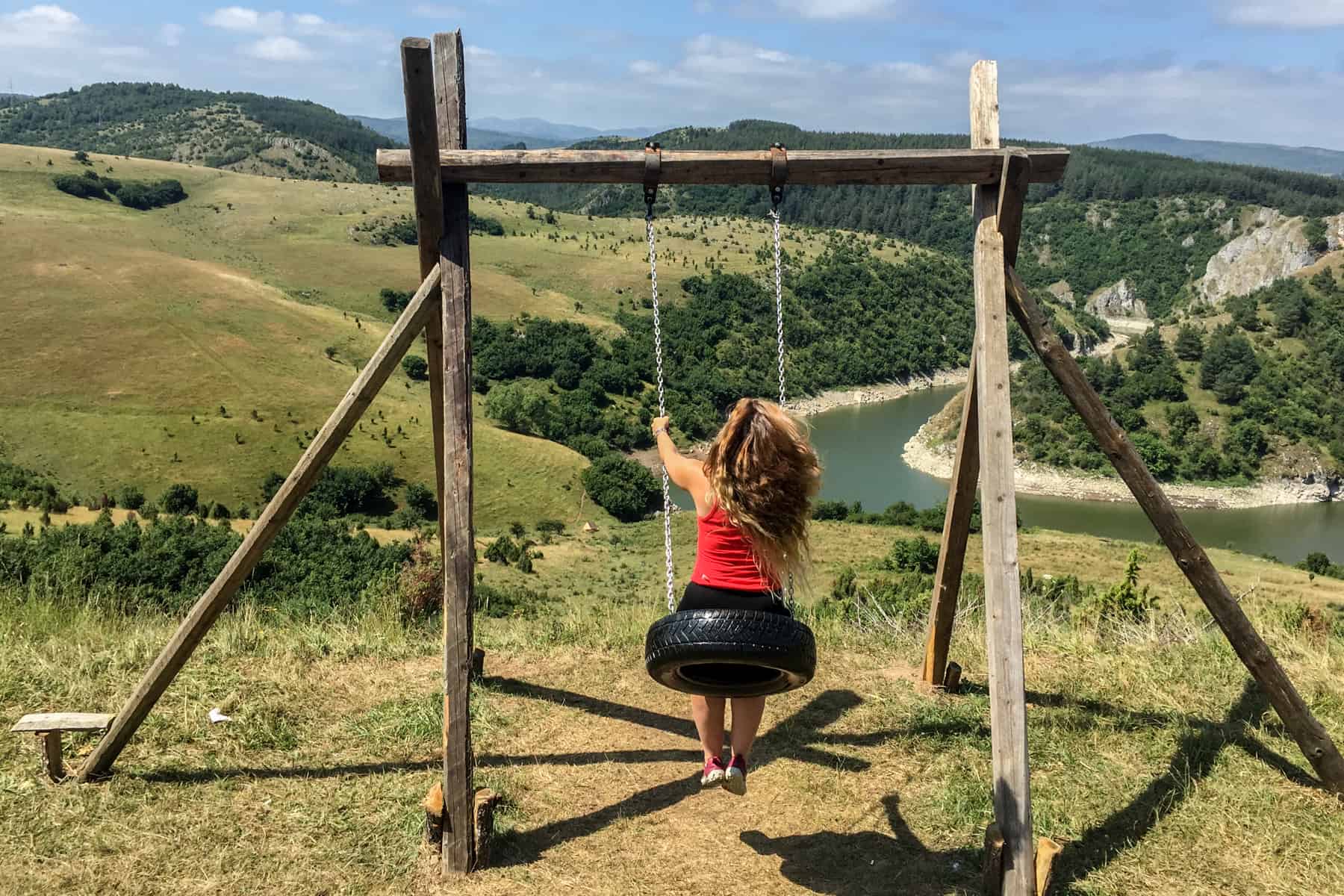
Swing with a view over the Uvac Gorge.
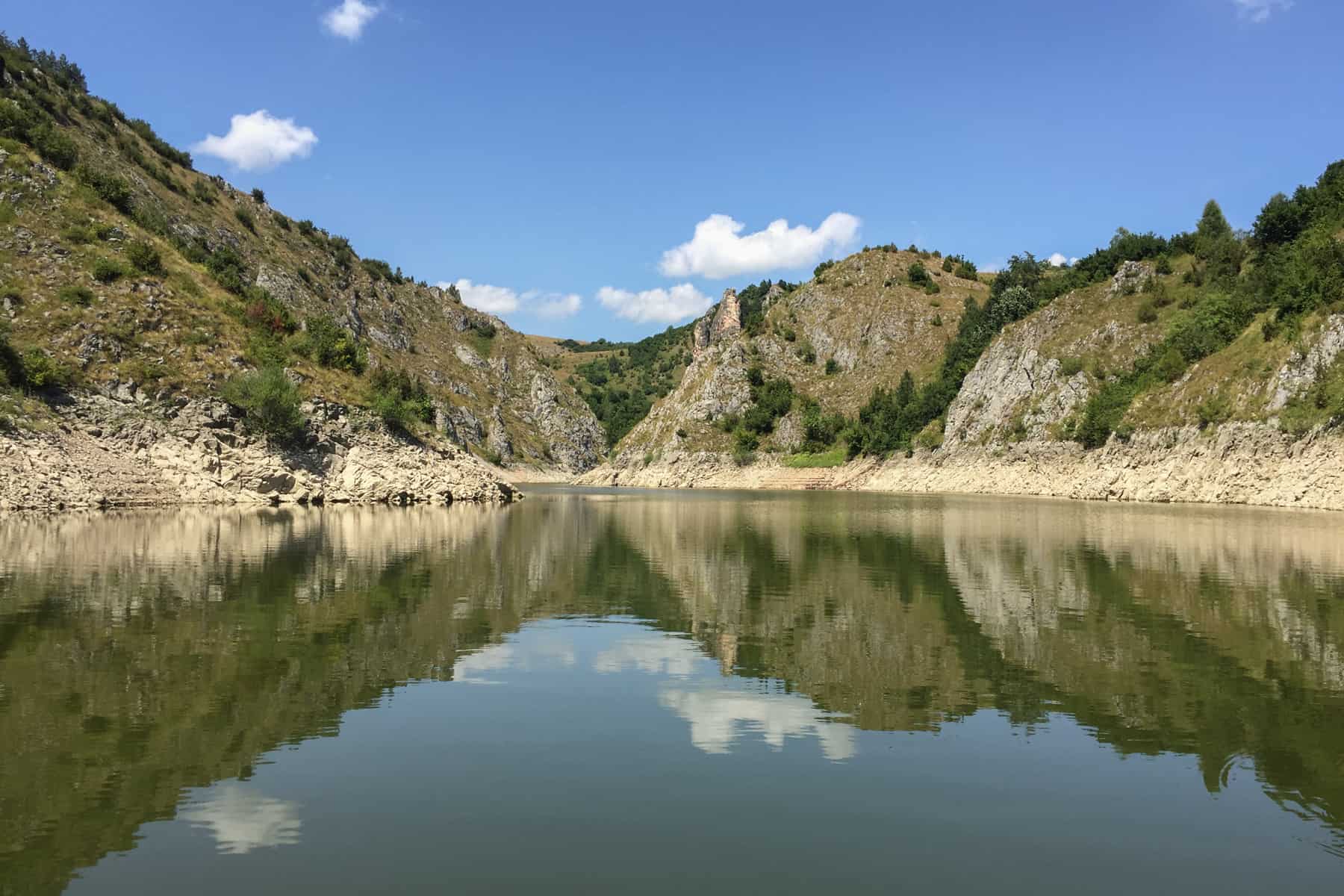
A journey through Uvac Special Nature Reserve along the Uvac Gorge.
East of Zlatibor and around three hours south of Belgrade is one of Serbia’s most historically prized Orthodox monasteries. The earthy red 13th-century Žiča Monastery was constructed on the orders of the first King of Serbia, Stefan the First-Crowned, and became the coronation church for all Serbian Kings on his orders. It was declared a Cultural Monument of Exceptional Importance in 1979.

Visit the Žiča Monastery- one of Serbia’s most historically protected buildings.

Continue further south from the Uvac Nature Reserve, and you will get to the valley town of Novi Pazar , located snugly within the Golija and Rogozna mountains. Off the grid from the main cities and surrounding nature are smaller towns with their distinct flair, which helps build a bigger picture of Serbia’s religious, cultural, and artistic diversity.
When Yugoslavia was founded, it was made up of South Slavic Christian and Muslim nations, although the latter is now a minority. Novi Pazar is a predominantly Muslim town that shows a different side to Serbia – architecturally, artistically and culturally. It’s small and appears nondescript at first sight, but wander its streets and accept the invitations from locals to try warming bread from the bakery and sip coffee at their house. Smiles soon overcame language barriers in an area of the country that wrestles with a bad reputation and an almost isolation in its Muslim identity, despite not being off-limits.
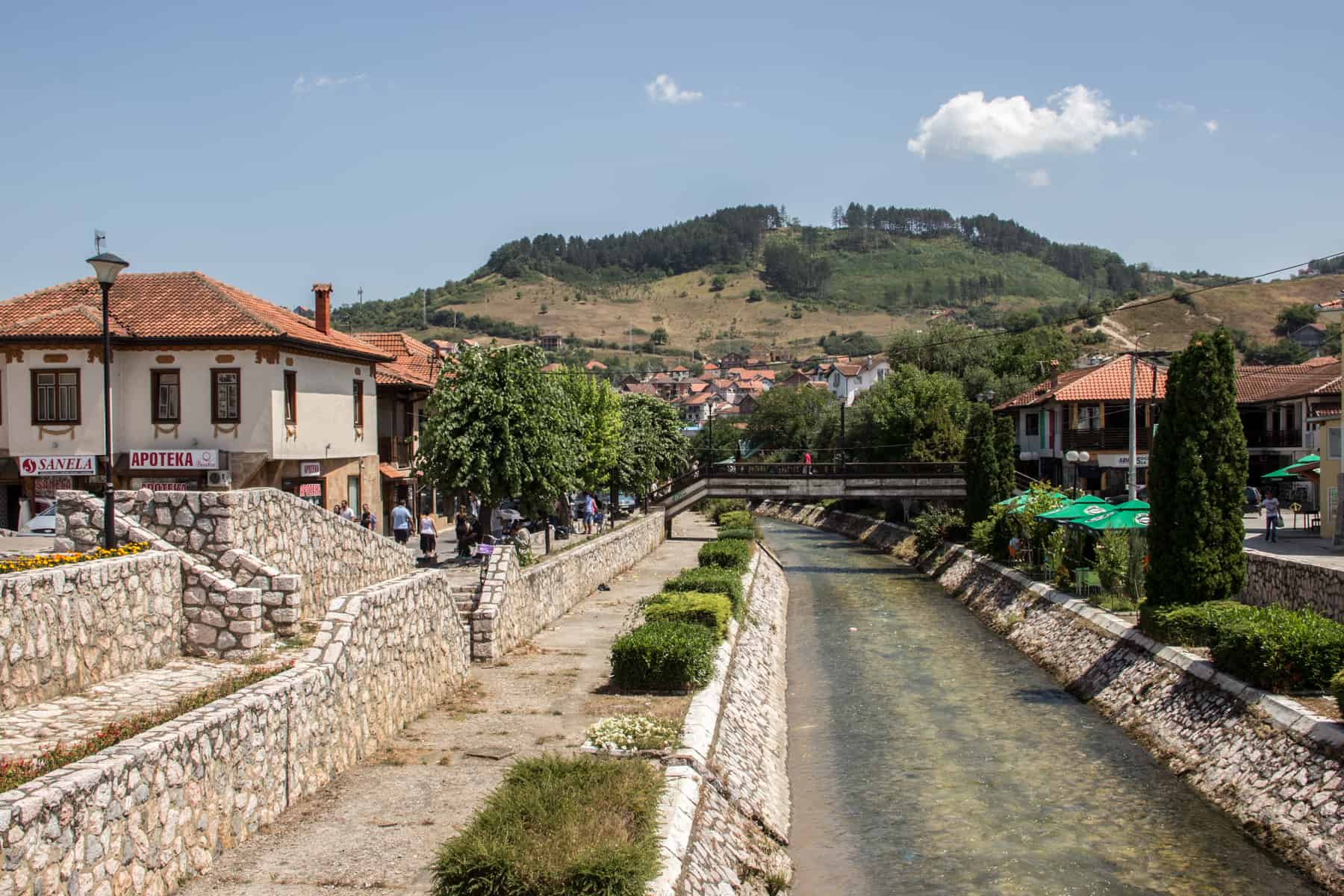
Visit Novi Pazar and see a destination in Serbia that’s often overlooked.
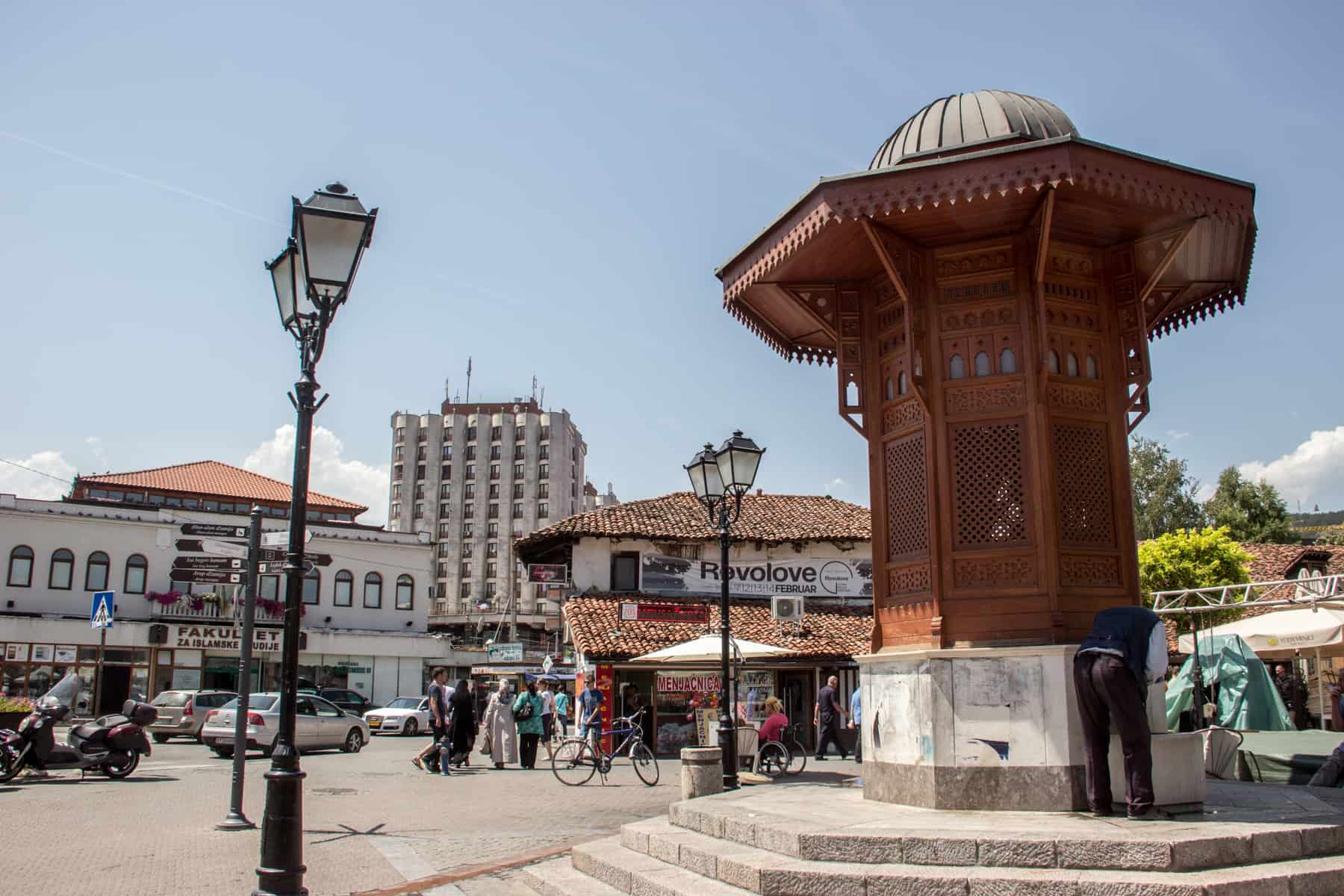
Life in the valley town of Novi Pazar.
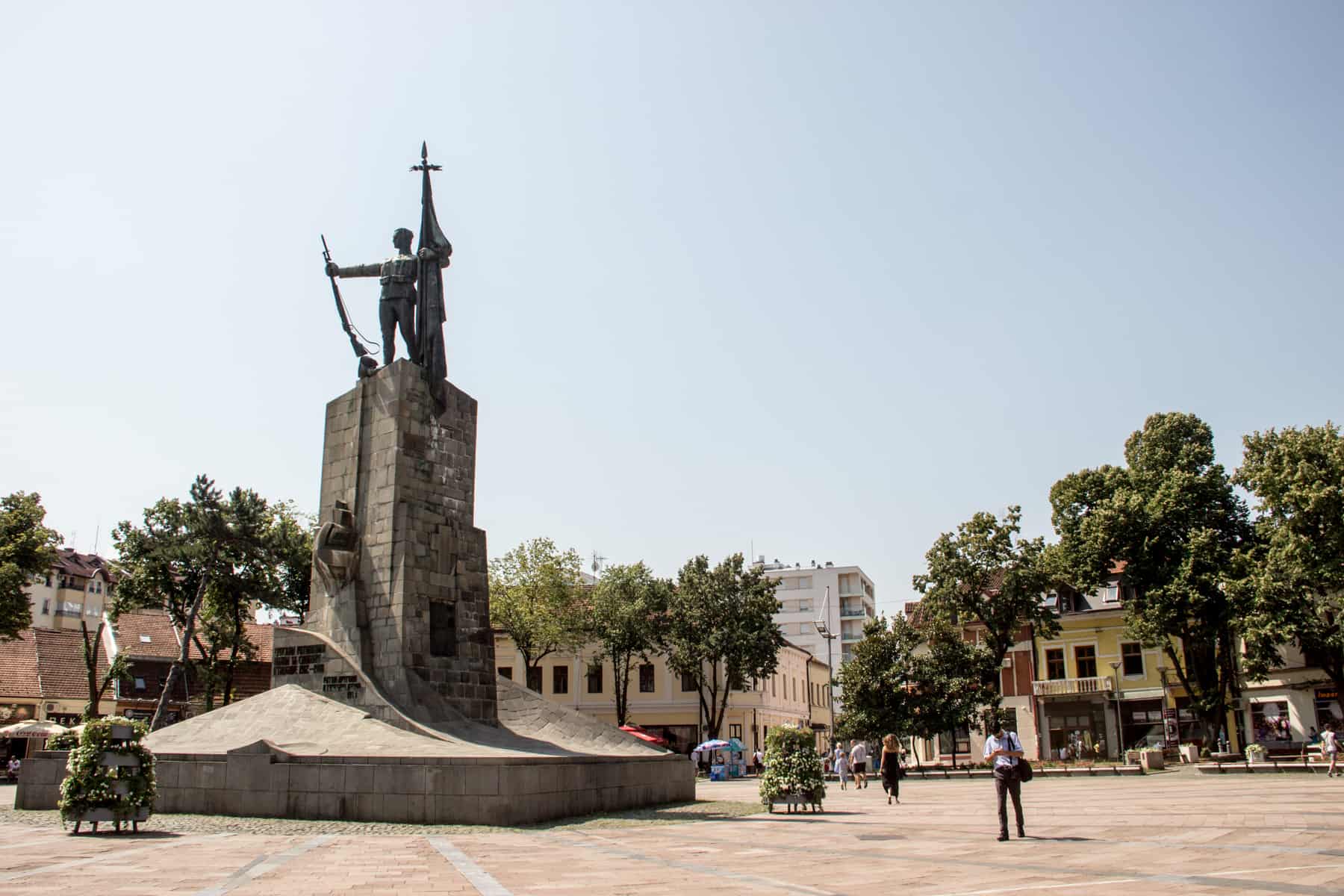
A decorated public square in Novi Pazar.
Only one hour south of Belgrade is bounteous landscapes with the foundations of good terroir – Serbia’s winemaking area of Topola. And not many people know about it. A region with award-winning vineyards that produce regionally characteristic sweet wine, such as the Aleksandrovich Winery and its superb Triumph series. Close to the vineyards is the hilltop five-domed St. George’s Church in Oplenac – a mausoleum of one of Serbia’s dynastic families. It features a marble floor and spectacular mosaic wall images and icons.
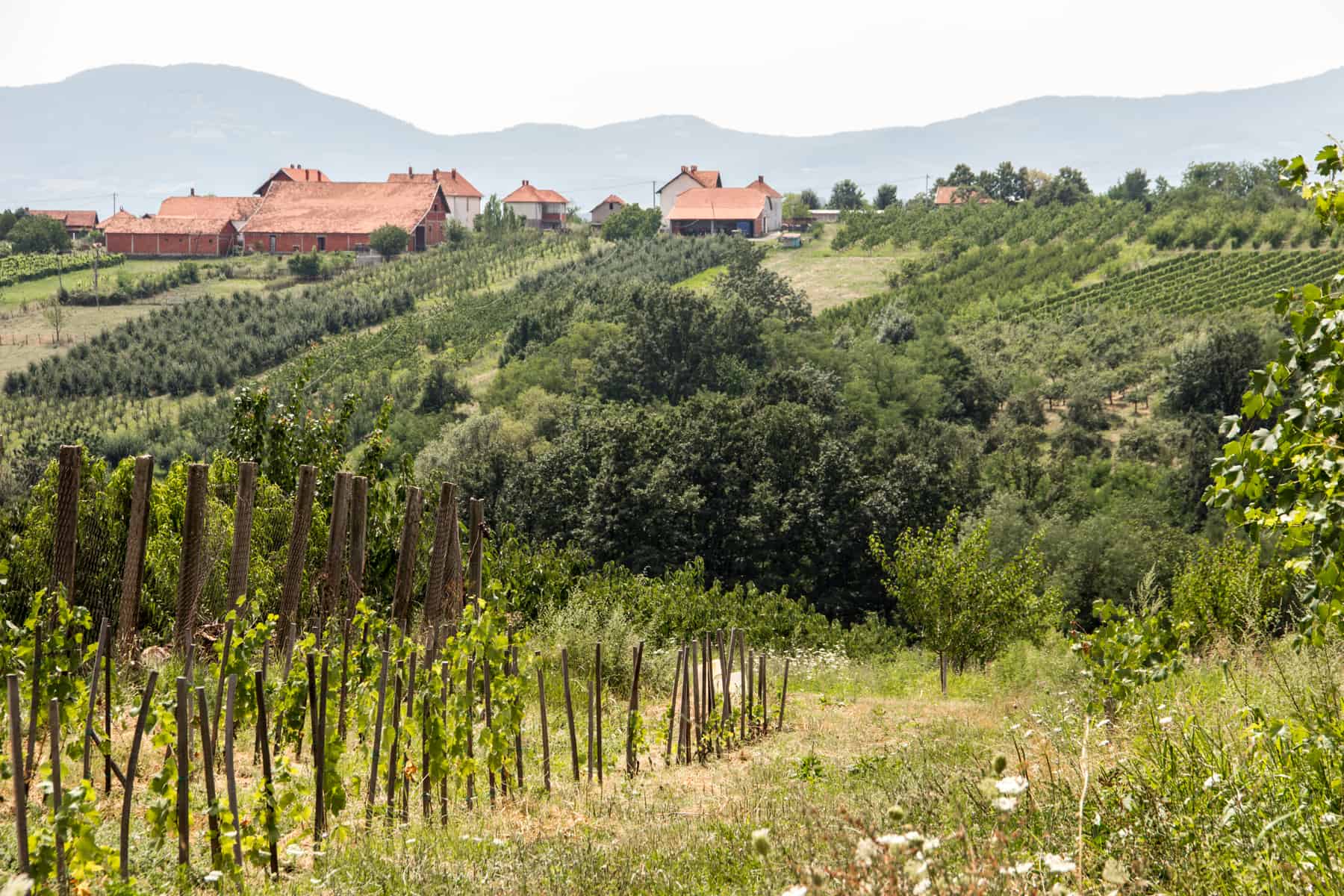
The vineyards of Topola – Serbia’s wine region.
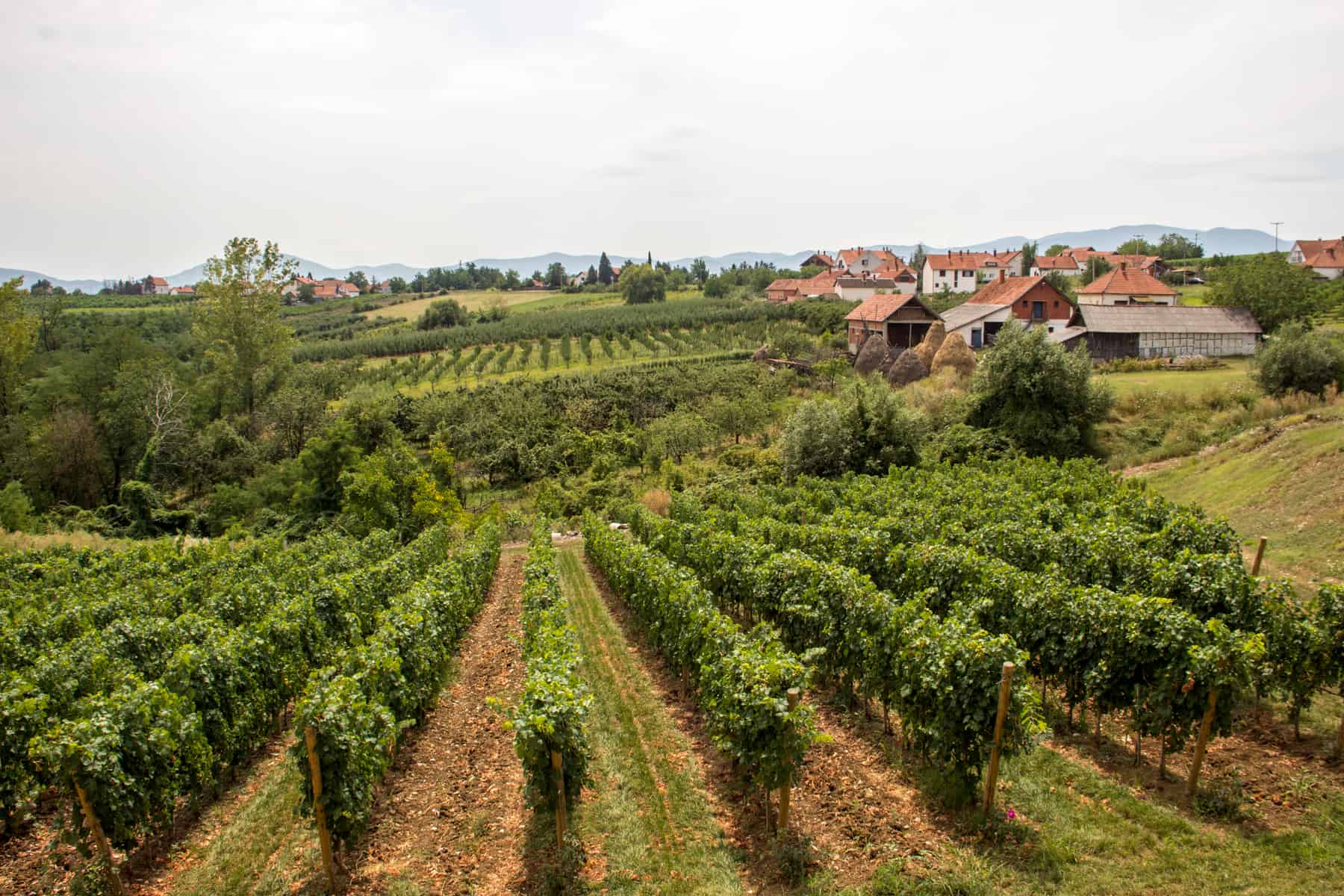
The terroir of Topola and Serbia’s underrated wine cultivation.
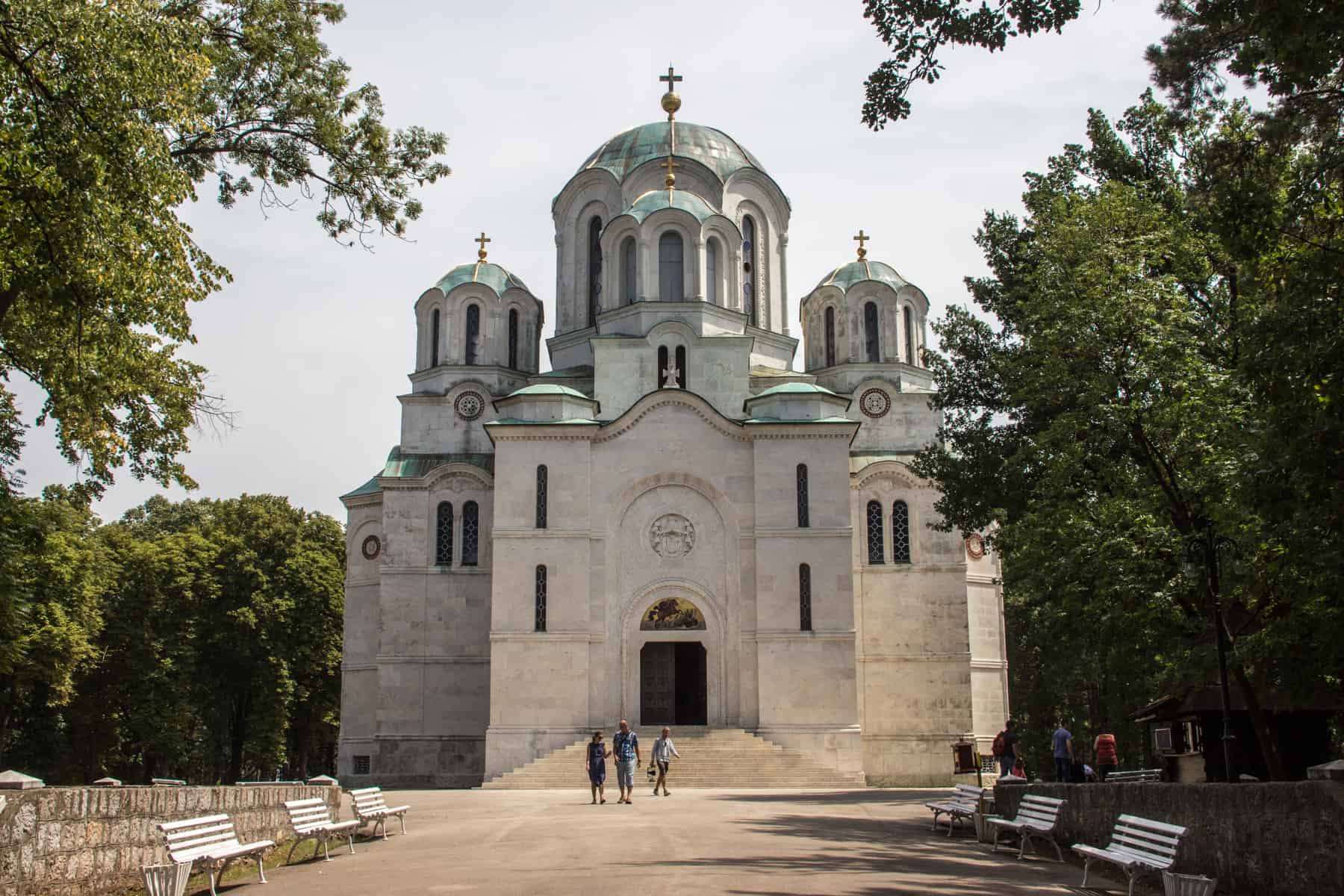
In Topola, visit the St. Georges Church in Oplenac.
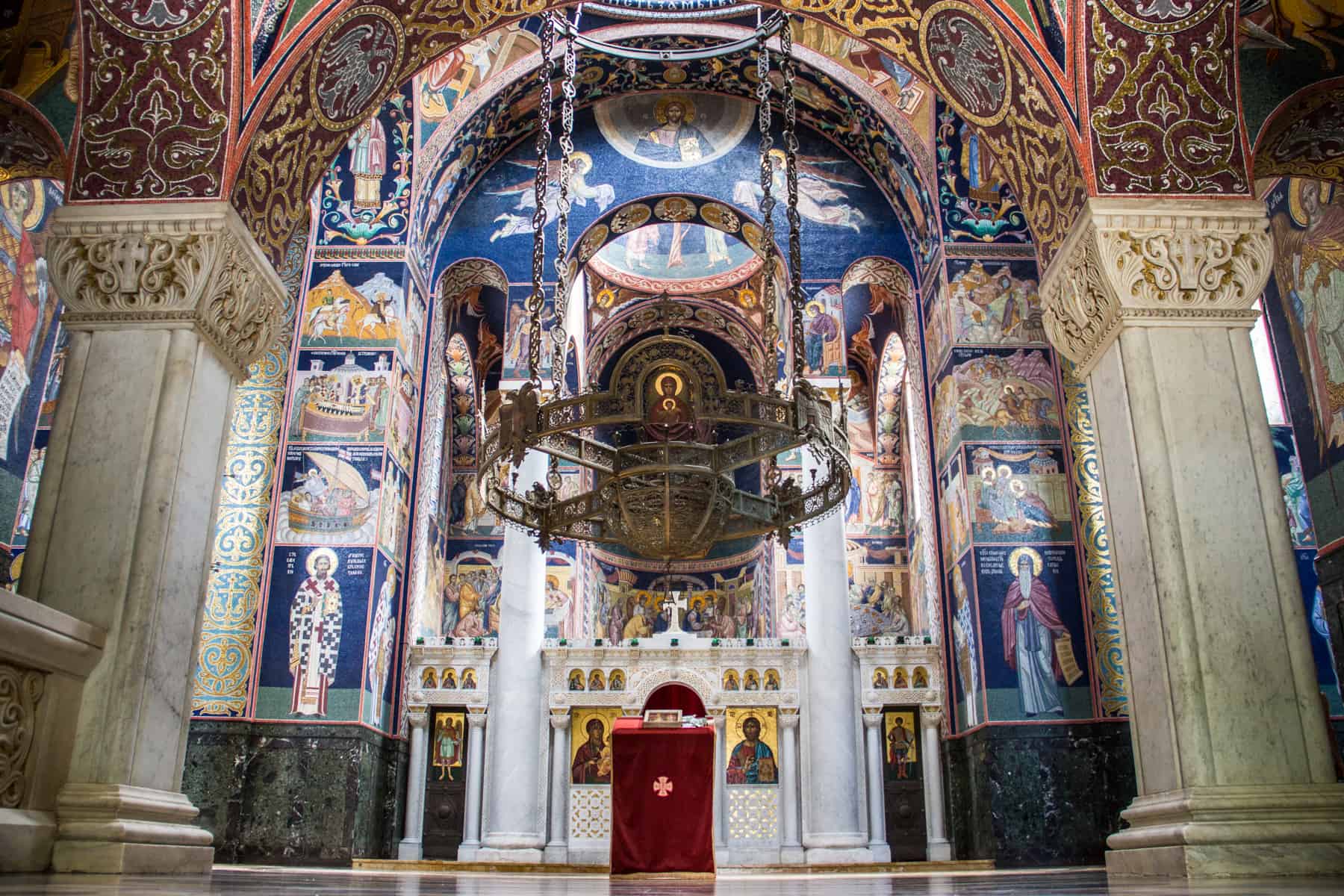
St. Georges Church in Serbia has one of the most beautifully painted interiors.
Around two hours south of Belgrade and north of Uvac is the village of Gu ča, known famously for its annual trumpet festival, which is a good enough reason to go.
Even if you are not a trumpet fan, the sheer amount of performers lighting up the town with all manner of these distinct low hums and beats will forever reverberate in you. Guča is where a unique cultural festival instinctively brings people together.
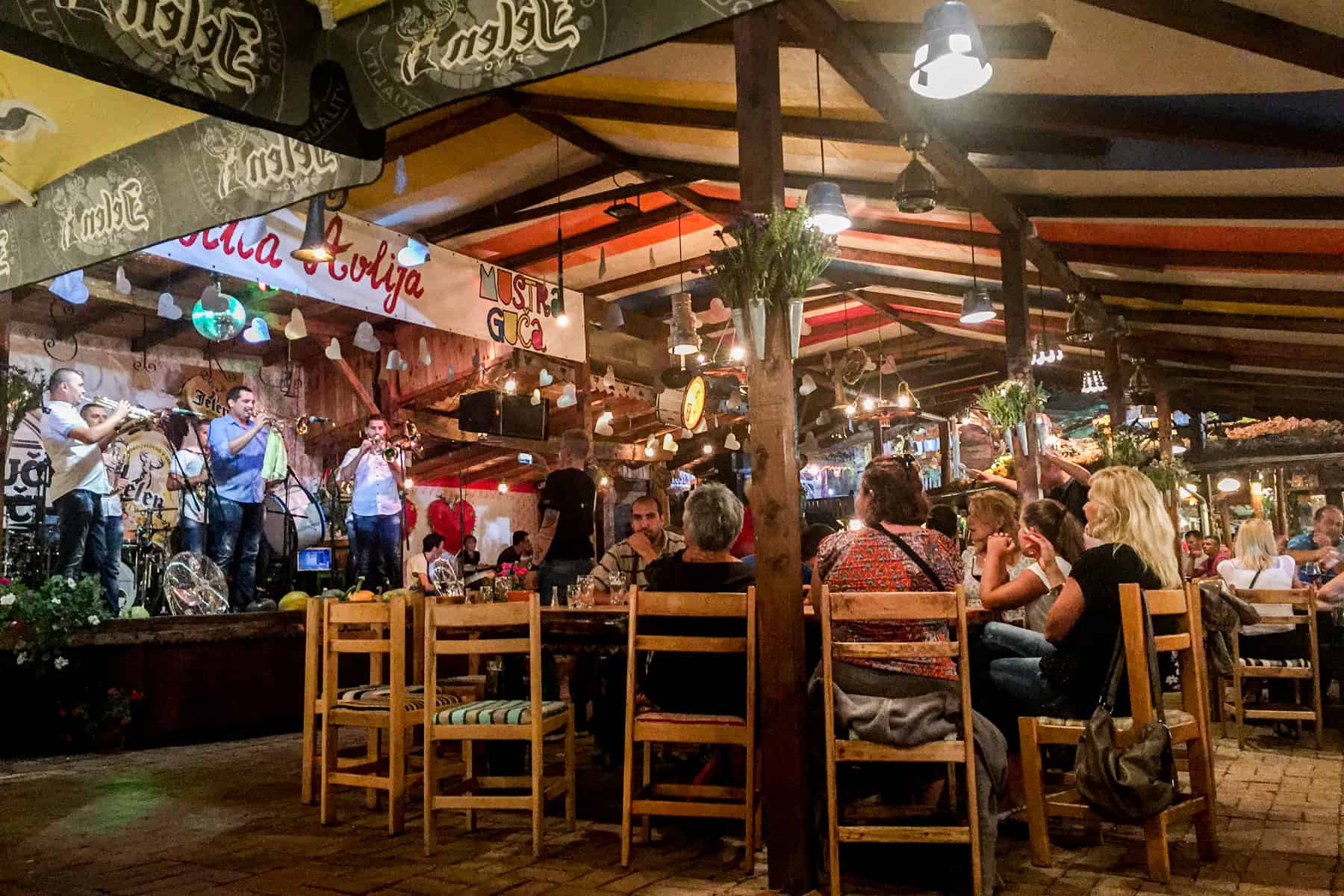
Entertainment at the Guča Trumpet Festival.

Many people visit Guča for its famed Trumpet Festival alone.
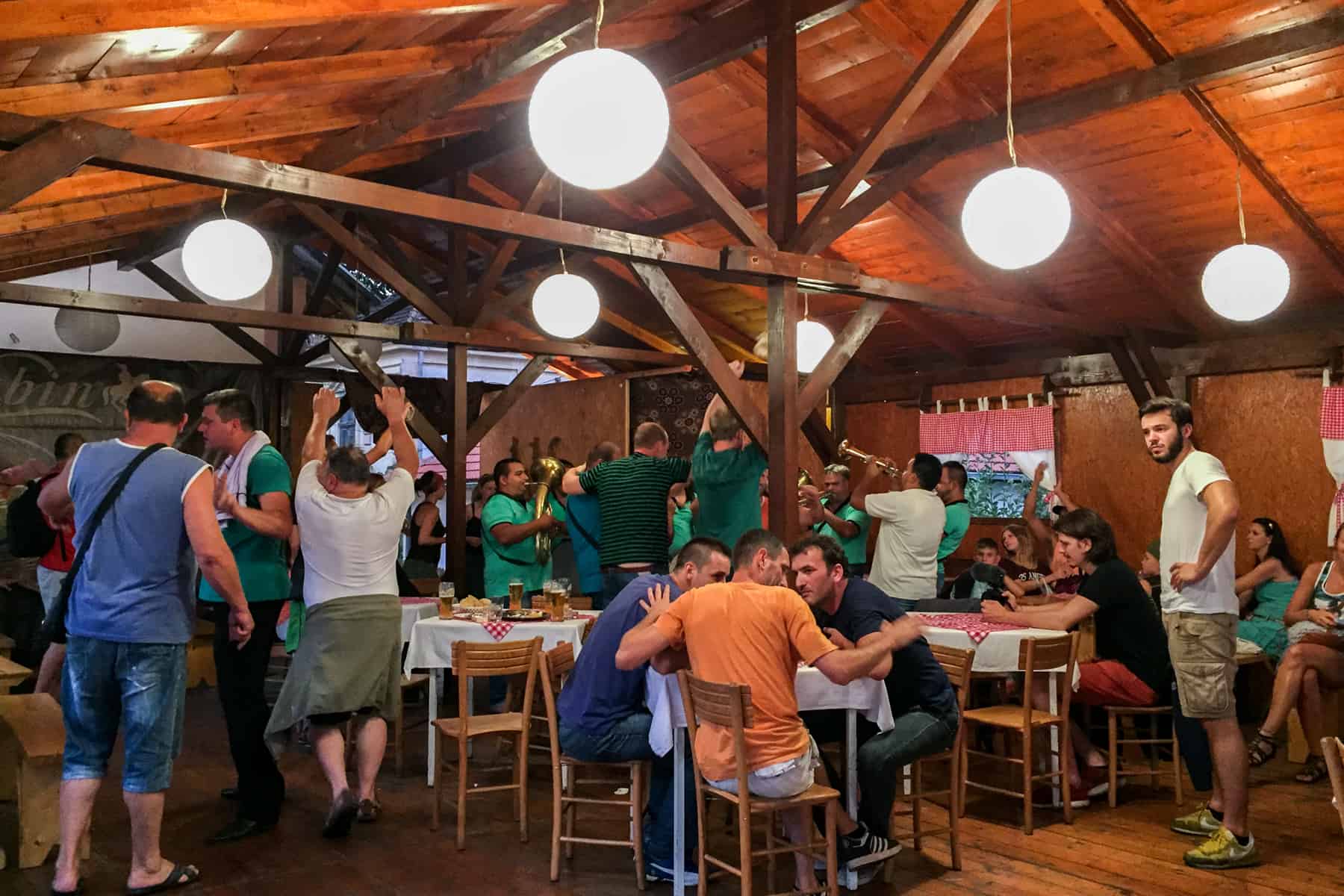
Guča’s Trumpet Festival turns into an all-night-long revelry.
Food in Serbia is a staple part of socialisation. Should you be invited to a feast by a local, wholeheartedly embrace it and enjoy it. Serbian cuisine is typically meat heavy, including Sarma : stuffed grape leaves filled with minced meat, Cevapi : grilled meat shaped liked tiny sausages and Kajmak: a curd based spread served with warm bread. All are usually served with side salads, fruit relishes and spicy chutneys and finished with chilled Rakija : the potent national drink that’s very much like Schnapps.
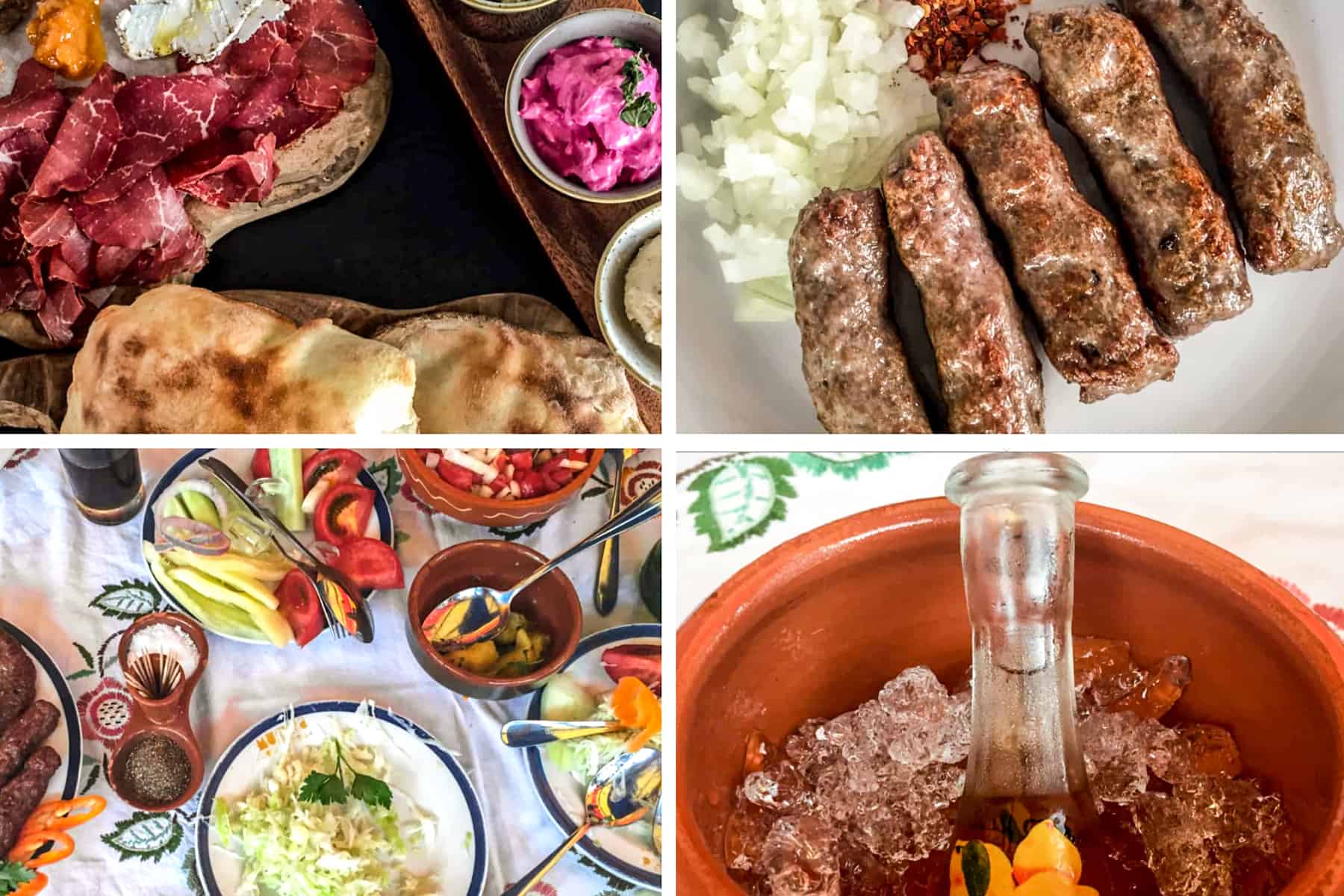
Enjoy the best Serbian food on your travels throughout the country.
First of all, the subject of Kosovo in Serbia is controversial and disputed – discuss it at your peril. Serbia doesn’t recognise Kosovo as an independent state or a country.
Now, to enter Kosovo from Serbia is fine since Serbia does not acknowledge the border and claims Kosovo as part of it. You can travel there and re-enter Serbia, no problem. However, if you enter Kosovo from neighbouring Montenegro, Albania, or North Macedonia land borders, then you will not be able to enter Serbia. Why? You don’t have the stamp for official entry in Serbia via Belgrade airport or the land crossing from Bosnia and Herzegovina, North Macedonia, Bulgaria, Romania, Croatia.
The future is positive for a country so tangled in political fragmentation. To travel in Serbia is to remember there is more to it than the image shadowed in atrocity and devastation. A sum of its centuries-old past that is more than the modern history we know.
A country in a rebuild that deserves the right kind of attention now.
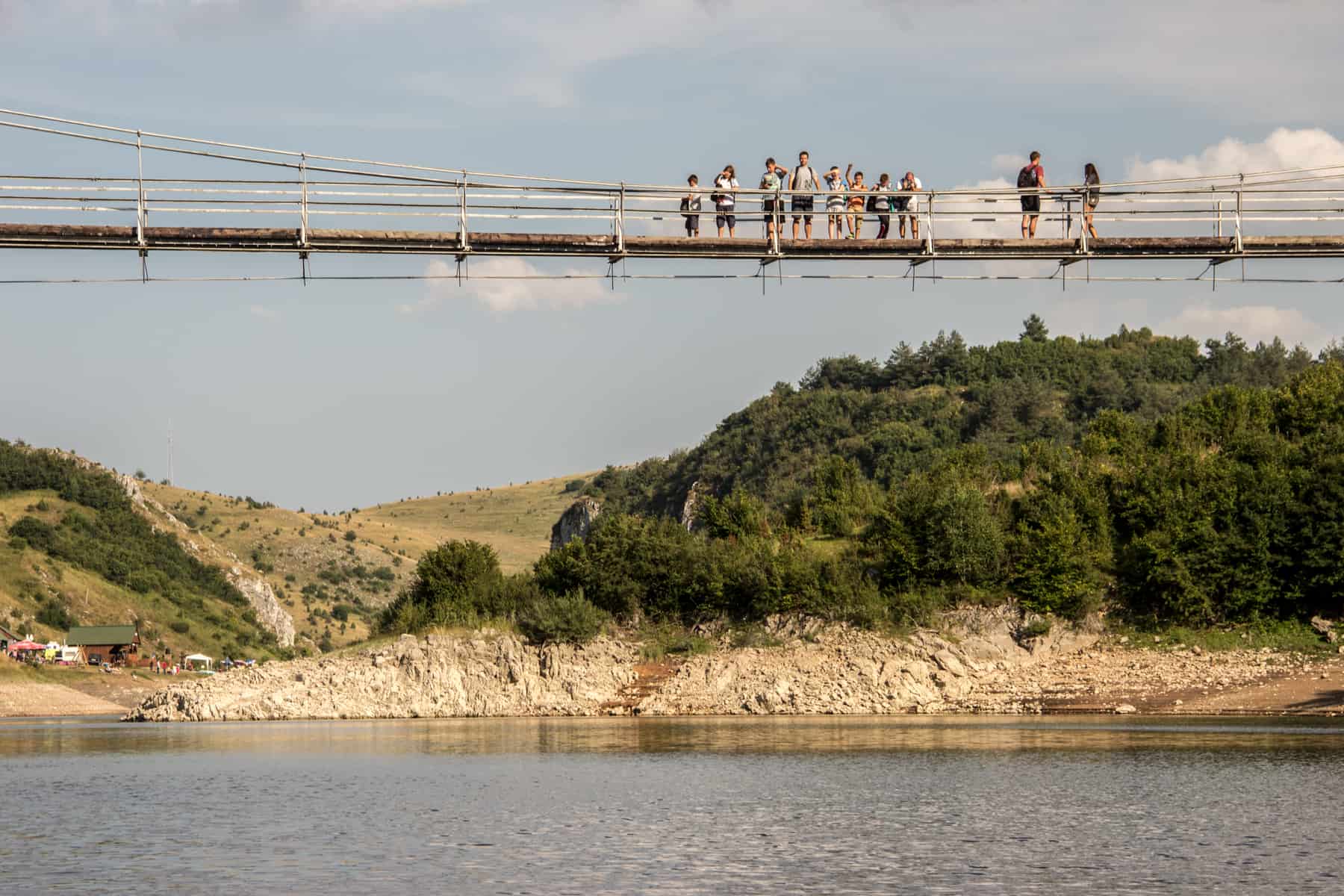
See Serbia from a different perspective and change your perceptions.
My trip to Serbia was created in conjunction with the National Tourism Organisation of Serbia for the #MySerbia campaign travelling with locals for a deeper insight into the country. All opinions on this Serbia travel blog remain my own.
About Becki
Becki Enright is a British Travel Press Award-winning writer whose work focuses on changing perceptions about misunderstood aspects of destinations. Her writing combines storytelling with insight into the social, historical, political and economic factors that shape the country or place in relation to tourism. Becki has appeared live on Sky News and CNN and has contributed to high profile media including National Geographic, Time.com, Guardian online, New York Times, Grazia and Buzzfeed.
7 April 2016 at 11:17 am
Awesome post! Add Exit Festival from Novi Sad to the list too 😉 It’s one of the most famous and best music summer festivals in Europe 😉
31 March 2016 at 7:12 am
Great post with beautiful pictures. It was nice to discover a new place by reading. I have had neighbours from Serbia when I was living in Vienna, now I can see how their country looks.
Jennifer says
22 March 2016 at 2:45 am
Great post, I would love to visit Serbia. My partner went about 6 years ago and enjoyed it almost admittedly he didn’t see much of the country on ‘van tour’. We are both living in New Zealand now but we would like to travel to this area of Europe soon. The scenery in the countryside looks stunning and I am sure all the small villages and towns are full of history.
Leave a Reply Cancel reply
Your email address will not be published. Required fields are marked *
- Article Archives
- Work with me
- Privacy Policy

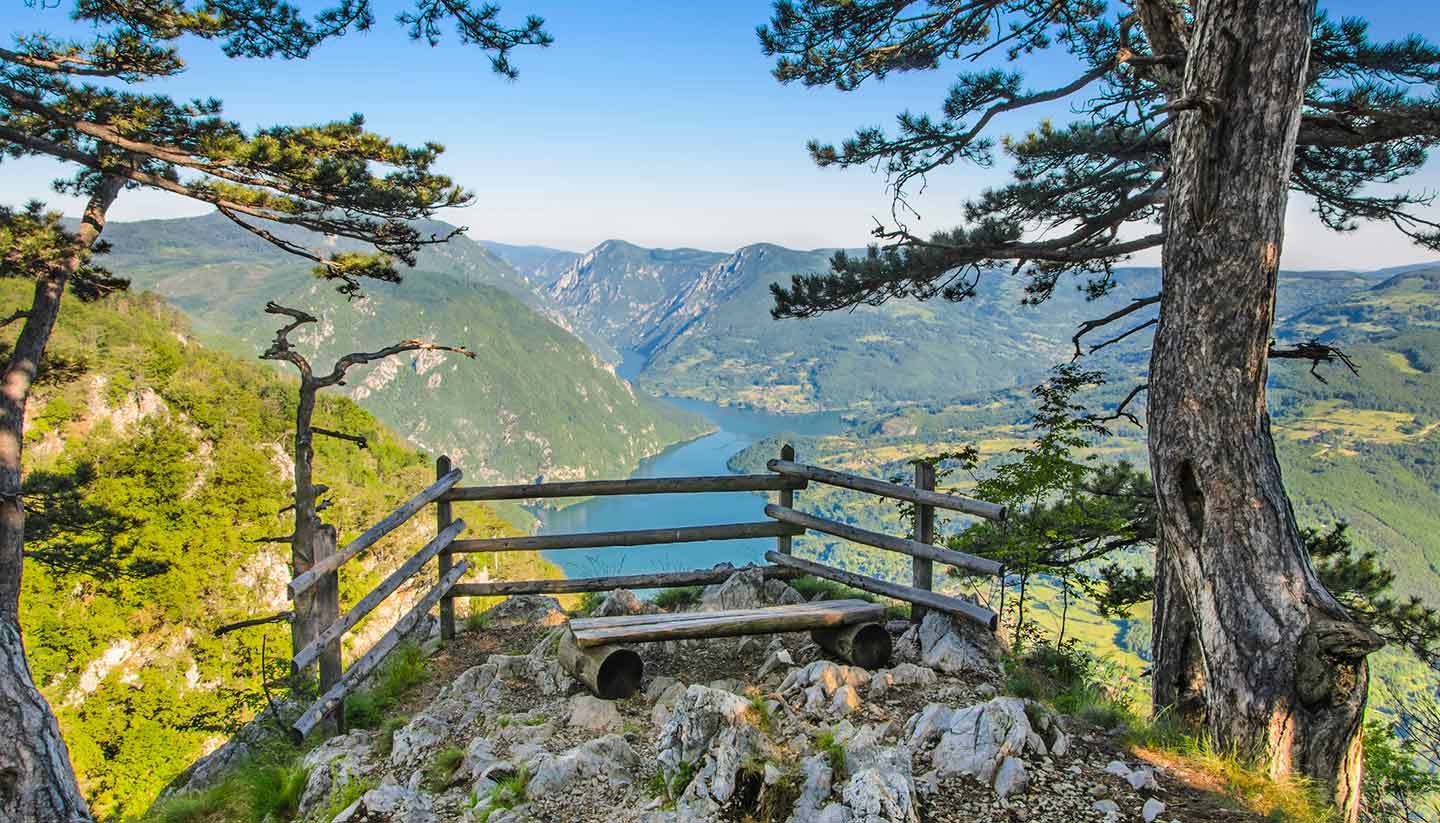
Introducing Serbia
About serbia.
- Images of Serbia
- History, language & culture
- Weather & geography
- Doing business & staying in touch
Plan your trip
- Travel to Serbia
- Where to stay
While you’re there
- Things to see & do
- Shopping & nightlife
- Food & drink
- Getting around
Before you go
- Passport & visa
- Public Holidays
- Money & duty free
Book your flights
- Belgrade Nikola Tesla Airport
Serbia travel guide
Although its reputation took a hammering during the disastrous collapse of Yugoslavia in the 1990s, Serbia has since become one of Eastern Europe’s most entertaining destinations. Much of that is down to Belgrade, which, despite NATO bombing during the Milosevic regime, has emerged as a dynamic, edgy city with an appetite for hedonism.
Home to numerous excellent museums and galleries, a wide range of restaurants and cafés, and some of the best nightlife in southeast Europe, Belgrade is drawing comparisons with some of the world’s coolest cities. It is also helping lead the rest of the country into a bright and hopeful future, with a young generation of creative and outward-looking Serbs reshaping the historic land that was founded as a principality some 1,200 years ago.
Away from the capital, Novi Sad is an attractive, lively city with an elegant centre and picturesque fortress overlooking over the Danube. In the far north, Subotica has an array of secessionist architecture and a notable Hungarian character.
The province of Vojvodina, north of Belgrade, has some excellent wetland habitats that are home to numerous bird species, while south of the capital the countryside consists of lush, wooded valleys with hidden-away Orthodox monasteries. Scattered among the country's more mountainous regions are a number of vast national parks.
Serbia is known for the forthright character of its citizens; its resilient culture has survived numerous occupiers and foreign rulers over the centuries. Despite their formidable reputation, visitors will find Serbs to be passionate but welcoming. As an Orthodox Christian country, it remains to a large degree deeply religious, though this fact is belied somewhat by the hedonism found in its bigger cities.
While there are still some political problems in Serbia, which has yet to formally recognise Kosovo after it unilaterally declared independence in 2008, the country has turned a corner. It is officially a EU candidate and many Serbs are hopeful of the change in economic fortunes that might be brought by becoming a full member.
77,474 sq km (35,246 sq miles).
8,812,705 (UN estimate 2016).
92.6 per sq km.
President Aleksandar Vucic since June 2017.
Prime Minister Milos Vucevic since May 2024.
Travel Advice
Before you travel.
No travel can be guaranteed safe. Read all the advice in this guide and any specific travel advice that applies to you:
- women travellers
- disabled travellers
LGBT+ travellers
- solo and independent travel
- volunteering and adventure travel
Travel insurance
If you choose to travel, research your destinations and get appropriate travel insurance . Insurance should cover your itinerary, planned activities and expenses in an emergency.
About FCDO travel advice
The Foreign, Commonwealth & Development Office ( FCDO ) provides advice about risks of travel to help British nationals make informed decisions. Find out more about FCDO travel advice .
Follow and contact FCDO travel on Twitter , Facebook and Instagram . You can also sign up to get email notifications when this advice is updated.
This information is for people travelling on a full ‘British citizen’ passport from the UK. It is based on the UK government’s understanding of the current rules for the most common types of travel.
The authorities in Serbia set and enforce entry rules. If you’re not sure how these requirements apply to you, contact the Serbian Embassy in the UK .
COVID-19 rules
There are no COVID-19 testing or vaccination requirements for travellers entering Serbia.
Passport validity requirements
Your passport must have an ‘expiry date’ at least 90 days after the date you plan to leave Serbia.
Check with your travel provider that your passport and other travel documents meet requirements. Renew your passport if you need to.
You will be denied entry if you do not have a valid travel document or try to use a passport that has been reported lost or stolen.
Visa requirements
You can visit Serbia without a visa for up to 90 days within a 6-month period, for business or tourism.
For details about employment visas and long-stay visas, check the information from the Serbian Embassy in the UK .
If you want to extend your stay while you are in Serbia, you can apply at the police station where you’re registered at least 30 days before the 90-day period expires. For more information visit the website of the Serbian Ministry of Foreign Affairs .
Make sure you get your passport stamped.
When entering Serbia, make sure border guards stamp your passport. If you try to leave Serbia without an entry stamp you could face charges of illegal immigration, a heavy fine and a prison sentence.
Land border crossings
Only enter Serbia by land through recognised border crossings. Serbian borders remain open for entry and exit, subject to any entry requirements currently in place in neighbouring countries.
Travelling between Serbia and Kosovo
The authorities in Serbia do not consider the designated crossing points with Kosovo to be official international border crossing points.
It is possible to travel from Serbia to Kosovo, and back again.
To travel from Kosovo to Serbia, you must have a Serbian entry stamp from Belgrade, Niš or Kraljevo airports, or from one of Serbia’s land border crossings with:
- Bosnia and Herzegovina
- North Macedonia
You are likely to be refused entry into Serbia from Kosovo without a valid Serbian entry stamp. We are also aware of isolated incidents where Serbian authorities have cancelled Kosovo stamps in passports of foreign nationals or denied foreign nationals entry to Serbia if they have Republic of Kosovo stamps in their passports.
If you are planning to travel between Serbia and Kosovo, see the Kosovo travel advice .
Tensions between Serbia and Kosovo can cause difficulties at border crossings with Kosovo.
Registering with the police
You must register with the local police where you’re staying within 24 hours of your arrival in Serbia. If you’re staying in a hotel, check-in staff will register you automatically. If you do not register, you could get a fine, and face arrest and a court appearance.
Vaccine requirements
For details about medical entry requirements and recommended vaccinations, see TravelHealthPro’s Serbia guide .
Customs rules
There are strict rules about goods that can be brought into and out of Serbia . You must declare anything that may be prohibited or subject to tax or duty.
You must declare personal items of value you’re carrying – for example, jewellery, cameras and computing equipment. These are exempt from customs duties.
Taking money into and out of Serbia
If you are carrying cash or travellers cheques worth more than 10,000 euros, you must:
- complete a declaration form at customs on arrival in Serbia – a customs officer will certify this by signing or stamping the form
- keep a copy of the certified form while you are in Serbia
- show the certified form when you leave Serbia
If you are taking any Serbian dinars into the country, you must show the receipt from the bank where you bought them.
Customs officers may seize your money if you do not follow these rules.
You should exchange any unwanted dinars before you leave Serbia. British banks do not normally exchange dinars. Do not use street dealers. Only change money through banks or official exchange offices.
It is not possible to exchange Scottish and Northern Irish banknotes in Serbia.
There is a high threat of terrorist attack globally affecting UK interests and British nationals, including from groups and individuals who view the UK and British nationals as targets. Stay aware of your surroundings at all times.
UK Counter Terrorism Policing has information and advice on staying safe abroad and what to do in the event of a terrorist attack. Find out how to reduce your risk from terrorism while abroad .
Terrorism in Serbia
Terrorist attacks in Serbia cannot be ruled out.
There may be increased security in place during festive periods, including at Christmas markets and other major events that might attract large crowds. Remain vigilant and follow the advice of the local authorities.
Attacks could be indiscriminate, including in places visited by foreigners. Terrorists may target religious sites, including churches.
Political situation
There is the potential for disturbances in Belgrade and other towns and cities. There have been mass gatherings in Belgrade and other cities since May 2023. Further gatherings are planned. These can cause significant disruption, including to public transport. To reduce your personal risk, including possible injury:
- keep up to date with local developments
- plan ahead to avoid disruption
- avoid crowds and demonstrations
Protecting yourself and your belongings
Take sensible precautions to protect yourself from street crime, particularly in larger cities. Pickpockets work in tourist areas, airports, on public transport and at motorway service stations.
Criminals may assume that foreigners are carrying large amounts of cash. Four-wheel-drive and luxury vehicles are also common targets.
Some sporting events have had incidents of violence and petty crime. Incidents are common during derby matches in Belgrade – take extra care in and around stadiums when these are taking place.
Unexploded landmines and bombs
There is still some danger from unexploded landmines and bombs from the 1999 Kosovo conflict. Most of the affected areas are in the mountains to the north and east of Kosovo. Take special care in these areas and keep to marked roads.
Thick vegetation covers most of the dangerous areas. Do not touch anything suspicious and report it to the police.
Laws and cultural differences
Personal id.
You must always carry your passport or – if you are a resident – your ID card for identification purposes. Keep a copy separately in a safe place.
Illegal drugs and prison sentences
There are strict penalties for possessing and trafficking drugs, including long prison sentences.
Using cameras in secure areas
Taking photographs of military and police installations, personnel or vehicles anywhere in Serbia may lead to arrest or difficulties with the authorities.
Same-sex sexual activity is legal in Serbia, and there are anti-discrimination laws. There are LGBT+ friendly hostels, clubs and other events in Belgrade. However, the level of public prejudice against LGBT+ people is still relatively high. Showing affection in public could result in unwanted attention.
Read more advice for LGBT+ travellers .
Transport risks
Road travel.
If you are planning to drive in Serbia, see information on driving abroad and check the rules of the road in the RAC’s Serbia guide . The guide lists driving regulations and other legal requirements you need to be aware of.
You can drive with a UK photocard driving licence for a series of short visits up to a year, or for a single stay of up to 6 months.
You may find it helpful to have the 1968 version of the international driving permit as Serbian police will be able to recognise it.
If you’re staying longer than 6 months, you must get a local licence.
Road conditions
The general standard of roads in Serbia varies widely. Roads are worse in rural areas, especially after bad weather. One particularly dangerous road is the Ibarska Magistrala (linking Belgrade, via Čačak and Užice, to Montenegro).
Dial 1987 for roadside assistance.
Many Serbian car hire firms will not allow you to drive their vehicles into Kosovo, Albania or Bulgaria because of security concerns. There have been some incidents where Serbian registered cars have been vandalised, or in some cases set on fire, in more isolated areas of Kosovo.
Bringing a vehicle into Serbia
If you are bringing a vehicle into Serbia, you must have vehicle registration and ownership documents and a locally valid insurance policy .
Check if you need a UK sticker to drive your car outside the UK .
You should only use registered taxis – look for a municipal registration number alongside the cab number. Instead of hailing a taxi, you can call one of the radio taxi phone numbers – most operators speak English.
See more information about taxis and public transport from the Belgrade Tourism Organisation.
Rail travel
Trains can be slow, particularly in winter when there are often long delays. Each carriage has an attendant, and local police may carry out random ID checks.
Thieves operate on trains, so take particular care that passports and other valuables are safe. On overnight trains, lock your sleeping berth from the inside for safety.
Extreme weather and natural disasters
Find out what you can do to prepare for and respond to extreme weather and natural hazards .
During especially hot and dry periods there is a danger of wildfires. Take care when visiting or driving through woodland areas. Do not light barbecues except in designated areas and always properly extinguish cigarettes.
Parts of Serbia can flood after heavy rain. See flood warnings from the Serbian Hydrometeorological Service . If floods affect your area, follow the instructions of the Serbian authorities.
Earthquakes
There is a risk of earthquakes in Serbia, and earth tremors are common. Serious earthquakes are less frequent but can occur. The US Federal Emergency Management Agency has advice on what to before, during and after an earthquake .
Before you travel check that:
- your destination can provide the healthcare you may need
- you have appropriate travel insurance for local treatment or unexpected medical evacuation
This is particularly important if you have a health condition or are pregnant.
Emergency medical number
Dial 194 and ask for an ambulance.
Contact your insurance or medical assistance company quickly if you’re referred to a medical facility for treatment.
Vaccine recommendations and health risks
At least 8 weeks before your trip:
- check the latest vaccine recommendations for Serbia
- see where to get vaccines and whether you have to pay on the NHS travel vaccinations page
See what health risks you’ll face in Serbia including biting insects and ticks.
The legal status and regulation of some medicines prescribed or bought in the UK can be different in other countries.
Read best practice when travelling with medicines on TravelHealthPro .
Healthcare in Serbia
FCDO has a list of healthcare facilities in Serbia where some staff will speak English.
The UK has a reciprocal healthcare agreement with Serbia. You’re entitled to free emergency treatment.
To get treatment you must show:
- a British passport
- your hotel documents or evidence of registration with the local police, if you’re not staying in a hotel
- a certificate confirming entitlement to benefit under the UK Social Security Acts – you can get the certificate from HM Revenue & Customs before you travel or contact the British Embassy if you need assistance
You may need to pay cash for non-emergency treatment or treatment that is not covered under the reciprocal agreement. Make sure you can access money to cover medical treatment.
Some private clinics in Serbia offer treatment for addiction which may not meet UK standards. Seek advice from your local GP or health provider in the UK before undertaking any treatment.
Travel and mental health
Read FCDO guidance on travel and mental health . There is also mental health guidance on TravelHealthPro .
The Foreign, Commonwealth & Development Office ( FCDO ) cannot provide tailored advice for individual trips. Read this travel advice and carry out your own research before deciding whether to travel.
Emergency services in Serbia
All emergencies: 112
Ambulance: 194
Police: 192
Contact your travel provider and insurer
Contact your travel provider and your insurer if you are involved in a serious incident or emergency abroad. They will tell you if they can help and what you need to do.

Refunds and changes to travel
For refunds or changes to travel, contact your travel provider. You may also be able to make a claim through insurance. However, insurers usually require you to talk to your travel provider first.
Find out more about changing or cancelling travel plans , including:
- where to get advice if you are in a dispute with a provider
- how to access previous versions of travel advice to support a claim
Support from FCDO
FCDO has guidance on staying safe and what to do if you need help or support abroad, including:
- finding English-speaking lawyers , funeral directors and translators and interpreters in Serbia
- dealing with a death in Serbia
- being arrested in Serbia
- getting help if you’re a victim of crime
- what to do if you’re in hospital
- if you’re affected by a crisis , such as a terrorist attack
Contacting FCDO
Follow and contact FCDO travel on Twitter , Facebook and Instagram . You can also sign up to get email notifications when this travel advice is updated.
Help abroad in an emergency
If you are abroad and you need emergency help from the UK government, contact the British Embassy in Belgrade .
You can also contact FCDO online .
FCDO in London
You can call FCDO in London if you need urgent help because something has happened to a friend or relative abroad.
Telephone: 020 7008 5000 (24 hours)
Find out about call charges .
Risk information for British companies
The Overseas Business Risk service offers information and advice for British companies operating in Serbia on how to manage political, economic, and business security-related risks.

Book a Hotel
© Columbus Travel Media Ltd. All rights reserved 2024
Country in Southeast and Central Europe / From Wikipedia, the free encyclopedia
Dear wikiwand ai, let's keep it short by simply answering these key questions:.
Can you list the top facts and stats about Serbia?
Summarize this article for a 10 year old
Serbia , [lower-alpha 3] officially the Republic of Serbia , [lower-alpha 4] is a landlocked country at the crossroads of Southeast and Central Europe, [8] [9] located in the Balkans and the Pannonian Plain . It borders Hungary to the north, Romania to the northeast, Bulgaria to the southeast, North Macedonia to the south, Croatia and Bosnia and Herzegovina to the west, and Montenegro to the southwest. Serbia claims a border with Albania through the disputed territory of Kosovo . Serbia has about 6.6 million inhabitants, excluding Kosovo. Its capital Belgrade is also the largest city .
Continuously inhabited since the Paleolithic Age, the territory of modern-day Serbia faced Slavic migrations in the 6th century, establishing several regional states in the early Middle Ages at times recognised as tributaries to the Byzantine , Frankish and Hungarian kingdoms. The Serbian Kingdom obtained recognition by the Holy See and Constantinople in 1217, reaching its territorial apex in 1346 as the Serbian Empire . By the mid-16th century, the Ottomans annexed the entirety of modern-day Serbia; their rule was at times interrupted by the Habsburg Empire , which began expanding towards Central Serbia from the end of the 17th century while maintaining a foothold in Vojvodina . In the early 19th century, the Serbian Revolution established the nation-state as the region's first constitutional monarchy , which subsequently expanded its territory. [10] In 1918, in the aftermath of World War I , the Kingdom of Serbia united with the former Habsburg crownland of Vojvodina ; later in the same year it joined with other South Slavic nations in the foundation of Yugoslavia , which existed in various political formations until the Yugoslav Wars of the 1990s. During the breakup of Yugoslavia , Serbia formed a union with Montenegro , [11] which was peacefully dissolved in 2006, restoring Serbia's independence as a sovereign state for the first time since 1918. [12] In 2008, representatives of the Assembly of Kosovo unilaterally declared independence , with mixed responses from the international community while Serbia continues to claim it as part of its own sovereign territory .
Serbia is an upper-middle income economy , ranked "very high" in the Human Development Index domain. It is a unitary parliamentary constitutional republic , member of the UN , CoE , OSCE , PfP , BSEC , CEFTA , and is acceding to the WTO . Since 2014, the country has been negotiating its EU accession , with the possibility of joining the European Union by 2030. [13] Serbia formally adheres to the policy of military neutrality . The country provides universal health care and free primary and secondary education to its citizens.
Travel Guide Serbia
Book your individual trip , stress-free with local travel experts
Select Month
- roughguides.com
- Travel guide
- Local Experts
- Travel Advice
- Accommodation
Plan your tailor-made trip with a local expert
Book securely with money-back guarantee
Travel stress-free with local assistance and 24/7 support
Serbia is a buzzy and boisterous country, compact enough for visitors to sample both Belgrade’s urban hedonism and the gentler pace of the smaller towns or national parks within a few days – and it’s one of Europe’s most affordable destinations to boot. Grittier than its blue-eyed neighbour Croatia, it is nevertheless an integral part of any backpacker’s Balkan tour: at the heart of the region, it gives easy access to the cluster of cultures and histories crammed into this small corner of Europe.
Where to go in Serbia
Travel ideas for serbia, created by local experts.

7 days / from 1268 USD
Explore Serbia and Bosnia & Herzegovina
Explore the highlights of Serbia and Bosnia & Herzegovina. Enjoy interactive ways of sightseeing and get ready to discover some beautiful natural sites like the Zlatibor Mountain and the Međuvršje Lake. Don't forget to sample some local specialities like burek or ćevapi.

8 days / from 1392 USD
The treasures of Serbia
The treasures of Serbia are ready to be discovered. The trip starts in the capital city of Belgrade, where you can explore the bohemian heart of the city. You will be able to explore the natural and historic beauty of Serbia like Tara National Park and the century-old winery Aleksandrović.

17 days / from 3401 USD
Balkan Puzzle
A visit to the Balkans is an incredible experience, get ready for memorable flavours of the traditional cuisine and hospitable locals while you explore the sights: stunning panoramic views, tiny to the Adriatic coastline, idyllic and fertile valleys, pristine rivers and lakes.

14 days / from 2807 USD
Serbia & Montenegro
If you are curious and looking for a remarkable journey filled with true wilderness, lovely people and life-changing adventures then Serbia & Montenegro are a must-visit! Enjoy the diverse UNESCO sites, glorious mountain peaks and crystal blue waters during this exciting 14-day trip.

13 days / from 3153 USD
Balkan Extended
The Balkan Extended tour truly showcases the finest of Balkan’s heritage and natural beauty as you make your way through the 5 countries. Learn about the Serbian Athens, climb the splendid Old Bridge in Mostar, observe Slovenia's water castle and dive into the pearl of Croatia's beauty in Istria.
_listing_1618090225076.jpeg)
10 days / from 2569 USD
Balkan & Adriatic
The most relaxing Balkan & Adriatic tour! This trip is for travellers who are interested in visiting different locations in the Balkans but prefer a comfortable way of travelling. Get to know parts of Serbia, Montenegro and the beautiful towns of Croatia, all while travelling at a slow pace.
Serbia’s young, European-minded population brings a bubbling energy to its bars, cafés and clubs, producing an adrenaline-charged nightlife unmatched anywhere else in the Balkans. The general determination to have a good time confounds the expectations of many a traveller, arriving with memories of the 1990s, when Serbia’s name was not often off war reporters’ lips. Today, it’s just as likely to attract headlines for its crop of world-class tennis players or the annual EXIT festival in Novi Sad.
Serbia’s capital, Belgrade, is a sociable, hectic city that energizes and exhausts by turns. Northwest of the city on the iron-flat Vojvodina Plain sits lovely Novi Sad, window to the Fruška Gora hills, while further north – a stone’s throw from the border with Hungary – enchanting Subotica is sprinkled with early twentieth-century Secessionist architecture. Deep in the mountainous tract of land to the south of Belgrade are three key struts of Serbia’s religio-cultural heritage – Žiča, Studenica and Sopoćani monasteries. East of here, Niš is a pleasant small city to pause in en route to or from Bulgaria or Macedonia.
Top image © Aleksandar Todorovic/Shutterstock
Discover more places in Serbia

Population 7.5 million (excluding Kosovo)
Area 88,361 sq km
Language Serbian
Currency Dinar (din)
Capital Belgrade (population: 1.6 million)
International phone code 381
Serbia uses the Cyrillic alphabet as well as the Latin one. Many street signs and bus and train timetables are in Cyrillic only, so it’s worth being able to decode at least the first few letters of a word. Serbian, like Bosnian, is very closely related to Croatian and all three languages will be understood in all three countries.
Travel advice for Serbia
From travel safety to visa requirements, discover the best tips for traveling to Serbia
- Eating and drinking in Serbia
- Getting around Serbia: Transportation Tips
- How to get to Serbia
- Sports and Outdoor activities in Serbia
- Travel Tips Serbia for planning and on the go
- Best time to visit Serbia
The Rough Guides to Serbia and related travel guides
In-depth, easy-to-use travel guides filled with expert advice.

Find even more inspiration here

Planning your own trip? Prepare for your trip
Use Rough Guides' trusted partners for great rates

written by Andy Turner
updated 26.04.2021
Ready to travel and discover Serbia?
Get support from our local experts for stress-free planning & worry-free travels.
- Where to stay
- Travel advice

Travel Guide Europe Serbia
Introduction

SERBIA - BELGRADE - 15
© AC Frieden
In May 2006 Serbia parted ways with Montenegro after the smaller republic declared its independence. The peaceful separation contrasts with the horrific ethnic war fought during the previous decade and promises a brighter future. For travellers, the separation means that Serbia is now a landlocked country. Even without the picturesque Mediterranean beaches, however, Serbia is a beautiful and historically rich destination. Belgrade , the capital, is packed with interesting historical places (surprising, considering it's been destroyed 40 times in its history): museums dedicated to war and art, a traditional Balkan-style palace and streets lined with 17th century architecture. Its landscape is diverse, as mountainous terrain in the south is juxtaposed with the flat land around the Danube River, which weaves its way through the northern province of Vojvodina .
Brief History
The beginning of the Serbian state starts with the White Serbs settling the Balkans led by the Unknown Archont, who was asked to defend the frontiers from invading Avars. Emperor Heraclius granted the Serbs a permanent dominion in the Sclavinias of Western Balkans upon completing their task. The Serbian Empire was proclaimed in 1346 under Stefan Dušan, during which time the country reached its territorial, spiritual and cultural peak, becoming one of the larger states in Europe. After the loss of independence to the Kingdom of Hungary and the Ottoman Empire, Serbia briefly regained sovereignty under Emperor Jovan Nenad in the 16th century. Three Austrian invasions and numerous rebellions, such as the Banat Uprising, constantly challenged Ottoman rule. Vojvodina endured a century long Ottoman occupation before being ceded to the Habsburg Empire in the 17th–18th centuries under the Treaty of Karlowitz.
The first modern independent Serbia was established in the course of the Serbian national revolution (1804–1817), and it lasted for several decades. In 1876, Montenegro and Serbia declared war on the Ottoman Empire, proclaiming their unification with Bosnia. The formal independence of the country was internationally recognized at the Congress of Berlin in 1878, which formally ended the Russo-Turkish War of 1877-1878. In 1882, Serbia, ruled by King Milan, was raised to Kingdom. During the Balkan Wars (1912–1913), the Kingdom of Serbia tripled its territory by acquiring part of Macedonia, Kosovo, and parts of Serbia proper. As for Vojvodina, during the 1848 revolution in Austria, Serbs of Vojvodina established an autonomous region known as Serbian Vojvodina.
On 28 June 1914 the assassination of Archduke Franz Ferdinand of Austria at Sarajevo in Bosnia-Herzegovina by Gavrilo Princip (a Yugoslav unionist member of Young Bosnia) and an Austrian citizen, led to Austria-Hungary declaring war on Kingdom of Serbia. In defense of its ally Serbia, Russia started to mobilize its troops, which resulted in Austria-Hungary's ally Germany declaring war on Russia. The retaliation by Austria-Hungary against Serbia activated a series of military alliances that set off a chain reaction of war declarations across the continent, leading to the outbreak of World War I within a month. Serbia was part of The Kingdom of Yugoslavia between 1918 and 1945, after which it was incorporated into Socialist Yugoslavia until 1991. Slobodan Milošević rose to power in Serbia in 1989 in the League of Communists of Serbia through a series of coups against incumbent governing members. Milošević promised reduction of powers for the autonomous provinces of Kosovo and Vojvodina. This ignited tensions with the communist leadership of the other republics that eventually resulted in the secession of Slovenia , Croatia , Bosnia and Herzegovina and Macedonia from Yugoslavia.
Milošević represented the Bosnian Serbs at the Dayton peace agreement in 1995, signing the agreement which ended the Bosnian War that internally partitioned Bosnia & Herzegovina largely along ethnic lines into a Serb republic and a Bosniak-Croat federation. On 5 October 2000, the fall of Milošević led to end of the international isolation Serbia suffered during the Milošević years. Milošević was sent to the International Criminal Tribunal for the former Yugoslavia on accusations of sponsoring war crimes and crimes against humanity during the wars in Croatia, Bosnia, and Kosovo which he was held on trial to until his death in 2006. That same year, Montenegro became an independent country.
Serbia is a country located in the Balkans (a historical and geographical region of southeastern Europe) and in the Pannonian Plain (a region of central Europe). It shares borders with Bosnia-Herzegovina, Bulgaria, Croatia, Hungary, the Republic of Macedonia, Montenegro, and Romania. Serbia claims a border with Albania as well through its disputed territory of Kosovo. It is landlocked, although access to the Adriatic is available through Montenegro, and the Danube River provides shipping access to inland Europe and the Black Sea.
Serbia covers a total of 88,361 km², which places it at the 113th place in the world. Arable land covers 19,194 km², and woods cover 19,499 km² of the territory of Serbia without Kosovo. Its total border length amounts to 2,027 kilometres (Albania 115 kilometres, Bosnia and Herzegovina 302 kilometres, Bulgaria 318 kilometres, Croatia 241 kilometres, Hungary 151 kilometres, Macedonia 221 kilometres, Montenegro 203 kilometres and Romania 476 kilometres). All of Serbia's border with Albania, and parts of the borders with Macedonia, Montenegro, are under control of the United Nations Mission in Kosovo. It has 6,167 registered settlements, 207 urban and 5960 others (rural).
- Central Serbia is the largest region of Serbia and contains the capital Belgrade . It's not an administrative division of Serbia, but the term is generally used to describe "the part of Serbia that is neither in Kosovo nor in Vojvodina" (sometimes also called "Serbia proper"). Besides Belgrade, it contains the regions of Podunavlje, Podrinje and Šumadija.
- Vojvodina is an autonomous province in the northern part of Serbia, bordering Hungary , Croatia , and Romania . Its capital Novi Sad , the second largest city of Serbia after Belgrade. Apart from the Serbian language, there are also about 14% native Hungarian speakers in Vojvodina.
- Kosovo (or the autonomous province of Kosovo and Metohija) is a disputed region in the south west of Serbia. Kosovo declared its independence on 17 February 2008, but this is opposed by Belgrade. The UN Security Council remains divided on the question. The population is around 90% Albanian, with only 4-8% (depending on source) Serbs. The capital of Kosovo is Priština .
- Belgrade - The capital of the country.
- Novi Sad - Provincial Capital of Province of Vojvodina and second largest city (after Belgrade).Novi Sad is located about 80 km north of Belgrade on the Danube river.
- Nis - in Southern Serbia; the third largest city in Serbia. Niš is a great car and railway junctions in that part of Serbia and the Balkans, with great industry and a rich history and cultural-historical monuments.
- Kragujevac - The first capital of modern Serbia, industrial hub and the 4th largest city in Serbia. Kragujevac is located in the region Šumadija, 120 kilometres south of Belgrade.
- Kraljevo - an important economic center in Serbia, located 170 kilometres south of Belgrade.
- Pozarevac - one of the oldest cities in Serbia with a large historic heritage. An important commercial and cultural center, in addition to the Velika Morava river, is situated about 80 kilometres east of Belgrade.
- Subotica - has been rated as one of the most beautiful cities of Serbia
- Vrsac - One of the most beautiful cities in Serbia. Located at 80 kilometres northeast of Belgrade, near Romania. Vrsac has developed economic and cultural and sports center, rich in vineyards.
Petrovaradin Fortress

Smederevo Fortress

Smederevo fortress
Smederevo Fortress in Smederevo, was a medieval fortified city and temporary capital of Serbia in the Middle Ages. It was built between 1427 and 1430, on the order of Despot Đurađ Branković, the ruler of the Serbian Despotate. It was further fortified by the Ottoman Empire, that had taken the city, in the end of the century. Smederevo is the largest medieval lowland type of fortresses in Europe . The fortress withstood several sieges between the Ottomans and Serbs, which it survived relatively unscathed. It was not until World War II that it was heavily damaged, by explosions and bombing. As of 2009 it is in the midst of extensive restoration and conservation work, despite which the fortress remains "one of the rare preserved courts of medieval Serbian rulers." It was declared a Monument of Culture of Exceptional Importance in 1979, and is protected by the Republic of Serbia. In 2010, the fortress was placed on the Tentative List for possible nomination as a World Heritage Site (UNESCO).
Events and Festivals
Cinema city film festival.
Despite its name, Cinema City is more than merely a film festival. This Novi Sad event features more than 150 film screenings and workshops during its eight days in June, but its opening event is a lively concert at the city’s historic Petrovaradin Fortress. Film screenings and premieres take place at four outdoor, and five indoor, cinemas throughout Novi Sad.
EXIT Festival
Few of the world’s rock concert venues boast as much history as Novi Sad’s Petrovaradin Fortress, where many of the world’s hottest musicians perform each July at the EXIT Festival. All six of the festival’s main arenas are situated within the fortress. This festival, among Eastern Europe’s biggest, also features an outdoor cinema, technology zone, and extreme sports arena.
Guča Trumpet Festival
Each August, more than 600,000 trumpet fans from around the world make the three-hour bus journey from Belgrade to Guča, a small Serbian town with a population of 2,000. This annual brass band festival is also sometimes called the Dragačevo Assembly. A few dozen of the world’s best brass bands battle it out during the main Sunday competition, but the festival also boasts a Friday opening concert, featuring previous winners who perform for brightly dressed folk dancers.
Belgrade Beer Festival
Visitors attending Belgrade’s annual beer showcase in August only have to shell out for the price of drinks. Between 2004 and 2010, the festival’s attendance numbers skyrocketed from 75,000 to 900,000. Many of these people arrive from other countries to sample more than 30 domestic and foreign brews that are available for tasting. Each of the festival’s four nights is filled with live music and fun.
Leskovac Grill Festival
In September 2009, a 106-lb Serbian pljeskavica - grilled during this annual Leskovac tribute to meat - was declared the world’s biggest burger. That same year, the people who attended Serbia’s answer to Munich’s Oktoberfest also set an attendance record of 500,000. Each September, Leskovac’s main thoroughfare is closed to motorized traffic during this five-day festival filled with carnivals, fashion shows, concerts, and plenty meat!
Festival of Street Musicians
More than 150 of the world’s most talented street musicians performed during the latest incarnation of this festival, held in central Novi Sad over four early September days. In addition to musicians playing a variety of instruments, the street performances also include dancers, actors, and even acrobats.
Belgrade Music Festival
None of Serbia’s classical music festivals date further back than the event held in the nation’s capital each October. Although the festival’s focus is on traditional Balkan music, orchestras and performers from throughout the world may take part in the many concerts held at Belgrades’s Kolarac Hall, Yugoslav Drama Theater, and many other elegant venues. Musicians also have the opportunity to learn from some of Serbia’s finest artists during the creative master workshops.
New Year's Eve
Restaurants, clubs, cafe's and hotels are usually fully booked and organize New Years celebrations with food and live music. However, Serbian New Year's celebrations are most known for the outdoors festivities in Belgrade , and several other major cities such as Novi Sad , Nis and Jagodina. As of mid-December, cities are extensively decorated and lit. The decorations remain until way into January due to the persistent influence of the old, Julian calendar. Throughout the region, especially amongst former Yugoslav republics, Belgrade is known as the place to be for major parties, concerts and happenings. It has become common for large groups of Slovene's to visit their former capital and celebrate the beginning of a new year. Especially since the mid-nineties, street celebrations grew into mass gatherings with hundreds of thousands of people, celebrating New Year on one of several locations throughout Belgrade.
Serbia has a continental climate with warm summers are cold winters. Summers last from June to September with average highs of 25 °C to 30 °C in most of the country, sometimes hitting 40 °C . Winters last from December to February when temperatures during the day are around or slightly above zero, while nights are freezing and temperatures below -20 °C are possible. Summers are somewhat wetter compared to the other season, though rain or snow is possible year round. In summer, rain is more like heavy showers with enough sunshine during the days as well.
Getting There
Jat Airways is the national airlines of Serbia and is based at Belgrade Nikola Tesla Airport (BEG). International destinations are Amsterdam , Athens , Brussels , Copenhagen , Dubai , Düsseldorf , Frankfurt , Gothenburg , Istanbul , Larnaca , Ljubljana , Kiev -Boryspil, London -Heathrow, Malta , Monastir , Moscow , Munich , Oslo , Paris , Podgorica , Pula, Prague , Rome -Fiumicino, Sarajevo , Skopje , Stockholm , Stuttgart , Tel Aviv , Thessaloniki , Tirana , Trieste , Tripoli, Tunis, Vienna and Zürich . A number of other European airlines fly to Belgrade as well and cities outside Europe with services include seasonal flights to and from Toronto , and flights to Tunis and Monastir in Tunisia . If your are flying from/to London most Serbs without too much national pride will suggest flying with British Airways due to the fairly similar price point but much more reliable service.
Serbia has very good, if fairly slow, international train connections. Due to the sanctions placed on Serbia in the 1990s the infrastructure lags behind some of its neighbors. However, thanks to its geographic location in the heart of the Balkans, Belgrade is the connecting point of several main train lines in Eastern Europe. Trains not only connect Serbia with most neighbouring countries, but there are also direct trains to Belgrade from other European cities in a total of 15 countries. There are daily trains and also convenient overnight trains to most of these destinations.
The following train lines are meeting in Belgrade :
- Ljubljana ( Slovenia ) - Zagreb ( Croatia ), with direct trains from/to Munich ( Germany ), Zürich ( Switzerland ), Innsbruck / Salzburg ( Austria ) and Venice ( Italy )
- Budapest ( Hungary ) - with direct trains from/to Prague (Czech Republic), Bratislava ( Slovakia ), and Vienna (Austria)
- Bar / Podgorica ( Montenegro ) - a very interesting and picturesque route through the mountains, traversing 276 tunnels and many bridges.
- Bucharest / Timisoara ( Romania )
- Skopje ( Macedonia ) - with direct trains from/to Thessaloniki ( Greece )
- Sofia ( Bulgaria ) - with direct trains from/to Istanbul ( Turkey )
The national train company is Serbian Railways (ŽS/Železnice Srbije). International connections are best looked up on the German Railway website.
You can easily cross into Serbia from neighbouring countries, including Hungary , Romania , Bulgaria , Macedonia , Montenegro , Bosnia and Herzegovina , Croatia and Slovenia . Documentation required include an international driving permit and green card (insurance) though some nationalities need to arrange extra insurance at the border (€80!).
Eurolines and a few other companies have extensive services throughout Europe. Destinations from Belgrade include Paris , Vienna , Munich , Athens , Rome and even Malmo .
Some Danube cruise ships pass through the Serbian part of the Danube on the route from Budapest to the Black Sea , with increasingly frequent stops in cities such as Belgrade and Novi Sad .
Getting Around
Jat Airways might have some small planes available for flights within Serbia, but most flights go to Banja Luka in Bosnia and Herzegovina and Podogrica in Montenegro .
Apart from the international connections, Serbian Railways operates a few national lines which might be of use for travelers. Destinations from Belgrade include Novi Sad, Niš, Subotica, Užice, Požarevac, Šid and Požega.
The main roads, including the toll highways are generally in a good condition, but driving at night on secondary rural roads is best avoided. You can rent cars from many international and local firms at airports and bigger cities. You need an international driving permit and it's possible to bring your own car. Be sure to have proof of ownership and sufficient third party insurance.
Lasta is the national long distance bus line and there are frequent connections, most of them originating or terminating in Belgrade. Bus lines tend to be faster but less comfortable than train travel in Serbia.
There are no useful passenger services within Serbia.
Warning : Kosovo As of December 2018, if you try to enter through Kosovo you will get in trouble when entering Serbia unless you already have a valid entry stamp in your passport for Serbia as Serbian authorities will consider the stay in Kosovo as being illegally in Serbia
Foreign nationals of the following countries/territories can enter Serbia visa-free:
- For up to 90 days in 6 months : Albania, Andorra, Argentina, Australia, Austria, Bahrain, Belgium, Bolivia, Bosnia and Herzegovina, Brazil, Bulgaria, Canada, Chile, Costa Rica, Croatia, Cuba, Cyprus, Czech Republic, Denmark, Estonia, Finland, France, Germany, Greece, Holy See, Hungary, Iceland, Ireland, Israel, Italy, Japan, Latvia, Liechtenstein, Lithuania, Luxembourg, Macau, Malta, Mexico, Moldova, Monaco, Mongolia, Montenegro, Netherlands, New Zealand, North Macedonia, Norway, Oman, Peru, Poland, Portugal, Qatar, Romania, San Marino, Seychelles, Singapore, Slovakia, Slovenia, South Korea, Spain, Sweden, Switzerland, Tunisia, Turkey, United Arab Emirates, United Kingdom, United States, Uruguay.
- For up to 30 days, for up to 90 days within any 180 day period : Belarus, China, Kazakhstan, Russia.
- For up to 30 days within any 60 day period : Ukraine.
- For up to 30 days within one year : Bahamas, Barbados, Colombia, Georgia, Guinea-Bissau, India, Indonesia, Iran, Jamaica, Paraguay, Saint Vincent and the Grenadines, Suriname.
- For up to 14 days : Hong Kong.
Citizens of the following countries can enter and stay up to 90 days in 6 months with their National ID card: Austria, Belgium, Bosnia and Herzegovina, Bulgaria, Croatia, Cyprus, Czech Republic, Denmark, Estonia, Finland, France, Germany, Greece, Hungary, Iceland, Ireland, Italy, Latvia, Lithuania, Luxembourg, Malta, Montenegro, Netherlands, North Macedonia, Norway, Poland, Portugal, Romania, Slovakia, Slovenia, Spain, Sweden, Switzerland, United Kingdom.
As of November 2014 valid visa holders and residents of the European Union and Schengen Area member states and the United States can enter Serbia without a visa for a maximum stay of 90 days within 180 days, provided the visa remains valid for the entire length of stay.
Serbia has announced that visitors with Kosovar visas or passport stamps will not be allowed into the country. However, it seems that instead, the visas and stamps will be overstamped with a "cancelled" stamp. Entering Serbia through Kosovo without a Serbian entry stamp is considered as an illegal entry and can be met with stiff penalties; however, leaving Serbia via Kosovo is not a problem.
Customs controls are fairly straightforward, but a notable regulation is that you are allowed to move only 120,000 Serbian dinars (RSD) into and out of the country, and notes larger than RSD 1000 are not allowed to move across the border. You can take up to €10,000 through the border without declaration. Since bank transfers from Serbia are still difficult cash is still the easiest option for medium sums.
See also: Money Matters
The currency in Serbia is the Serbian Dinar ( RSD ). Banknotes come in denominations of 10, 20, 50, 100, 200, 500, 1,000, 2,000 and 5,000 dinar. Coins are in 1, 2, 5, 10 and 20 dinar.
The Euro (€) is occasionally accepted, but not generally, and prices are often inflated when directly compared to the Dinar. Money can be converted in banks and exchange offices in the cities, and cash machines (ATM's) accepting all major international credit and debit cards are available throughout the countries.
The official language is Serbian . It is mainly written in the Serbian Cyrillic alphabet, sometimes also in latin letters.
The Serbian language is essentially the same as Croatian and Bosnian. In former Yugoslavia they were all called Serbo-Croatian, but this term is no longer used for political reasons. The main difference is that Serbia still uses the cyrillic alphabet in writing, while it been dismissed in Croatia and Bosnia and Herzegovina .
English is quite widely spoken throughout the country, younger people in cities often have an excellent level. As it is difficult for Serbian people to travel to other countries due to visa restrictions, many of them are happy to practise their English by speaking to international travellers.
Russian or other slavic languages can also be helpful as they have similarities with Serbian, and of course knowning the Cyrillic alphabet is very helpful. Hungarian is the second language in Vojvodina in the north, with some towns near the Hungarian border where it is more common than Serbian.
Asking questions
- Where is…? - Gde je…?
- Do you speak English? - Govorite li engleski?
- How? - Kako?
- How much is it? - Koliko košta?
- When? - Kada?
- What time is it? - Koliko je sati?
- Which? - Koji?
- What is your name? - Kako se zovete?
- Where are you from? - Odakle ste?
Serbian food is a typical Balkan mix of Asian and Middle Europe dishes. Serbs are very proud of their food, which is heavy on grilled meats and sausages, local cheeses and bread. Serbia is predominantly a meat-loving nation. In all major cities, there are many international restaurants, such as Italian and Chinese, Mexican, Thai, Lebanese, and Israeli. In Belgrade you can even find sushi or kosher food.
The most famous dish in Serbia is ćevapčići . Also called Ćevapi, they are a traditional food eaten throughout the Balkans. It consists of different types of minced meat (pork and beef) mixed together, shaped like small sausages, and then put on the grill. It is usually eaten with diced onion, and is very tasty. Depending on size, a portion of ćevapčići in a somun (pita bread), possibly with onion, ajvar or kajmak, is between €1.5 and €4.
Most Serbian restaurants offer roštilj , a large plate of various unseasoned grilled meats, or any possible variety of grilled chicken wrapped in bacon and stuffed with cheese. It is possible to order fresh salads, plates of grilled vegetables, crepes, or omelettes if you are not carnivorous. Serbian cuisine is famous for its heavy use of varied vegetables, fresh or cooked.
Turkish delicacies such as baklava , tulumba, and other Greek/Turkish treats are also commonly found.
Foods that vegetarians and meat eaters alike should try include kajmak (something between cream cheese and butter) and ajvar , a savory spread made out of roasted red peppers. It is also worth visiting a pijaca (green market) to buy some fresh fruit, vegetables and other grocery items.
Try Pljeskavica (pronounced Plee-es-ka-vee-tsa) - a hamburger-like streetfood that is prepared using various minced meats (beef, pork, goat, lamb) and spices. Served with a variety of Serbian condiments.
Serbia has a wide range of accommodation. On the budget side are camping grounds and hostels, while there are many options in the midrange class like guesthouses, small hotels and B&B's in some regions. Luxurious hotels are available in larger cities mainly.
Serbia is a place rich with fruit and grape. Geographical location of Serbia is favorable for growing these kind of crops which has as a result broad choice of fruit brandies, known as Rakija . There are several regions know for rakija and wine. Best rakijas are made out of plum, peer, quince and apricot, but you can find rakijas from other fruits as well. Regarding wine, territory of today's Serbia has a long tradition in viticulture which is dating long back in time, even in pre-roman times. The most famous wine regions are:
- Oplenac - Šumadija (Central Serbia)
- Fruška gora - Srem, Vojvodina (North Serbia)
- Palić - Bačka, Vojvodina (North Serbia)
- Vršac - Banat, Vojvodina (Northeast Serbia)
- Negotin - Timočka krajina (East Serbia)
- Knjaževac - Timočka krajina (East Serbia)
- Aleksandrovac - Župa (South West Serbia)
- Smederevo - Podunavlje (Central Serbia)
See also: Travel Health
There are no vaccinations legally required to travel to Serbia. It's a good thing to get your vaccinations in order before travelling to Serbia. The general vaccination against Diphtheria, Tetanus and Polio (DTP) is recommended. Also a hepatitis A vaccination is recommended.
If you are staying longer than 3 months or have a particular risk (travelling by bike, handling of animals, visits to caves) you might consider a rabies vaccination. Vaccination against hepatitis B is also sometimes recommended for stays longer than 3 months. It is also recommended to have a vaccination against tick borne encephalitis when you go hiking and/or camping for 4 weeks or more in the period of March to November.
Finally, other possible health issues include diarrhea and other general travellers' diseases like motion sickness . Watch what you eat and drink and in case you get it, drink plenty of fluids (to prevent dehydration) and bring ORS.
See also: Travel Safety
In terms of personal safety Serbia is considered to be one of the safest countries in Europe. There are no parts of country, or a town which are not considered safe. However it is advisable to beware of pickpockets, especially in Belgrade public transport or at main touristic sites. In general local population is extremely helpful and hospitable, especially in rural areas. Most of the people can speak some foreign language. The majority of younger population speak English, while among older people German, French and Russian is more common.
Keep Connected
Serbia is very well covered with broad band internet. It is widely available in urban areas. Almost every cafe or restaurant has an wi-fi connection which is free for guests. Also there are public hot spots in major cities in some areas which are free of charge as well. There are 3G USB sticks at mobile operators which are easy to use and inexpensive to purchase.
See also: International Telephone Calls
International dial code for Serbia is +381. Emergency phone numbers are 192 (police), 193 (fire department) and 194 (ambulance). There are three mobile operators in Serbia:
1. Telenor - 063, 062 2. Telekom MTS (National telecom) - 064, 065 3. VIP (Vodafone) - 060, 061
Prepaid SIM cards usually cost 200 dinars and there is no need for identification when buying them. In some stores you can buy a simple mobile phone packaged with prepaid SIM card for 2000-3000 dinars.
Serbia has a postal service since 1840 and it was one of 21 countries which founded the Universal Postal Union in 1874 in Bern. Serbia Post is today a public, state owned company with post offices in almost every village. Postal service is pretty good and reliable. In smaller towns work hours of post offices can vary so don't count on long working hours even on non-weekend days. For sending packages you can also use companies like UPS , TNT or DHL .
External Links
- Official Governmental Website
- Official Tourism Website
Quick Facts
Contributors.

as well as luzian (9%), ecentar (8%), Lavafalls (6%), Casa Cohiba (5%), Peter (2%), DavidJFabe (2%), radojesrb (2%), Sam I Am (1%), dr.pepper (1%), Hien (1%)
Serbia Travel Helpers

Born here, lived until 7 years old, and visit on and off. Know most about Belgrade and Kragujevac, but can help if any questions nonetheless.
Montenegro general

I lived and stayed in different parts of Serbia through my life and have met a lot of people from various parts. I traveled for fun and for business through my country and I can say that my knowledge about it is decent. I can help anyone who want to travel to inland of Serbia, because there are a lot of others who can help about Belgrade and surroundings. Under my opinion inland is much more interesting to explore because it's rustic and traditional.
I was born and I live in Serbia, Novi Sad

visit several times in 1994 and still keep close contacts in Belgrade and Kragujevac
View all Travel Helpers for Serbia (10)
Become a Travel Helper for Serbia
Accommodation in Serbia
Explore your accommodation options in Serbia
Community Activity
- 335 Blog Entries from Serbia
- 29 Serbia featured photos
This is version 79. Last edited at 12:48 on May 3, 19 by Utrecht . 49 articles link to this page.

Belgrade Solo Travel Guide
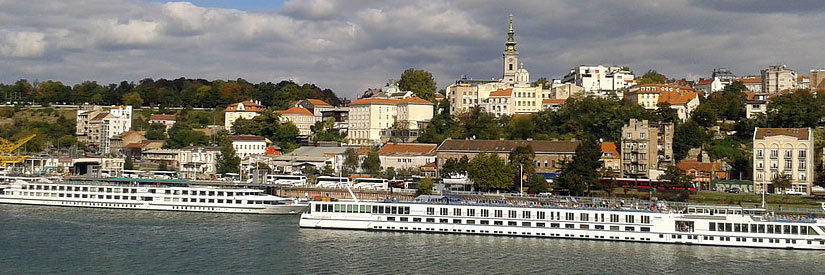
Planning a solo trip to Belgrade ? Here’s everything you need to know for your visit:
QUICK FACTS
- Belgrade is the capital of Serbia and its largest city, with ~ 1.4 million people.
- Located at the confluence of two rivers (the Danube and Sava).
- Has a rich and turbulent history – was the capital of the former republic of Yugoslavia.
- Nicknames: the White City (from its original name, Beograd ).
PRACTICAL INFORMATION
- Currency: Dinar (RSD)
- Spoken languages: primarily Serbian (Cyrillic alphabet)
- Best time to visit: from March to October (Belgrade has a mild continental climate)
- Arriving via airport (18 km from city): taking the bus will take about 40 minutes (80 dinars, about 1 Euro ). Taxi will cost 1,000 dinars (about 10 Euros ).
WHERE TO STAY
- Best hostel for solo travelers: El Diablo Hostel Belgrade . A cozy place (that’s still walking distance from the sights). Clean rooms, comfortable beds, friendly staff (shout out to Dragan!) make this the best choice in town. A true “home away from home” – as long as you can reserve your spot!
- Relative to other major cities in Europe, accommodation is very affordable in Belgrade.
- If you want to be centrally located to all the top attractions and nightlife options, book something near Stari Grad (old city).
GETTING AROUND
- If you are primarily interested in the main tourist attractions, it will be easy to see most of them on foot in the city’s centre. The wide streets and boulevards make navigation easy.
- Public transportation within the city includes bus , tram and trolleybus lines (run by GSP Beograd). The tickets can be bought from kiosks or directly from the driver (more expensive). The tickets must be punched when entering vehicle. There are cards with transportation (BusPlus) and discounts within the city.
- The Belgrade City Pass is recommended: it is valid for 72 hours and gives you plenty of discounts.
- Taxis : best avoided. Instead, consider hailing a ride through the CarGo or Yandex mobile apps.
BELGRADE NIGHTLIFE
- Drinking age is 18 , no official last call (some clubs are open all night).
- Belgrade is a top European nightlife destination – 40% of the population is young .
- Good clubs and discos can be found on the river banks .
- Hipster scene: Cetinjska Street ( Google Maps ). Specifically: Zaokret, Sprat Bar, and Polet.
- Great bars to check out: Vilidž bar, Kultura, Josephine Belgrade, and Monkey Bar.
UNIQUE LANDMARKS TO VISIT
- The Kalemegdan Fortress (Belgrade Fortress) has great historical significance for the city, having stood watch over the city for hundreds of years. The fortress has since been turned into a beautiful park with a military display and museums.
- Do not miss Skadarlija area, the old bohemian quarter of Belgrade, with old inns, craftsman shops, artist stands and a special romantic charm. Contrast it with the Knez Mihailova Street , the city’s main commercial street, with plenty of shops and cafes.
- The Saint Sava Cathedral , one of the major Orthodox sights in the world. Other churches worth a visit include: the Church of St. Mark , the Rose Church , Church of the Virgin Mother , and the Synagogue .
- Don’t miss the city’s iconic monuments and statues. The Victor , which erected in Kalemegdan Park , is a symbol of the city.
INTERESTING WALKS
- Walk along the banks of the Danube river, replete with active fisheries.
- Take a long walk through the Kalemegdan Park . Try going in the morning or evening, when it will be least crowded.
- Head over to Zemun . An old city that was added to Belgrade, Zemun is where you will find a more traditional and rustic setting.
- If you are into shopping or street art, walk along the Knez Mihailova , the main commercial street.
LOCAL WISDOM
- Try to visit Belgrade during one of the summer festivals. The Beer Festival is a big party – you will find many concerts and a huge area filled with beer tents.
- You might encounter people offering euros for exchange on street corners – don’t fall for this . Only trade money at exchange offices .
- Great restaurants to try in Belgrade: Durmitor ($$ – make a reservation), Restoran Dren, Bistro Gladni Vuk, Ambar ($$$), and Znak Pitanja (Question Mark).
- Where to find good cheap eats : just like alcohol, food is very affordable in Belgrade. Try the delicious local food, including the meat and fish recipes in local restaurants. Do not forget to taste the local rakija (a strong alcoholic drink), as well as the local beers.
- Dangerous areas : the area around the train station , and the river banks (at night).
Recommended trip duration: 2-3 days
- Budapest, Hungary
- Prague, Czech Republic
- Bratislava, Slovakia
- Vienna, Austria
- Split, Croatia
- Zagreb, Croatia
- Dubrovnik, Croatia
Leave a Reply Cancel reply
Your email address will not be published. Required fields are marked *
Save my name, email, and website in this browser for the next time I comment.
- Edit source

Map showing the location of Serbia.
- 1 Hotels and lodging
- 2 Attractions
- 4.1 Getting to Serbia
- 4.2 Exploring Serbia
- 5 Practical information and resources
- 6.1 Text with links to user-reviews on other pages
- 7 Nightlife
- 8 Photo gallery
- 9 Everything else
- 10 External resources
Hotels and lodging [ ]
- Bali Paradizo Hotel ( Belgrade )
Attractions [ ]
Shopping [ ], maps and transportation [ ], getting to serbia [ ], exploring serbia [ ], practical information and resources [ ], restaurants [ ], text with links to user-reviews on other pages [ ], nightlife [ ], photo gallery [ ], everything else [ ], external resources [ ].
Add links to other sites here
- 1 Train hopping in the United States
- 2 Smithsonian National Zoo
- 3 Siem Reap

Naslov 3 Dolor sit amet
Serbia’s charming cities exude a unique atmosphere, inspiring visitors to return to them again and again.
From the tranquil townlets of the northern plains of Vojvodina, to the bustling large cities with an air of metropolises, to university towns buzzing with young people thirsty for knowledge, to the ancient Serbian capitals which witnessed important historic events - the country’s cities provide a thorough insight into life in these parts, throughout history. Stroll down their streets and pedestrianised areas, visit the urban parks and squares, have a bite at a local restaurant or enjoy a night out at one of the clubs or traditional Serbian coffee houses... The country’s vibrant urban centres, heaving with life, offer plentiful opportunities for holidays and entertainment and frequently host major sport and arts events, which bring the whole world to Serbia. All you have to do is pick the city that sparks the greatest intrigue and get ready to embark on a true adventure.
-0-1280x768.jpg)
INOVATION FAIR
-1-720x342.jpg)

IMAGES
VIDEO
COMMENTS
230V/50Hz (European plug) Country code. +381. Internet TLD. .rs. Time Zone. UTC +1. Serbia ( Serbian: Србија, Srbija) [1] is a country located in the Balkans, in southeast Europe. It was a founder and one of the six republics of the former Socialist Federal Republic of Yugoslavia.
Serbia, officially the Republic of Serbia, is a landlocked country at the crossroads of Southeast and Central Europe, located in the Balkans and the Pannonian Plain.It borders Hungary to the north, Romania to the northeast, Bulgaria to the southeast, North Macedonia to the south, Croatia and Bosnia and Herzegovina to the west, and Montenegro to the southwest. . Serbia claims a border with ...
Serbia (Serbian: Србија, Srbija) is a Balkan country in Southeastern Europe.It is at the crossroads of European history, and as such is a mix of cultures, ethnicities and religions. It lies on one of the major land routes from Central Europe to the Near East.It was the dominant component of Yugoslavia, and considered to be its natural successor.
Tourism in Serbia. Tourism in Serbia is officially recognized as a primary area for economic and social growth. [1] The hotel and catering sector accounted for approximately 2.2% of GDP in 2015. [2] Tourism in Serbia employs some 120 000 people, about 4.5% of the country's workforce. [1] In recent years the number of tourists is increasing.
Belgrade is the capital of Serbia and is, as such, the country's largest city with a population of about 1.7 million people. It lies on the confluence of the two major European rivers, Sava and Danube. The city has a long history, dating back to the 4th century BC when the area was settled by Celtic tribes. Later on, it became the Roman city of Singidunum, and relics of that era can still be ...
Belgrade (Serbian: Београд, Beograd) is the capital of the Republic of Serbia and the country's largest city. Belgrade has been re-emerging as a tourist destination in the past years. Often called the party capital of Southeastern Europe, Belgrade is famous for offering numerous entertainment venues, many historical sites, great local food, and warm people.
Travel to Serbia might still raise a contentious debate. Over 18 years ago, ethnic conflicts were still tearing apart a region of Europe, formally known as Yugoslavia. An ethnic divide amongst six republics fighting for independence and control raged for ten years from 1991, leaving a chunk of the continent - a country of South Slavic nations ...
4. Mountains, monasteries, and skiing. From Novi Sad, make the 13mi (22km) drive south to Fruška Gora, Serbia's oldest national park. Hike or cycle on clearly marked trails through linden, oak, and beech forests, in gentle mountains bursting with wildflowers and weird fungi.
Read this travel advice and carry out your own research before deciding whether to travel. Emergency services in Serbia. All emergencies: 112. Ambulance: 194. Fire: 193. Police: 192. Contact your travel provider and insurer. Contact your travel provider and your insurer if you are involved in a serious incident or emergency abroad.
Serbia, officially the Republic of Serbia, is a landlocked country at the crossroads of Southeast and Central Europe, located in the Balkans and the Pannonian Plain. It borders Hungary to the north, Romania to the northeast, Bulgaria to the southeast, North Macedonia to the south, Croatia and Bosnia and Herzegovina to the west, and Montenegro to the southwest. Serbia claims a border with ...
The trip starts in the capital city of Belgrade, where you can explore the bohemian heart of the city. You will be able to explore the natural and historic beauty of Serbia like Tara National Park and the century-old winery Aleksandrović. view trip ⤍. 17 days / from 3432 USD. Balkan Puzzle.
Pozarevac - one of the oldest cities in Serbia with a large historic heritage. An important commercial and cultural center, in addition to the Velika Morava river, is situated about 80 kilometres east of Belgrade. Subotica - has been rated as one of the most beautiful cities of Serbia. Smederevo. Čačak.
Serbia (Serbian: Република Србија / Republika Srbija), officially the Republic of Serbia (Serbian: Србија / Srbija), is a country in Southeastern Europe, and a part of the Balkans.The capital city is Belgrade.To the north of Serbia is the country Hungary.To the east of Serbia are the countries Bulgaria and Romania.To the south of Serbia is the country North Macedonia and ...
Welcome to Serbia! Serbia, situated at the very heart of the Balkan peninsula, where the paths of many peoples and civilisations have crossed since ancient times, is a country undergoing rapid cultural, economic and commercial development. Get to know Serbia at one of its many art, music and gastronomic festivals or even at one of its sport events.
To explore everything Serbia has to offer, make sure to wander off the beaten track and peek inside its hidden nooks and crannies.Here you will find traditional, rural households open to tourists wanting to experience the authentic atmosphere of a Serbian village.People living in these rural households enjoy a simple, traditional life, at harmony with nature and away from the hustle and bustle ...
Experience Serbia. With its richly diverse culture and gastronomy, Serbia offers exhilarating new experiences which are guaranteed to make for an unforgettable visit.Be sure to check out one of the many film, music and culinary festivals, which bring hundreds of thousands of people to Serbia every year. Experience Serbia.
QUICK FACTS. Belgrade is the capital of Serbia and its largest city, with ~ 1.4 million people. Located at the confluence of two rivers (the Danube and Sava). Has a rich and turbulent history - was the capital of the former republic of Yugoslavia. Nicknames: the White City (from its original name, Beograd ).
Serbia offers visa-free travel for up to ninety days for citizens of many countries. Serbia is not part of the EU or the Schengen Zone. However, many people can visit Serbia without needing to obtain a travel visa. Americans, Canadians, Mexicans, and most Europeans can visit Serbia for ninety days visa-free.
The Tourism Organisation of Serbia (TOS) was formed under the Law on Tourism of 1994 as the institution in charge of promoting Serbian tourism in domestic and foreign markets, as well as performing other duties relevant for the development of communication and advertising activities in Serbian tourism.
With its richly diverse culture and gastronomy, Serbia offers exhilarating new experiences which are guaranteed to make for an unforgettable visit.Be sure to check out one of the many film, music and culinary festivals, which bring hundreds of thousands of people to Serbia every year. Our country's museums and galleriesdisplay artefacts of ...
Serbia: Country • Capital • Flags: World; Continents • Countries • Cities • Mountains • Oceans • Seas • Lakes • Rivers and canals • National parks • Forum • Chat • Blogs • Polls • Photos • Videos: Republic of Serbia ... Travel Wiki is a FANDOM Lifestyle Community.
Search. See Serbia. Serbia's enchanting landscapes are a true feast for the eyes and soul. Whichever region of Serbia you choose to visit, you are guaranteed to leave with lasting impressions of its magical scenery and unrivalled experiences. Climb one of Serbia's high mountains, fill your lungs with the crisp, fresh alpine air and immerse ...
From the tranquil townlets of the northern plains of Vojvodina, to the bustling large cities with an air of metropolises, to university towns buzzing with young people thirsty for knowledge, to the ancient Serbian capitals which witnessed important historic events - the country's cities provide a thorough insight into life in these parts, throughout history.